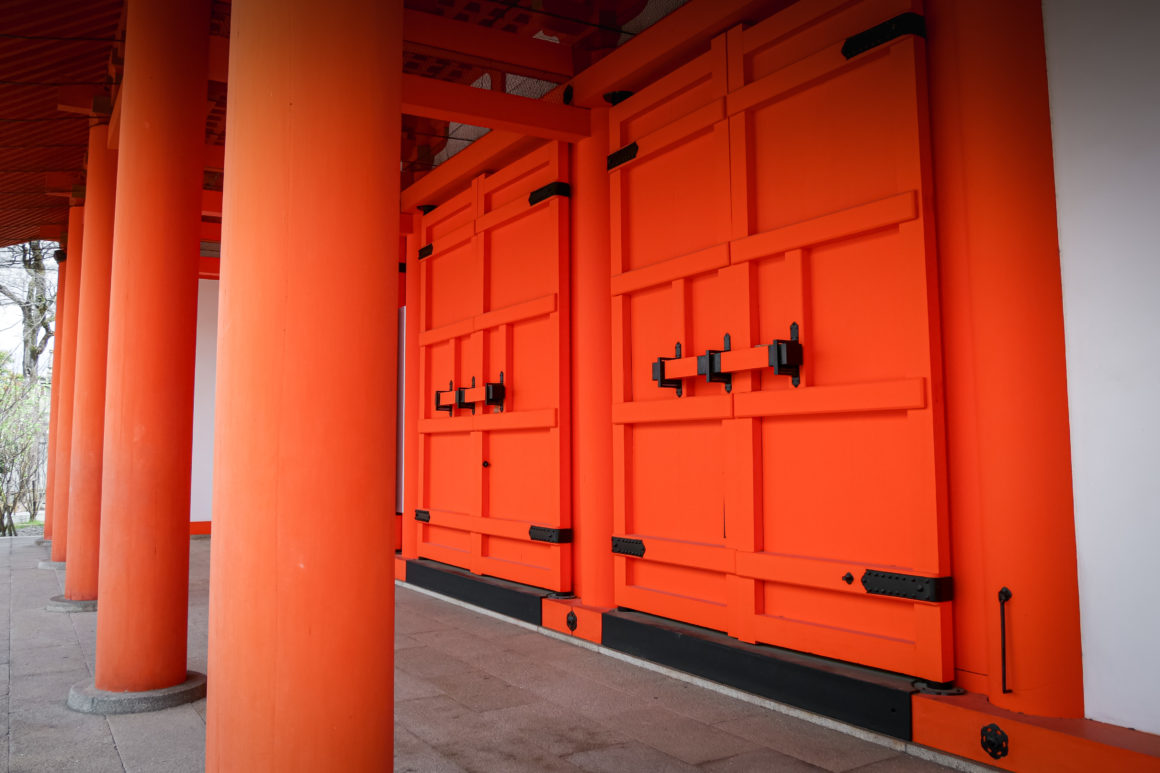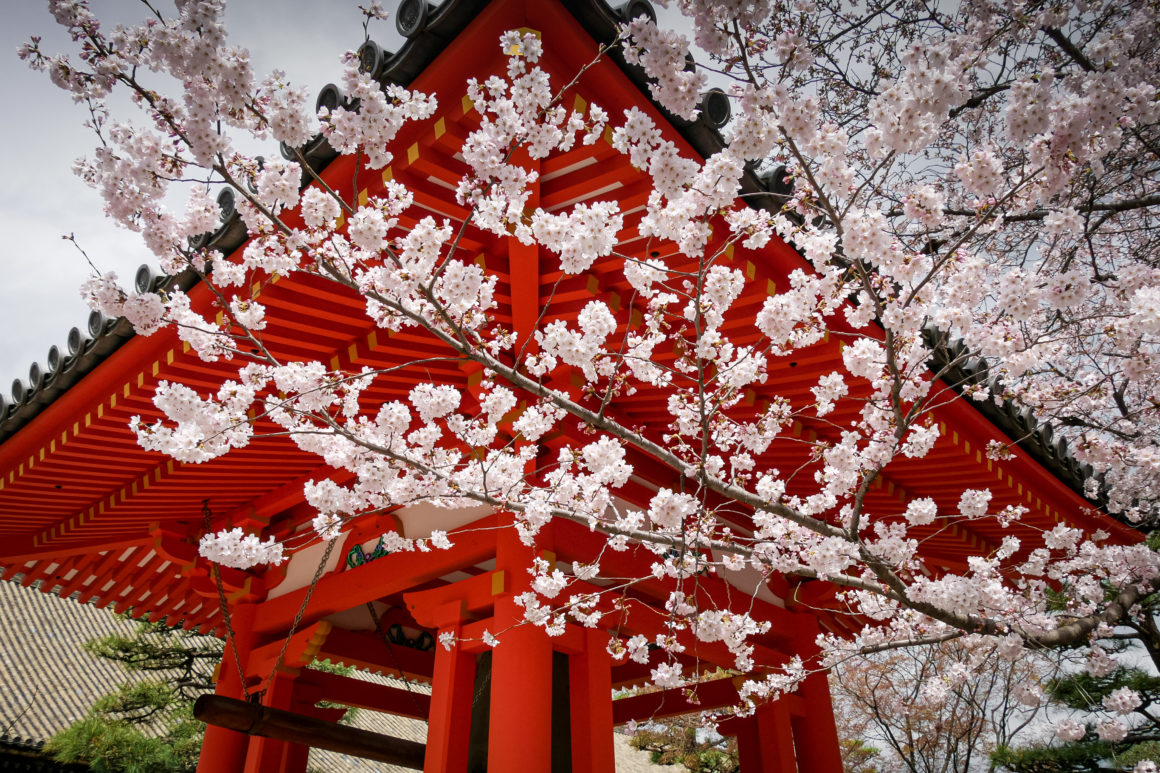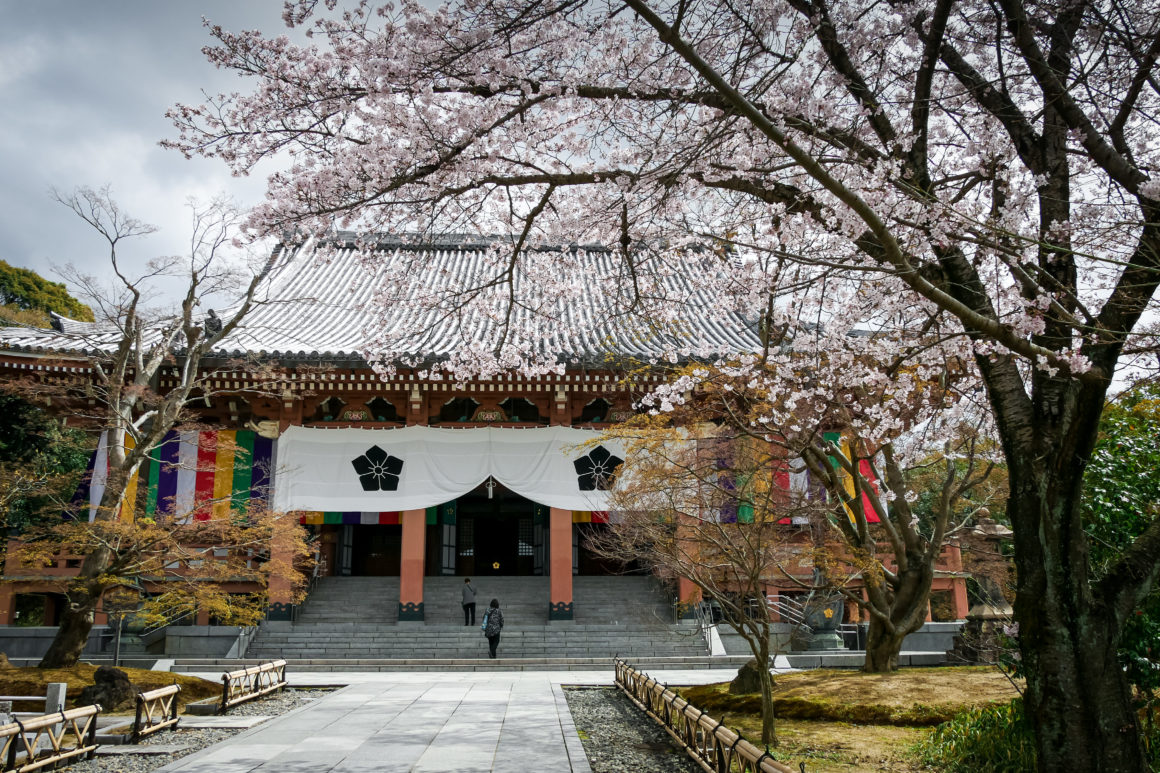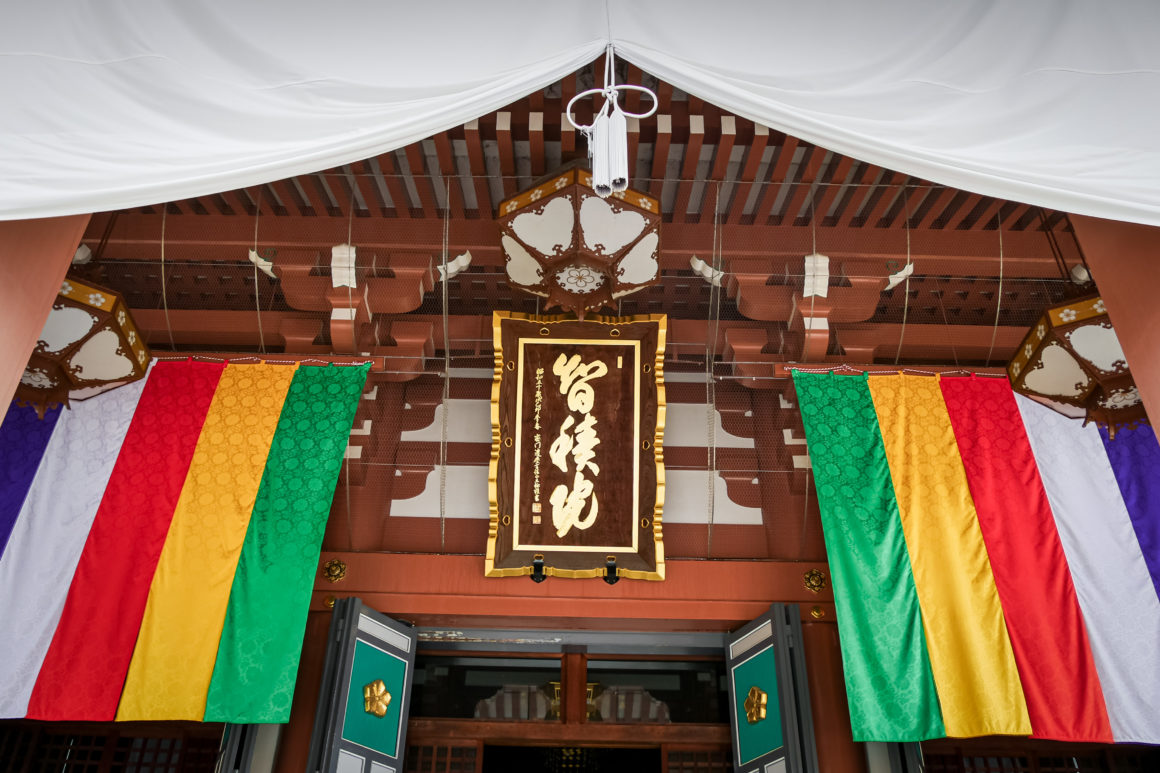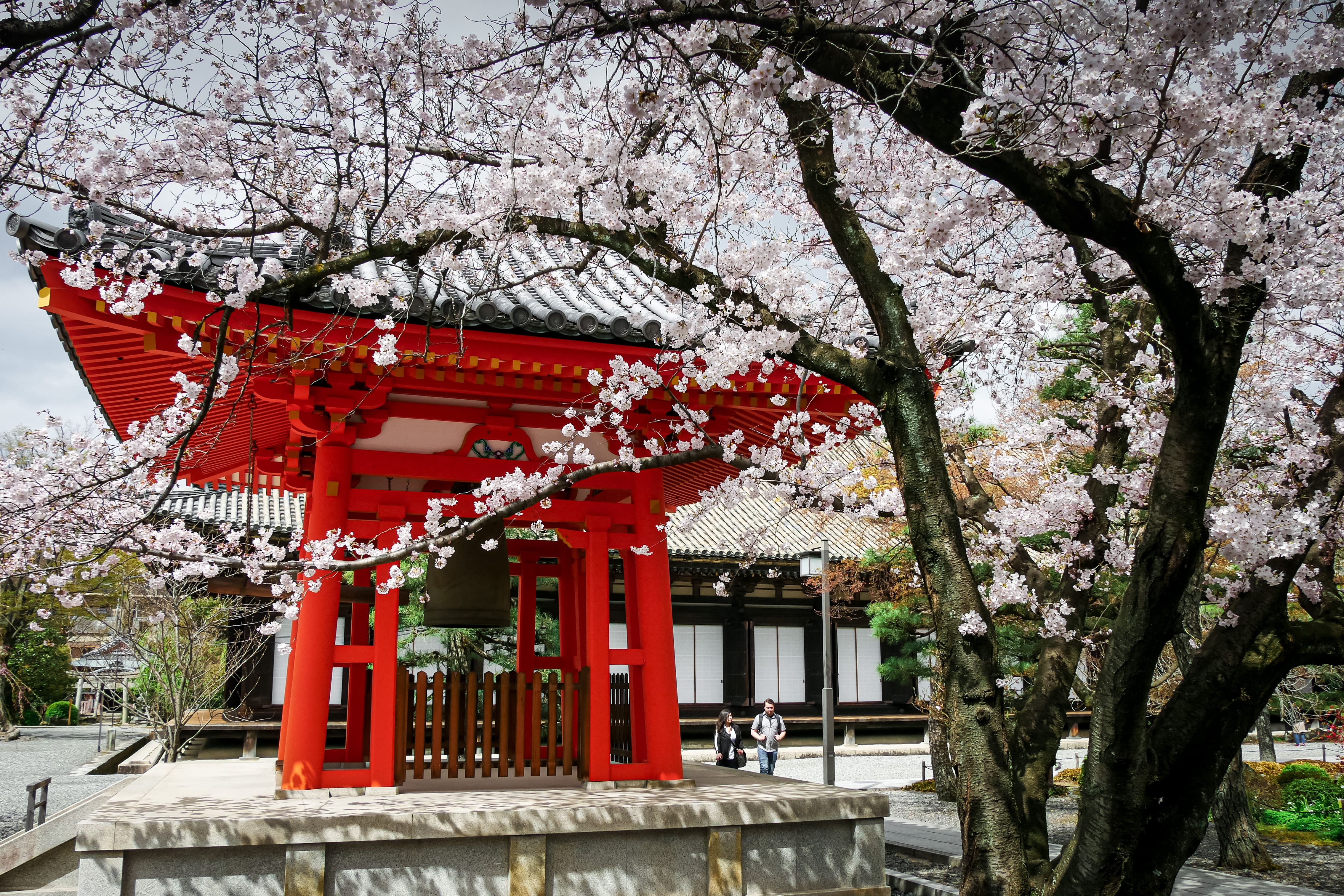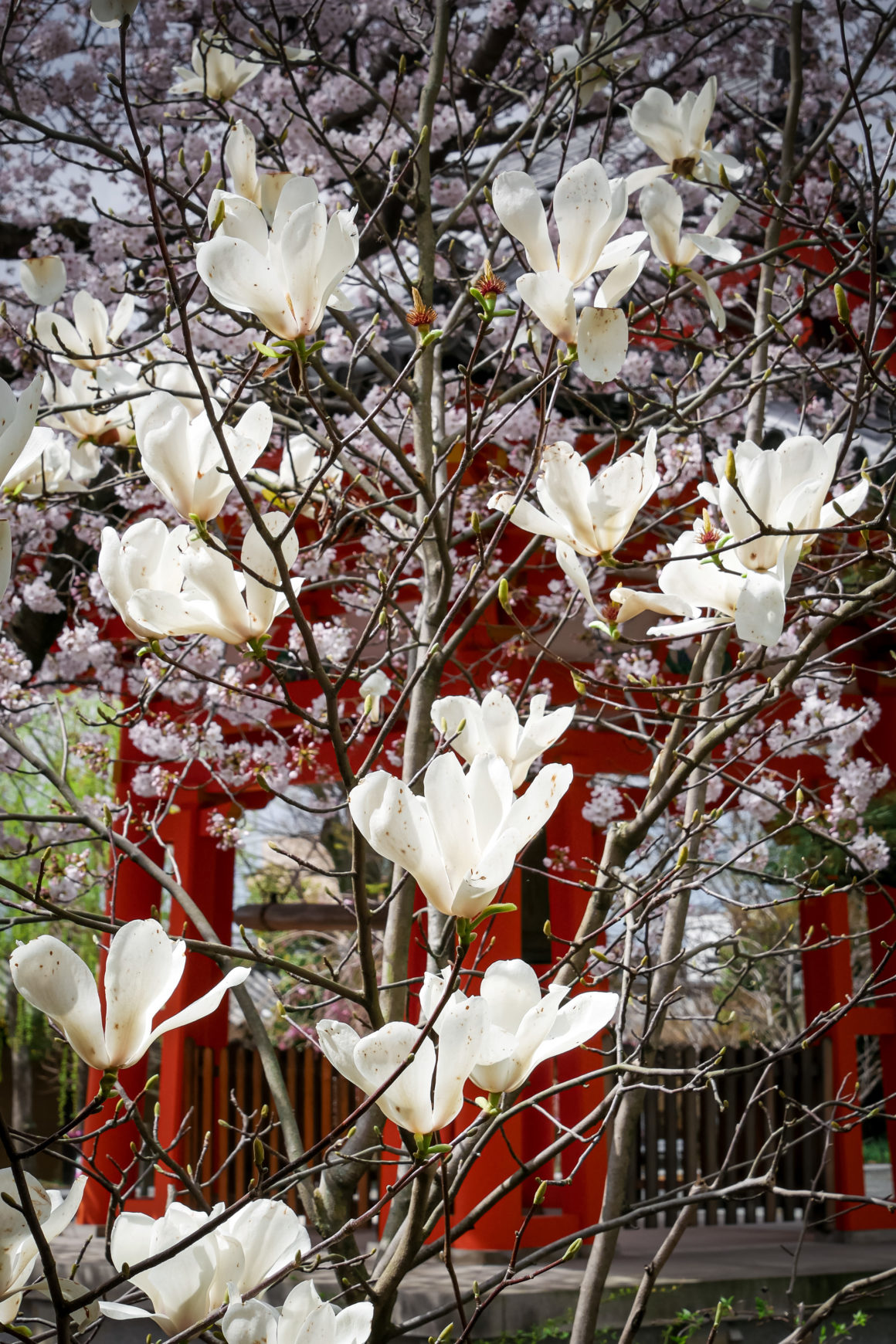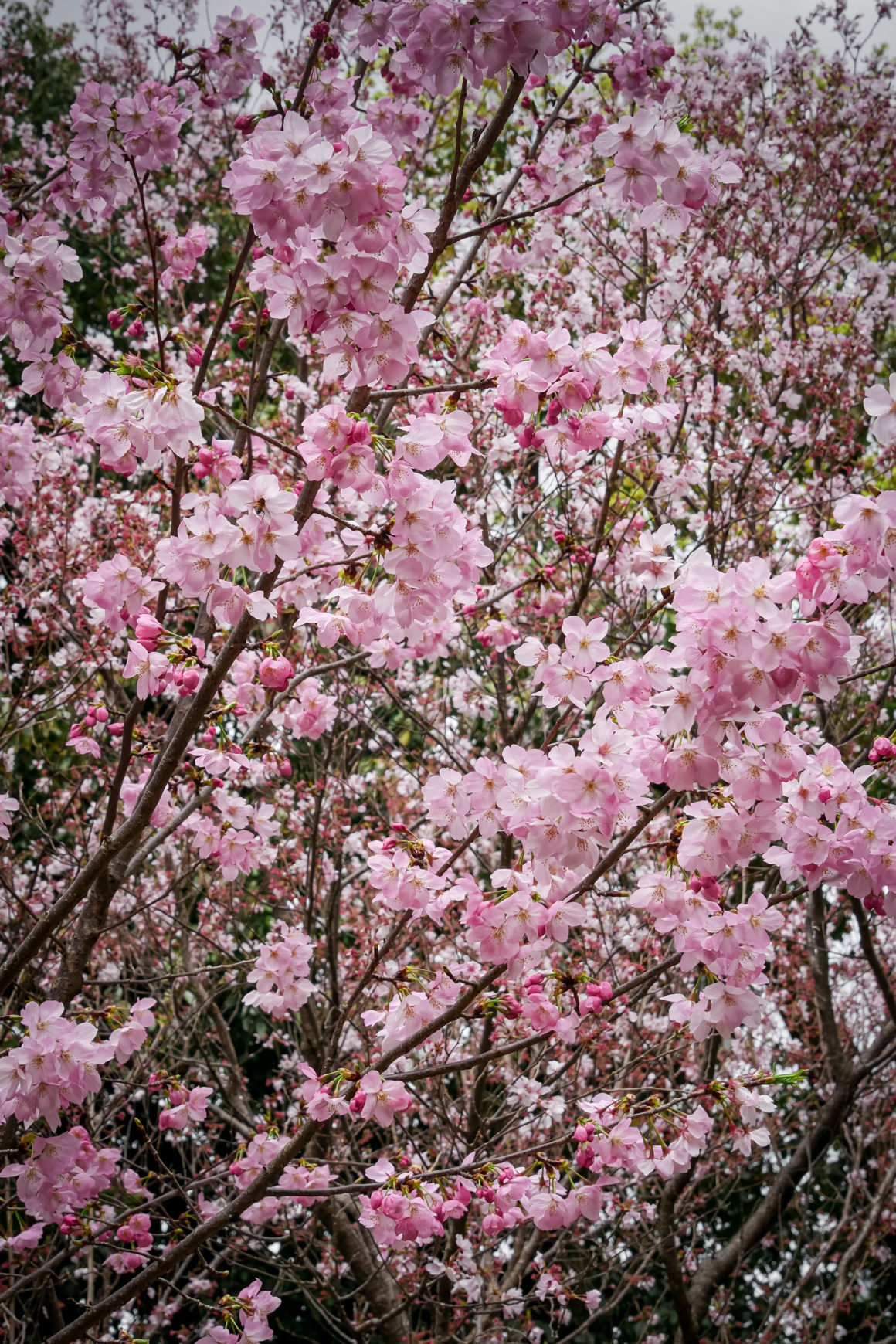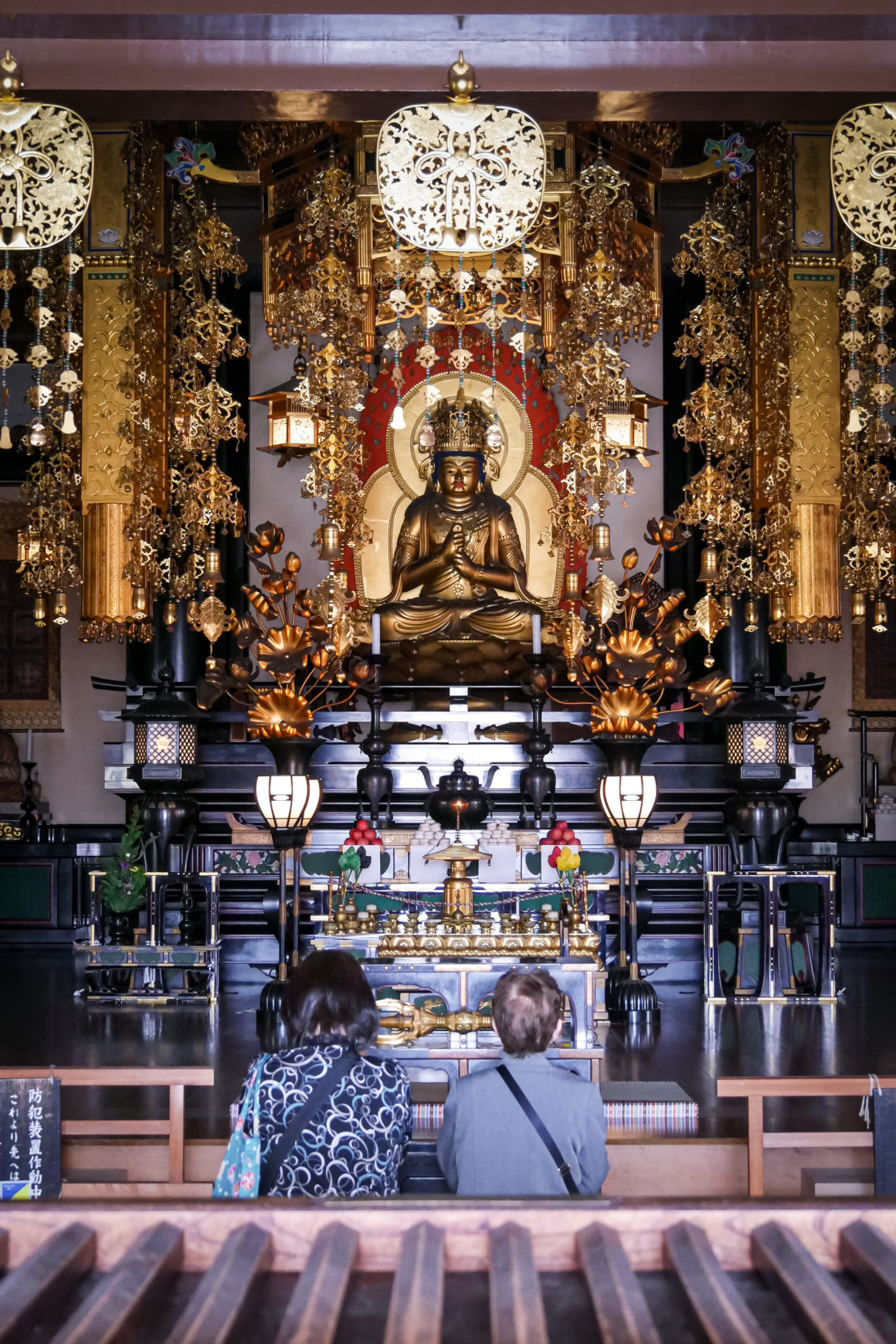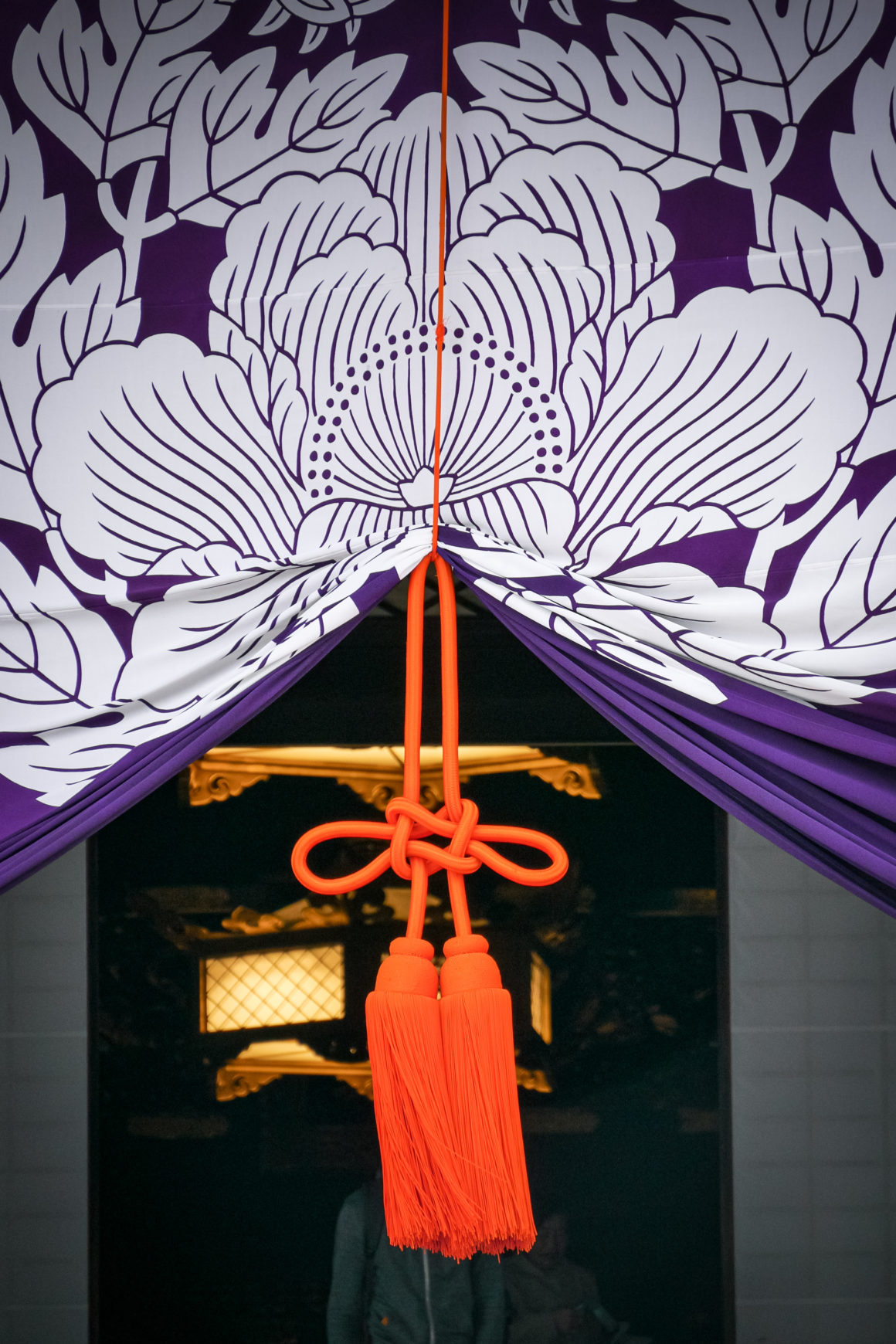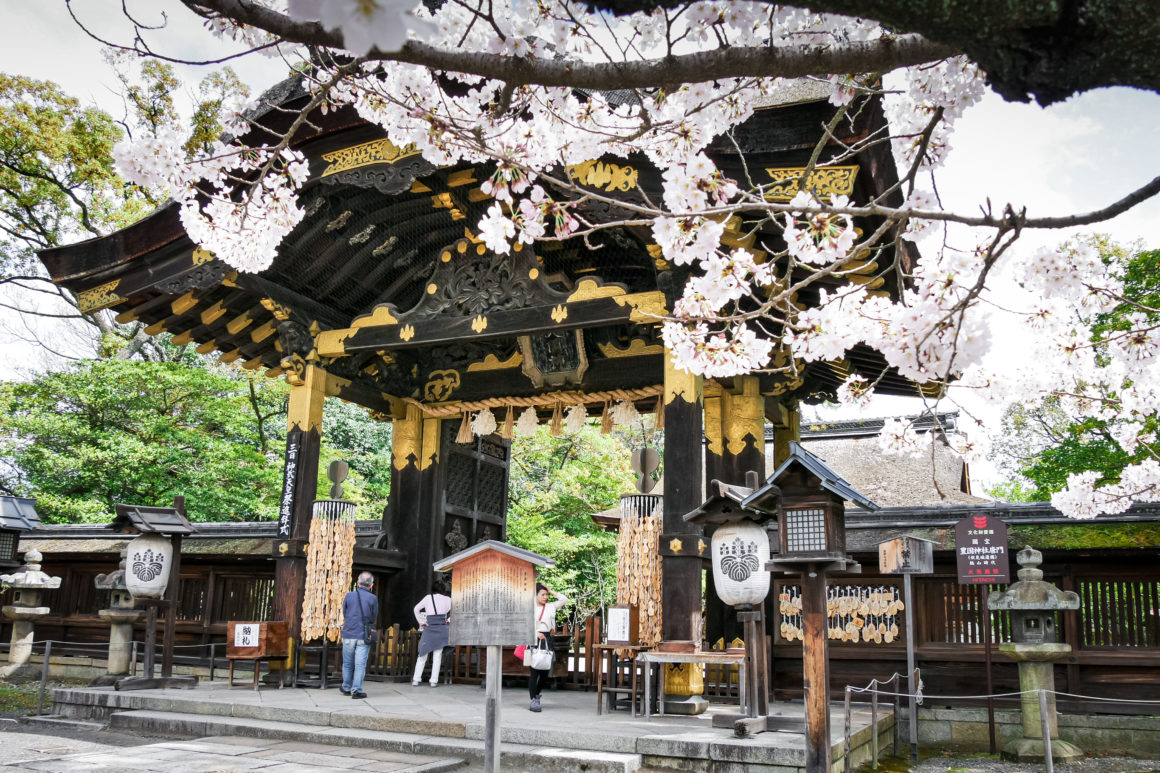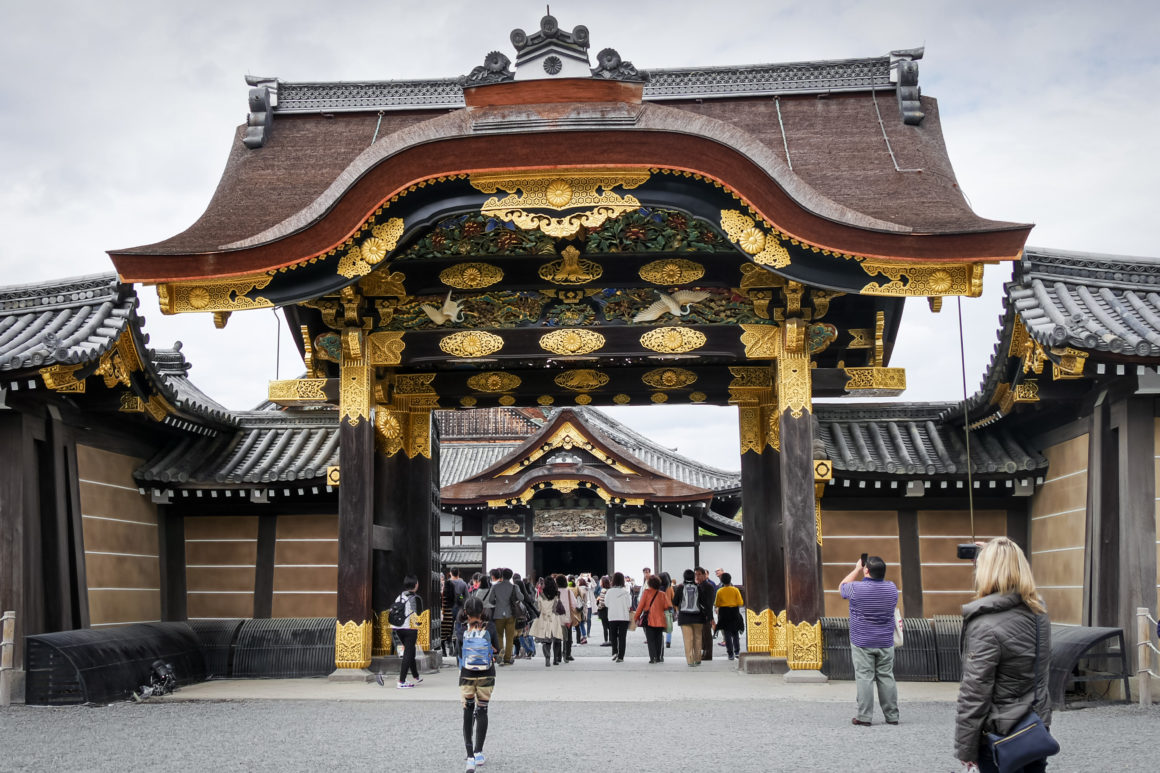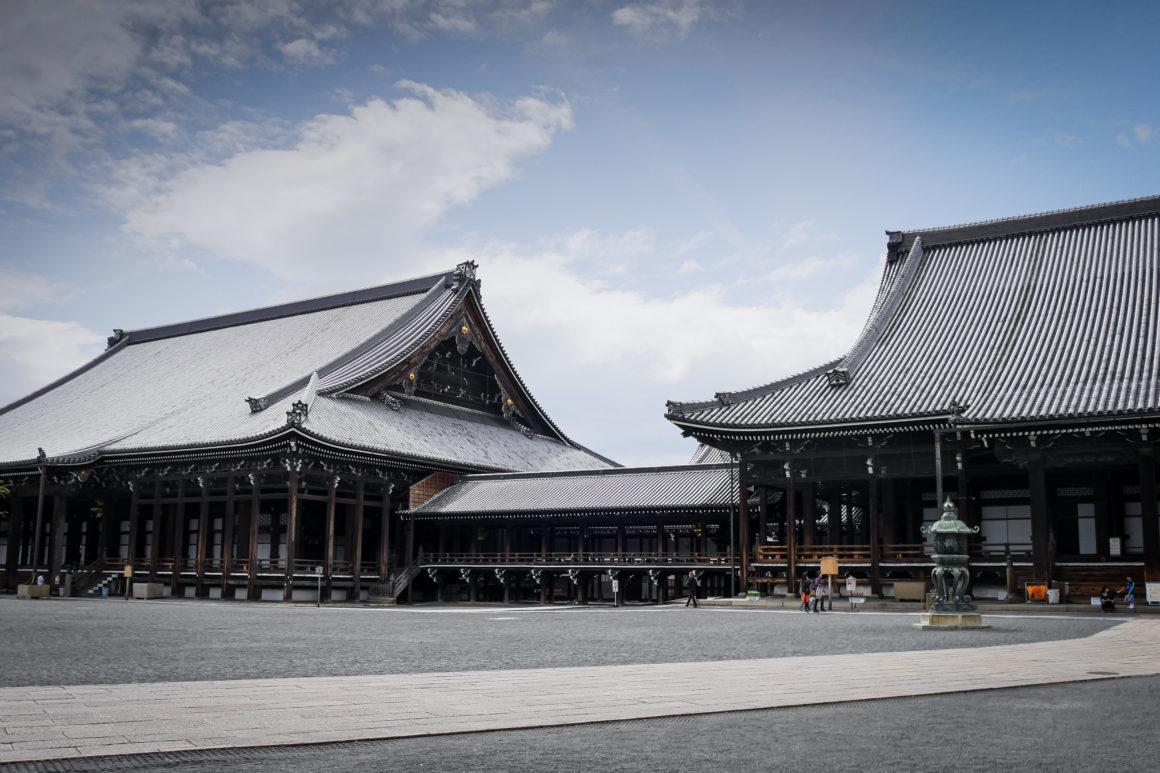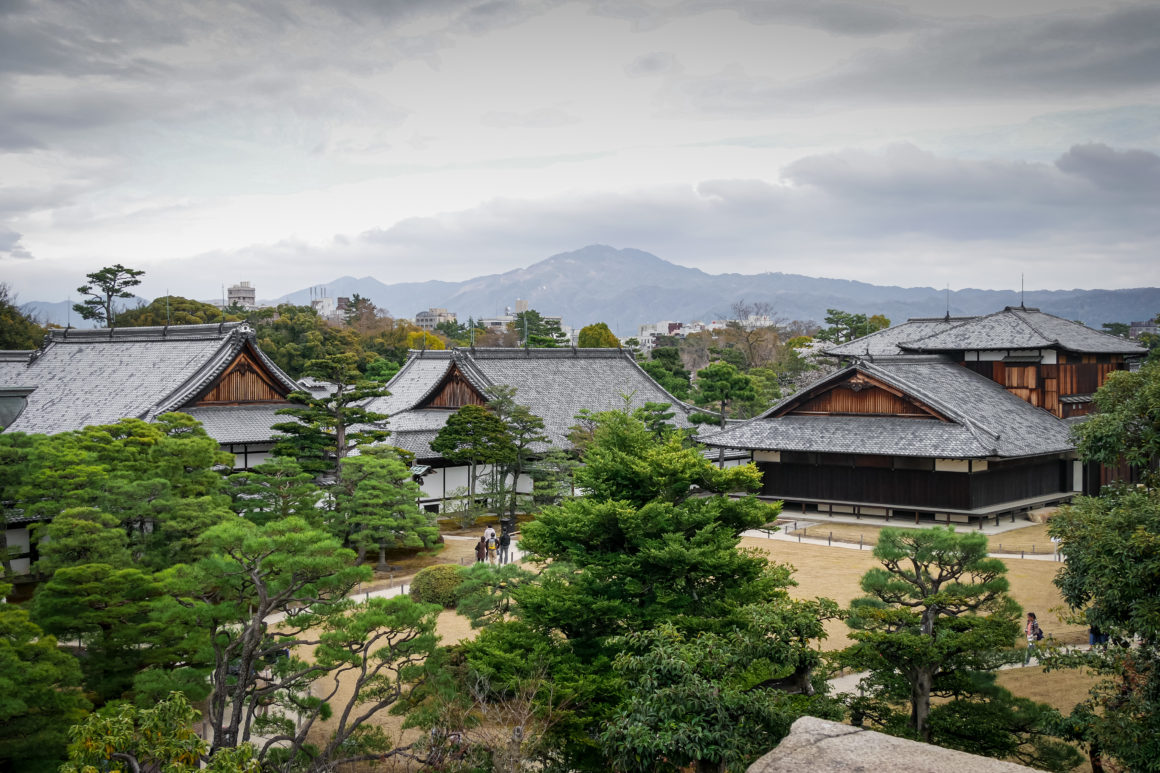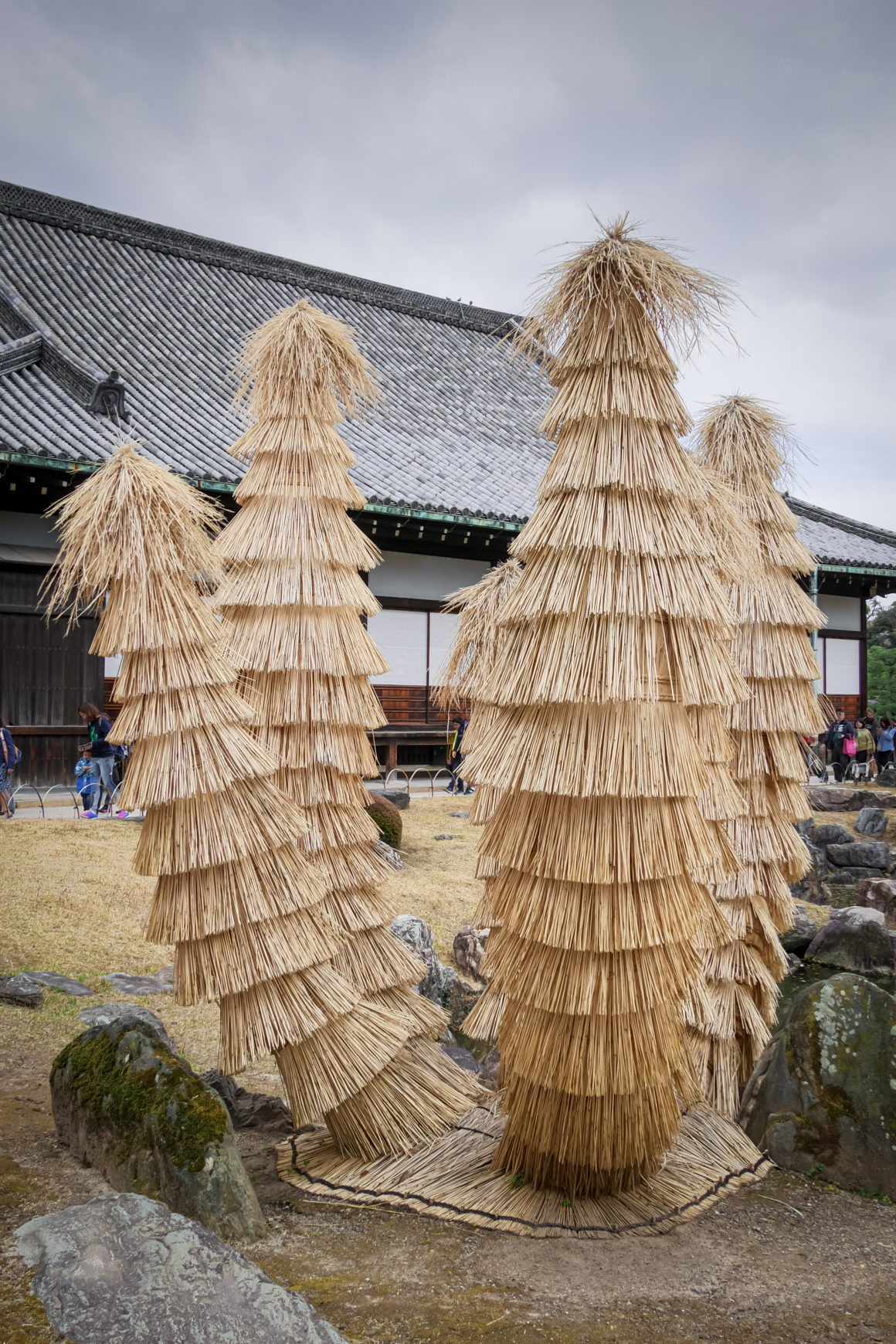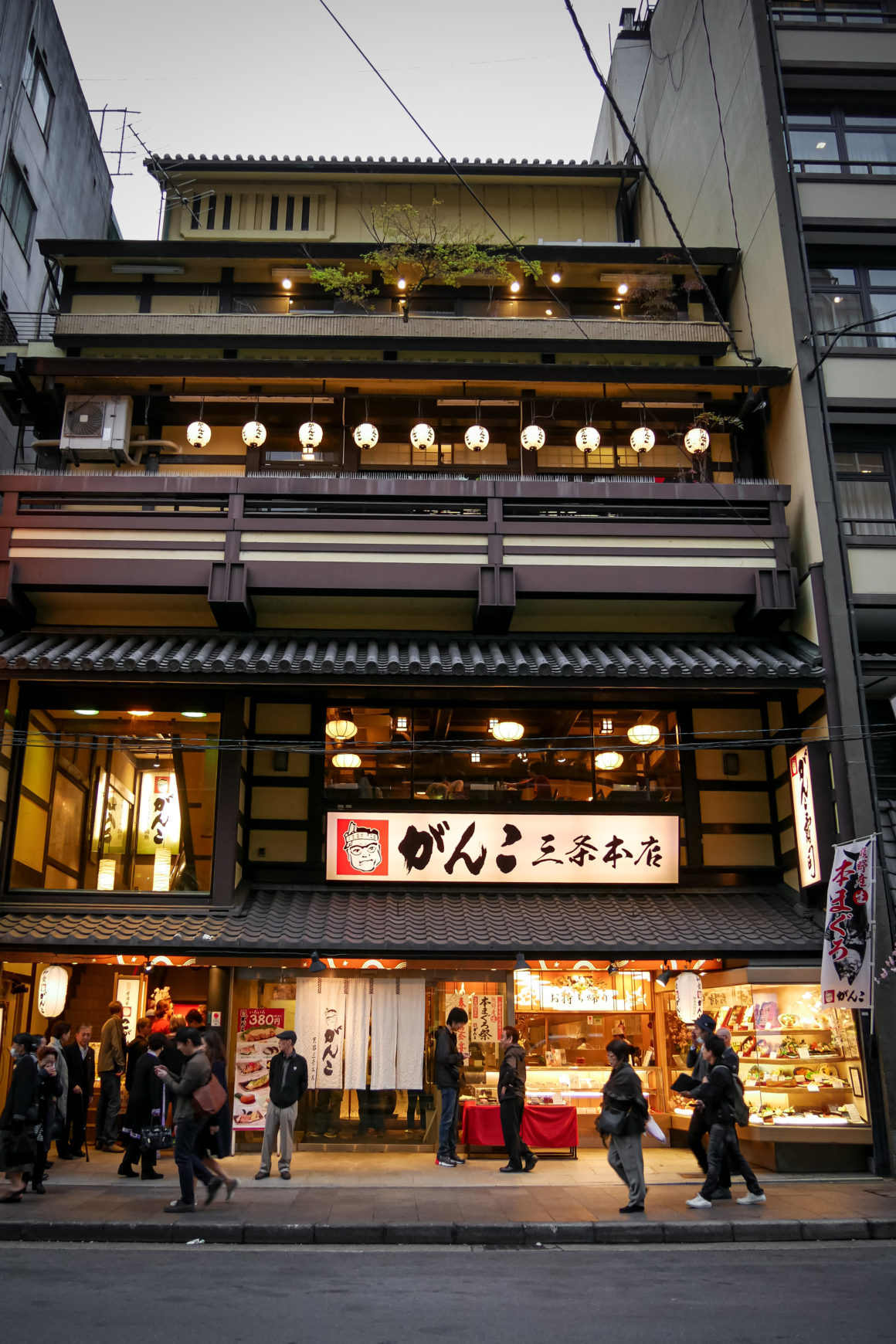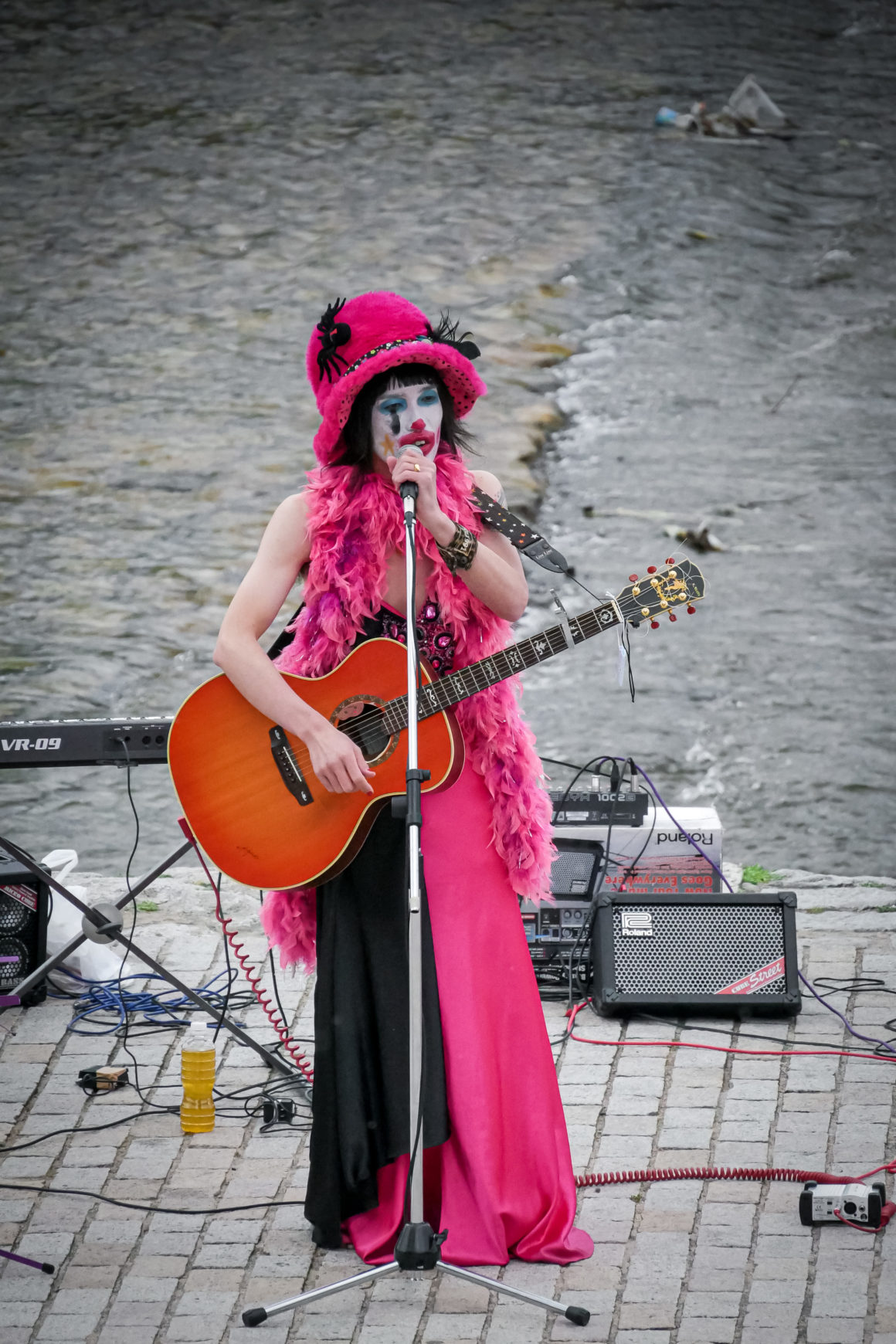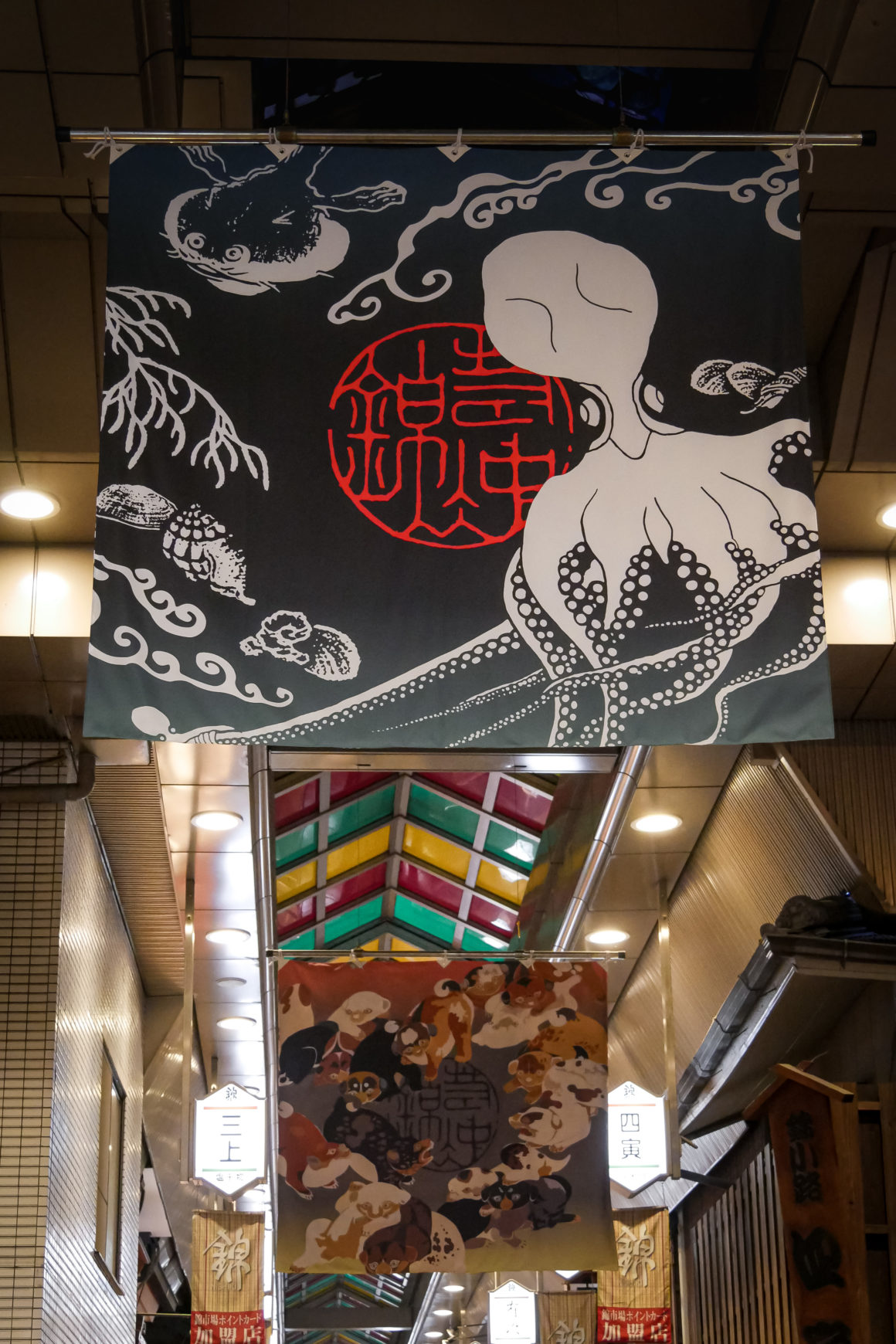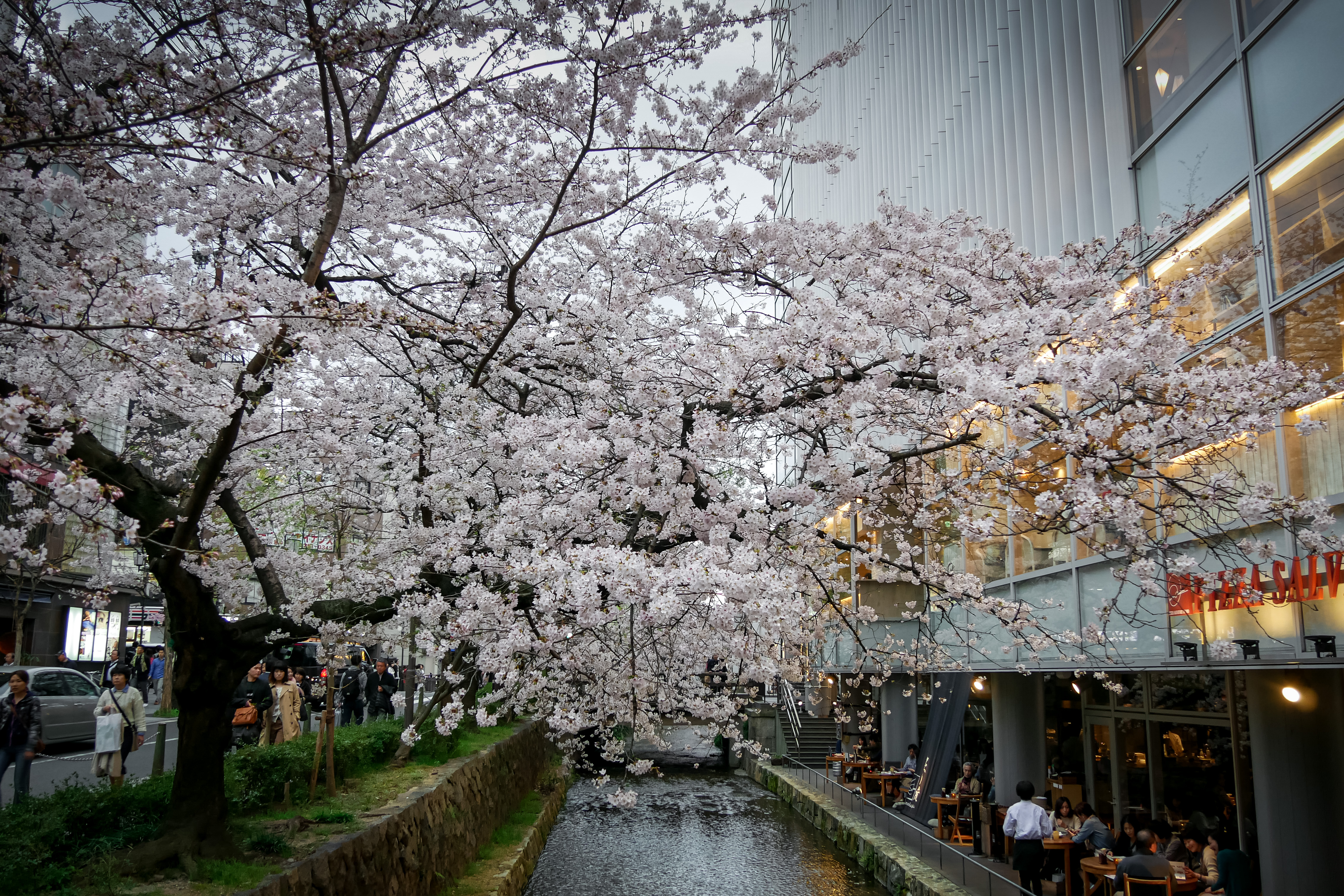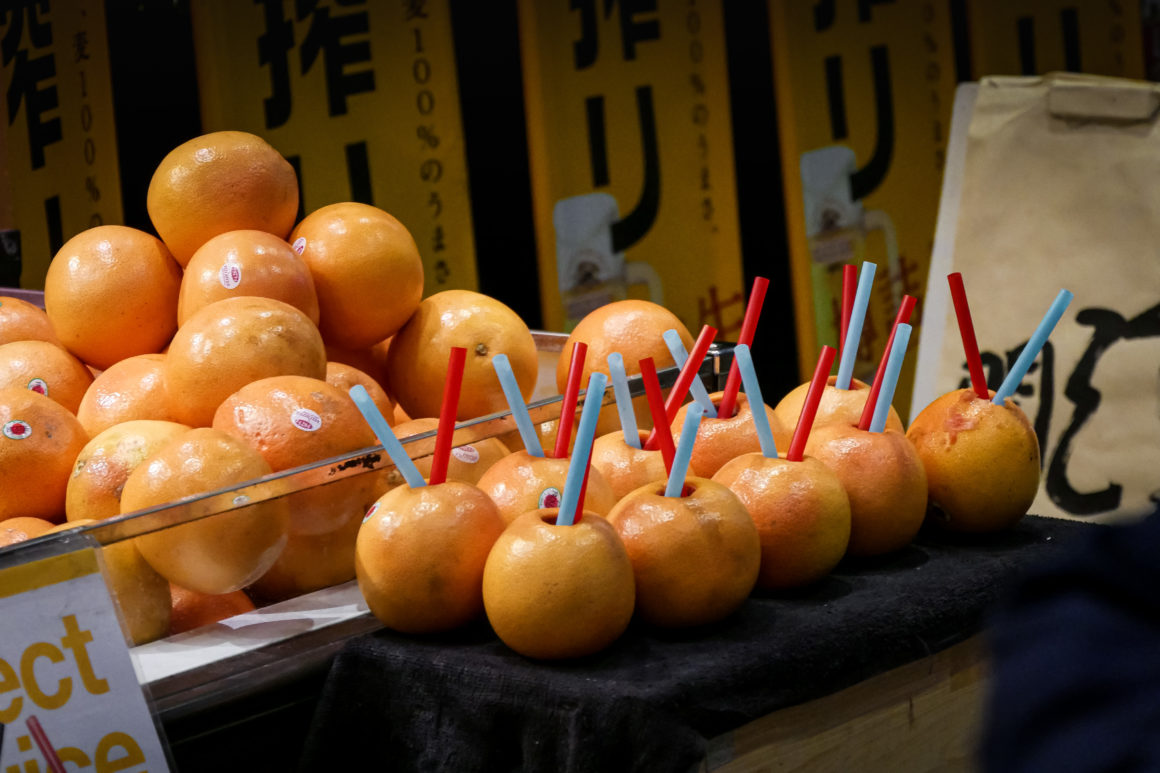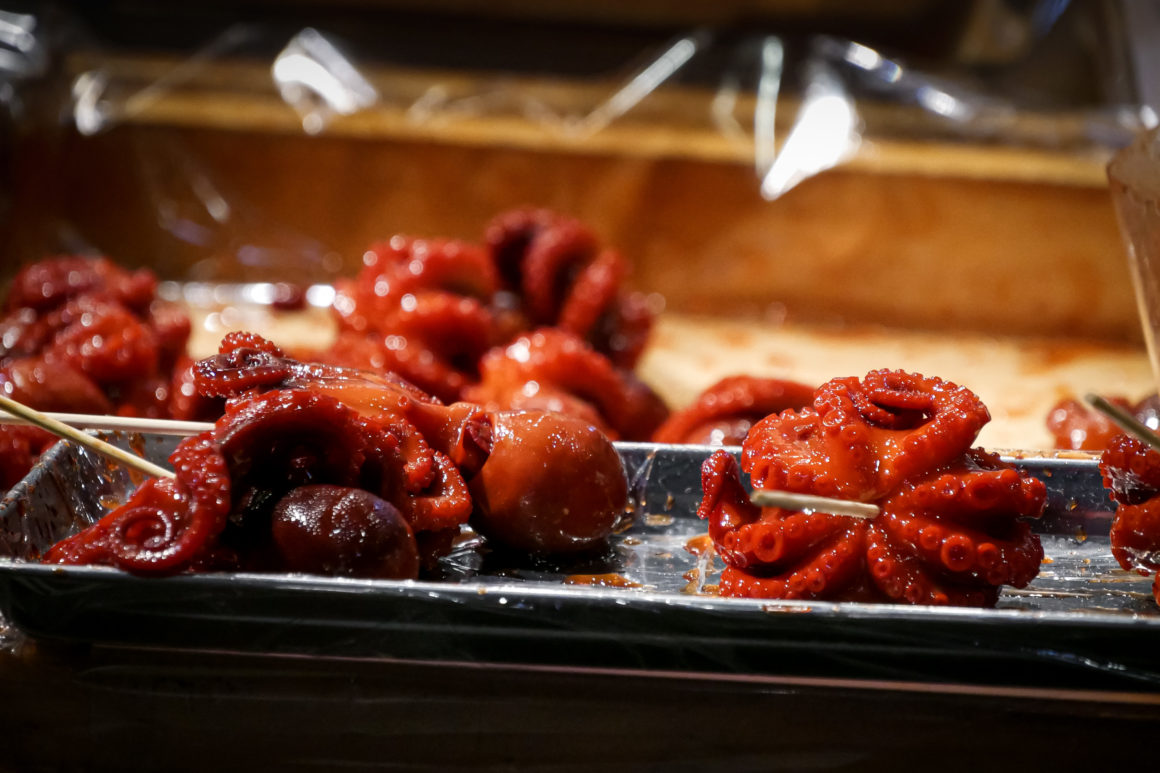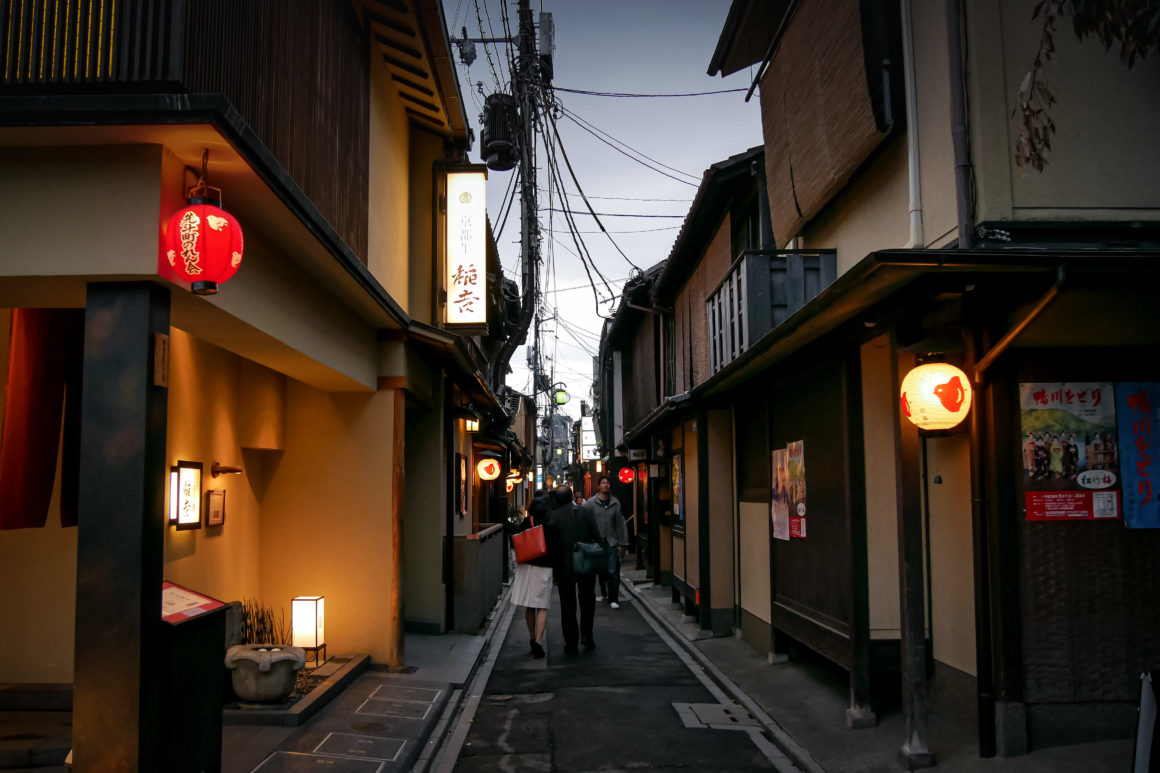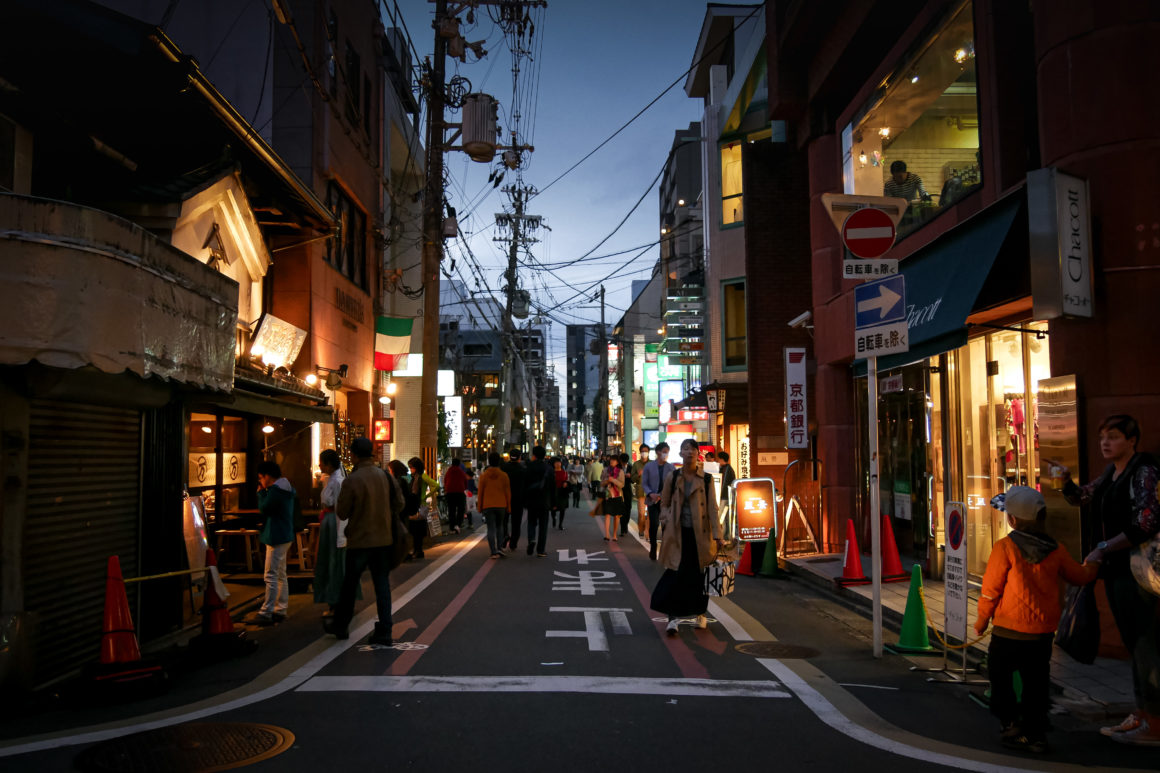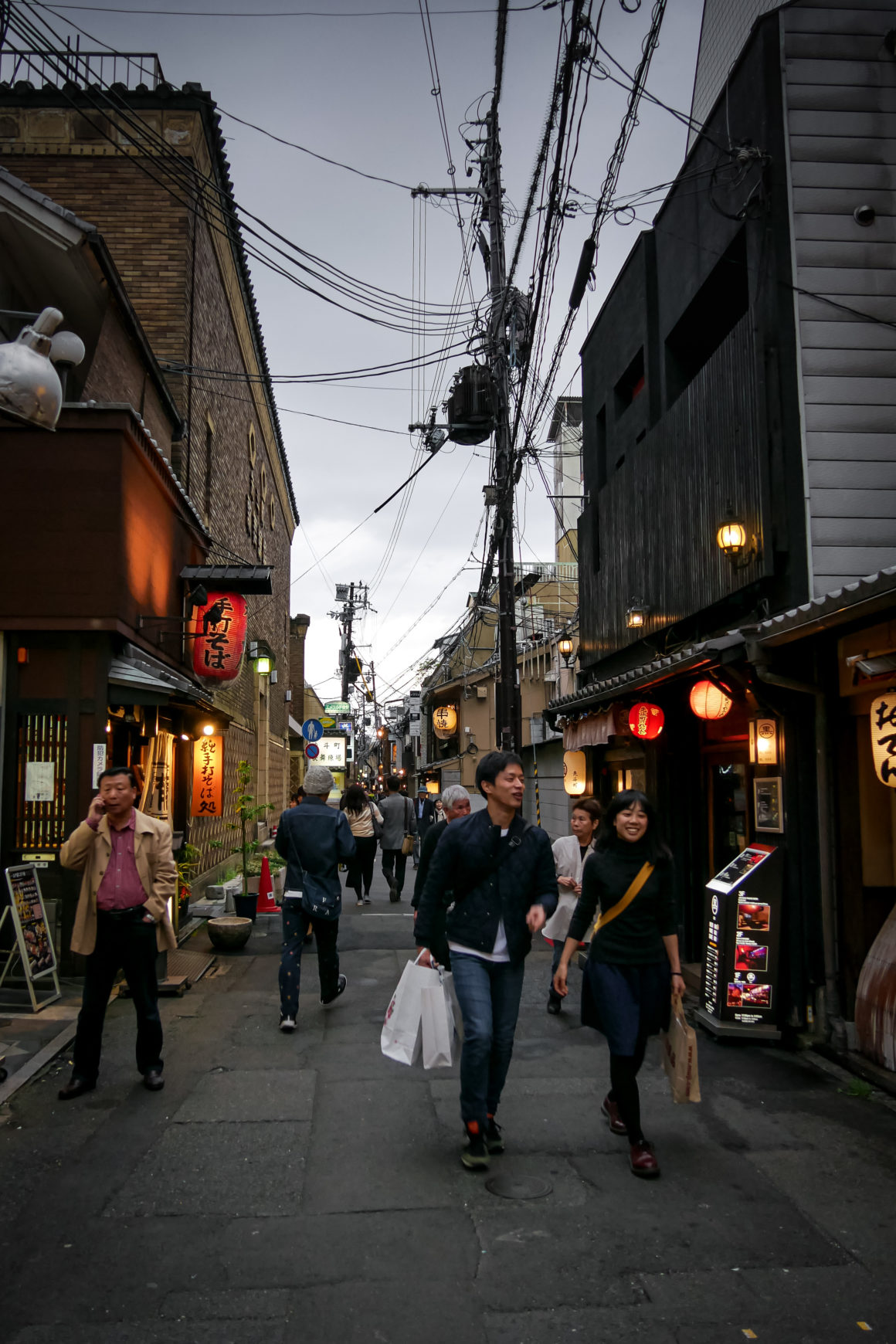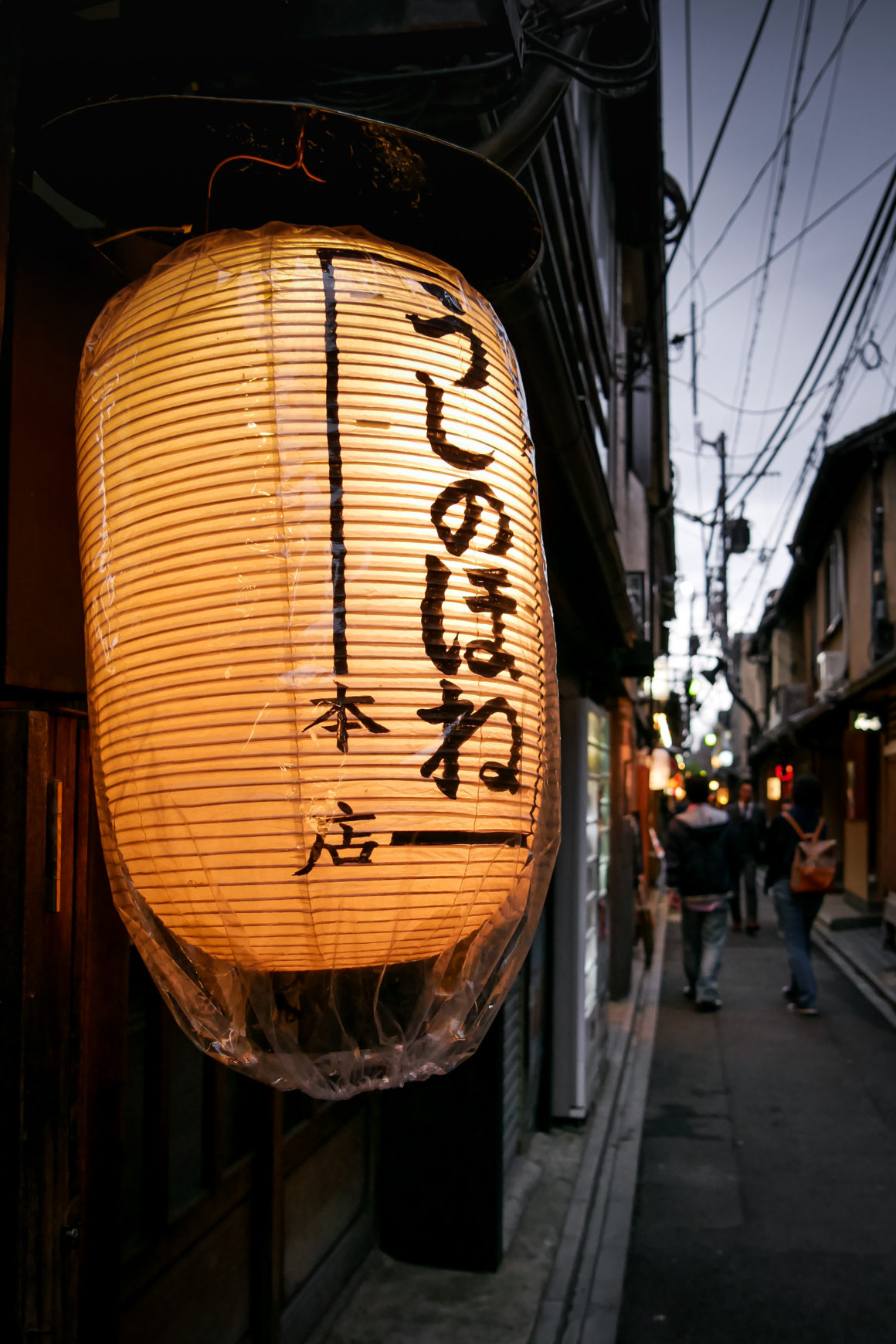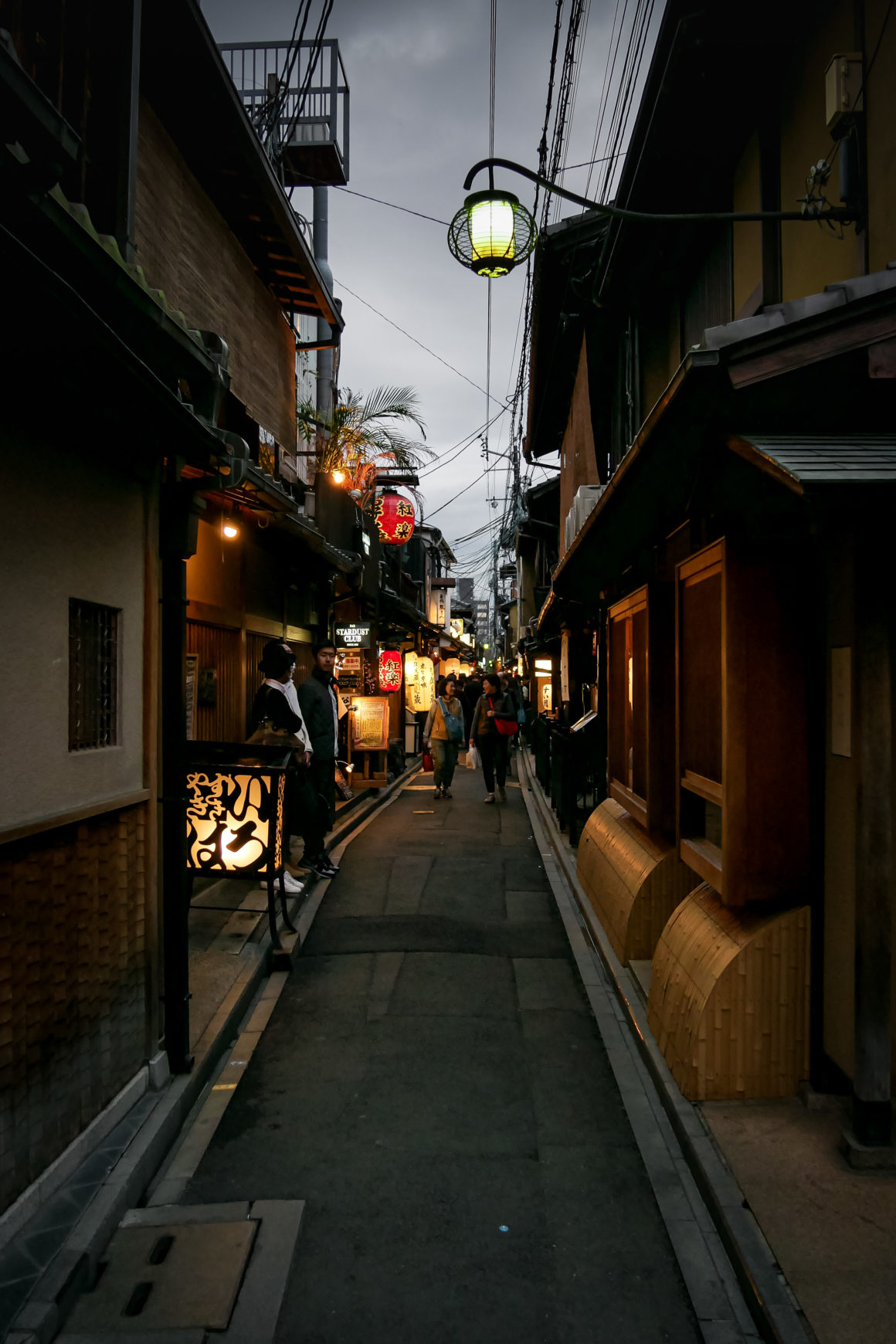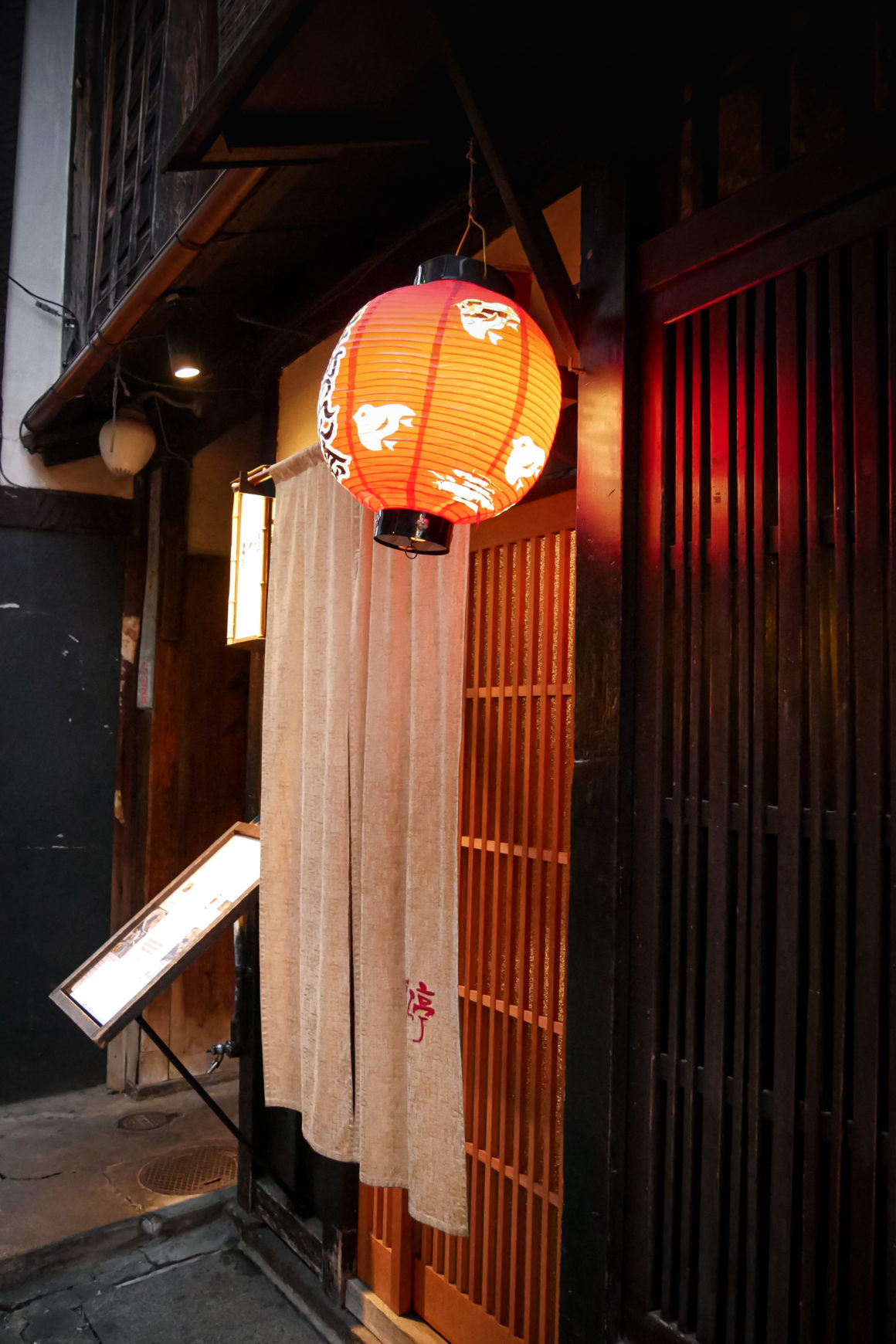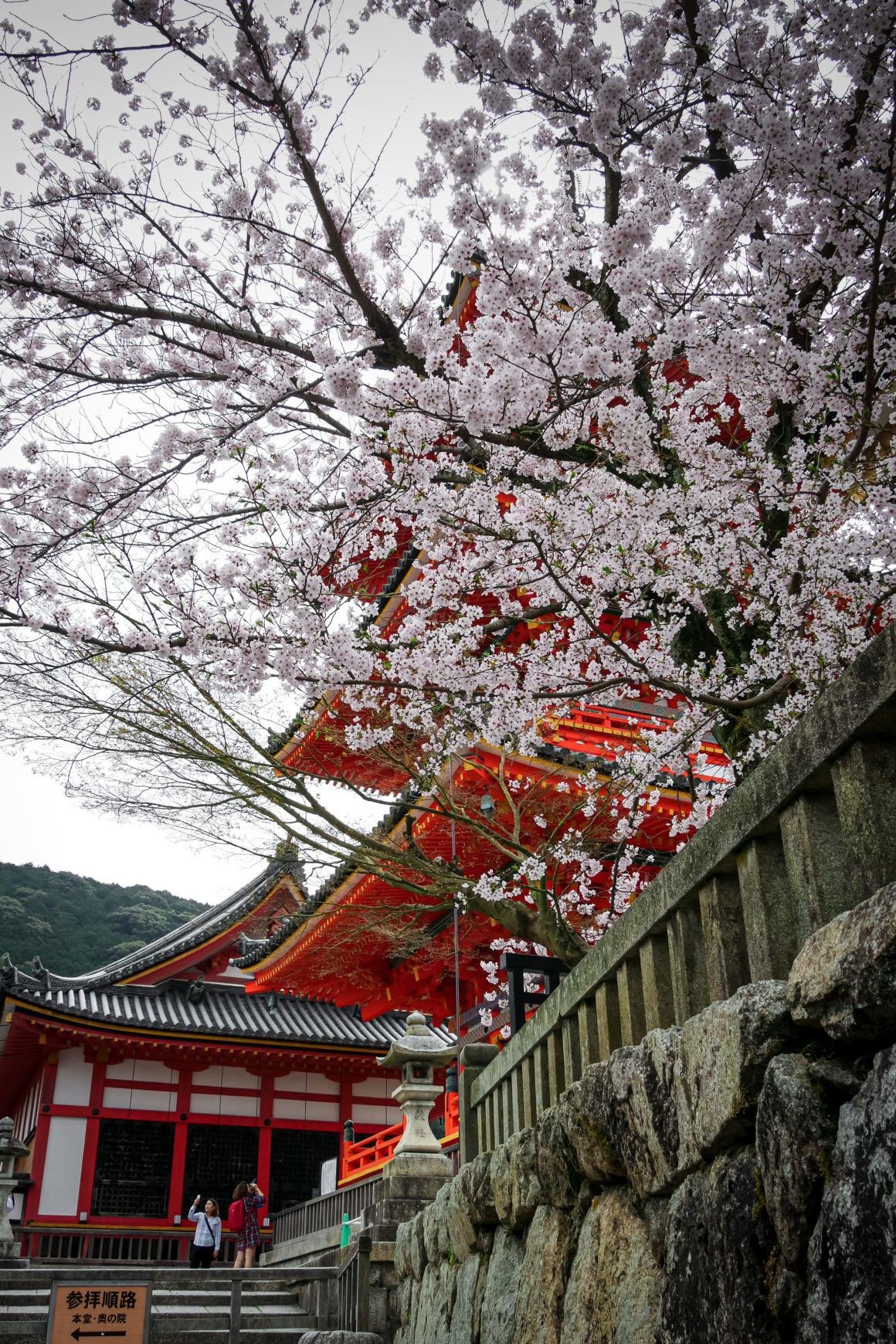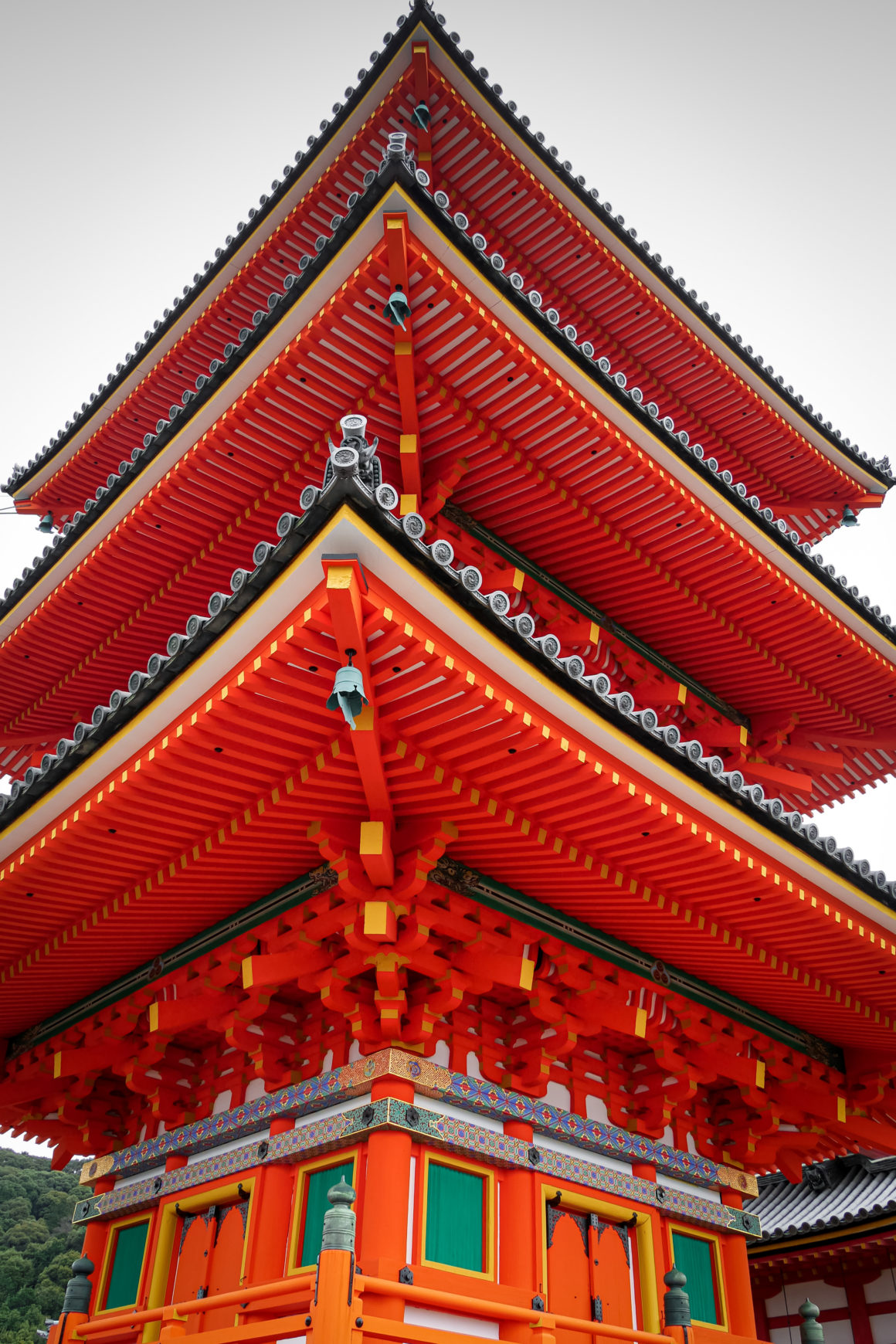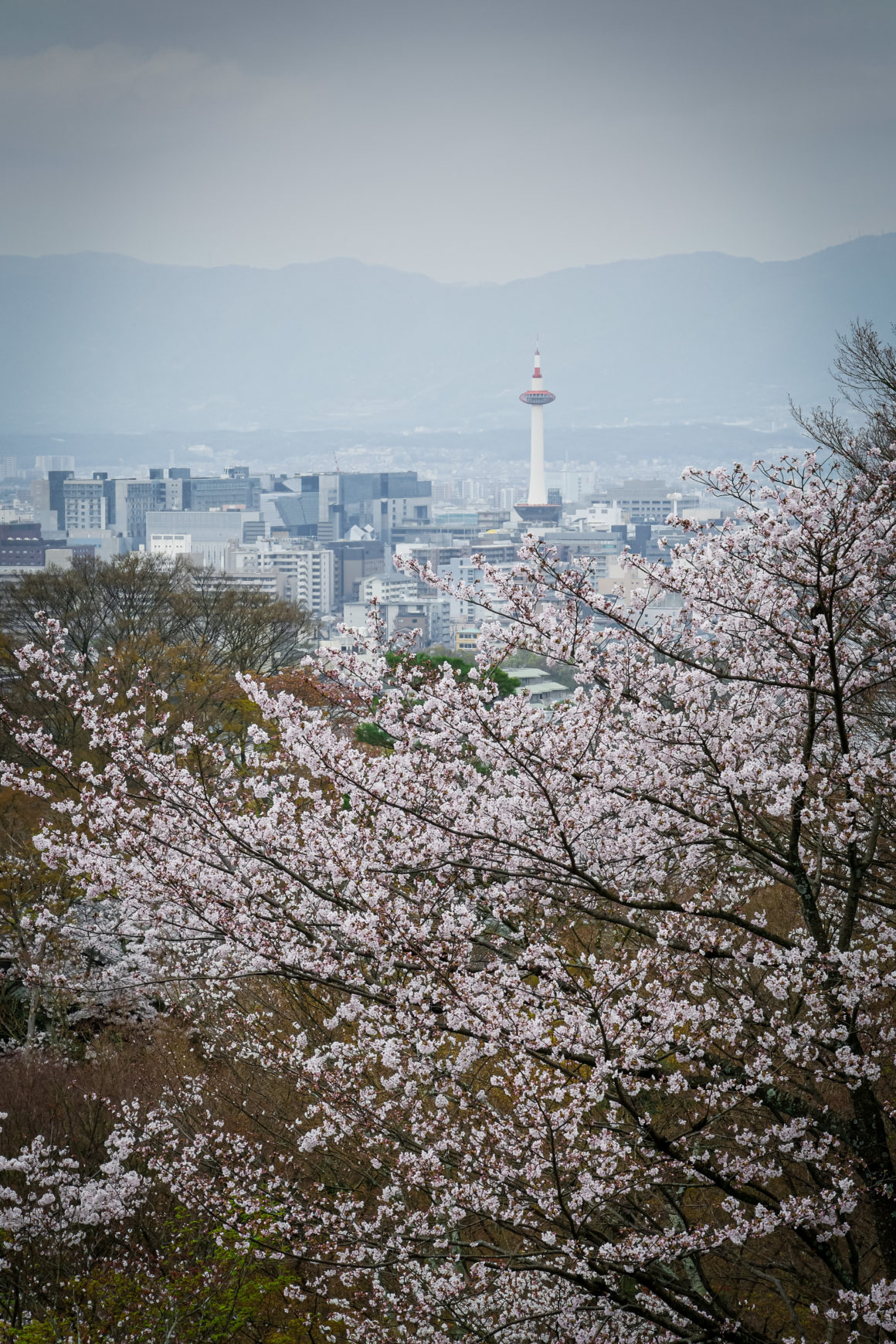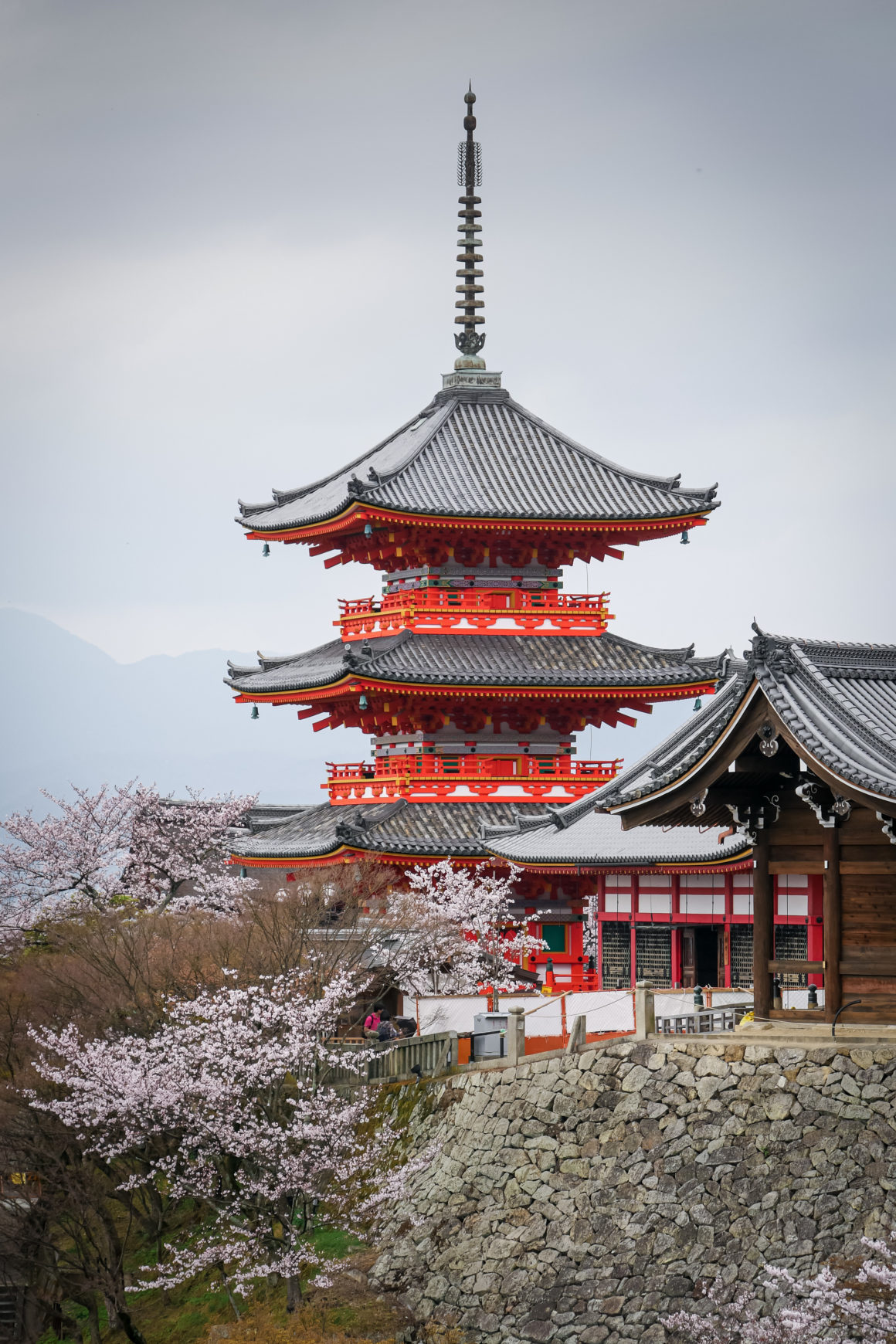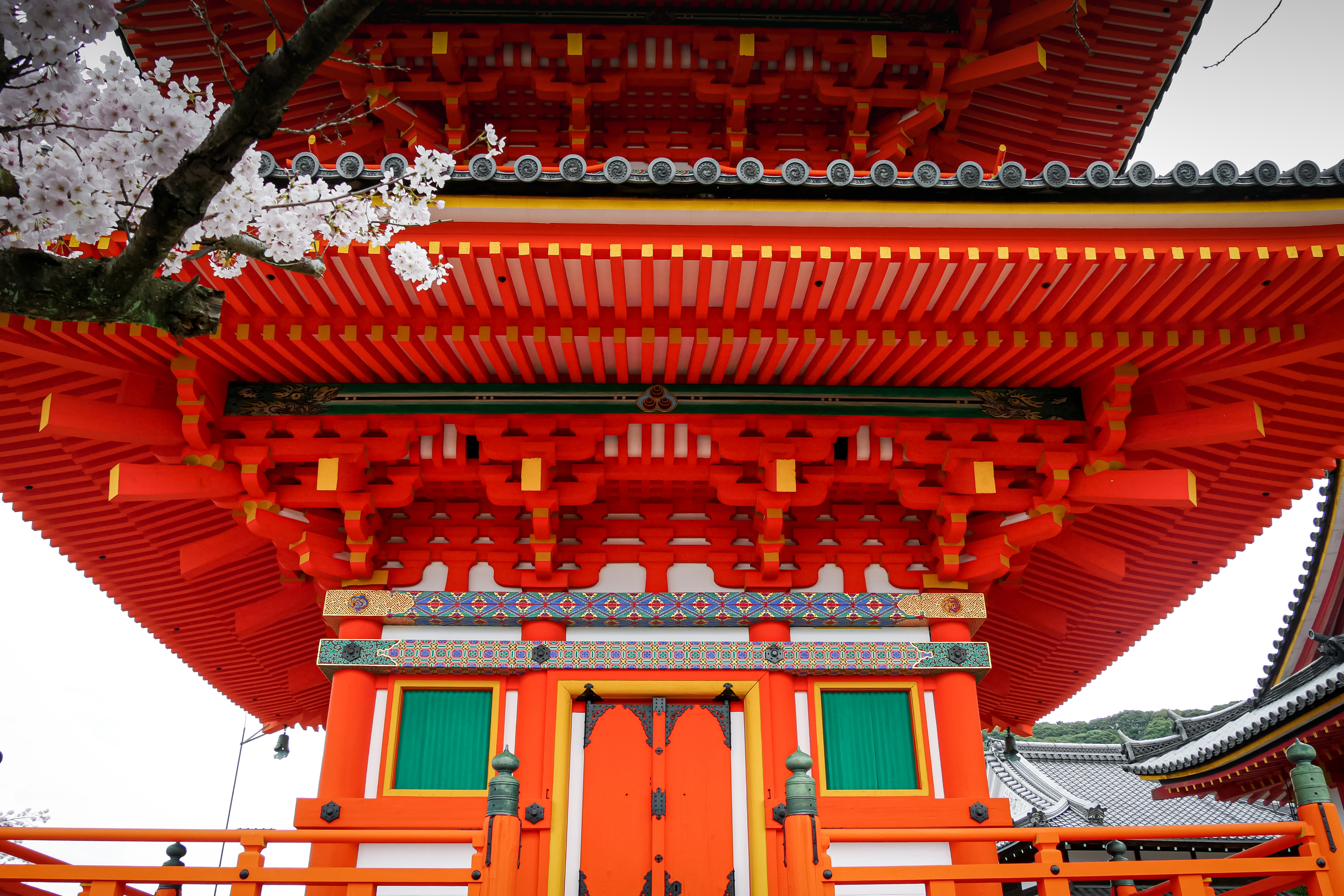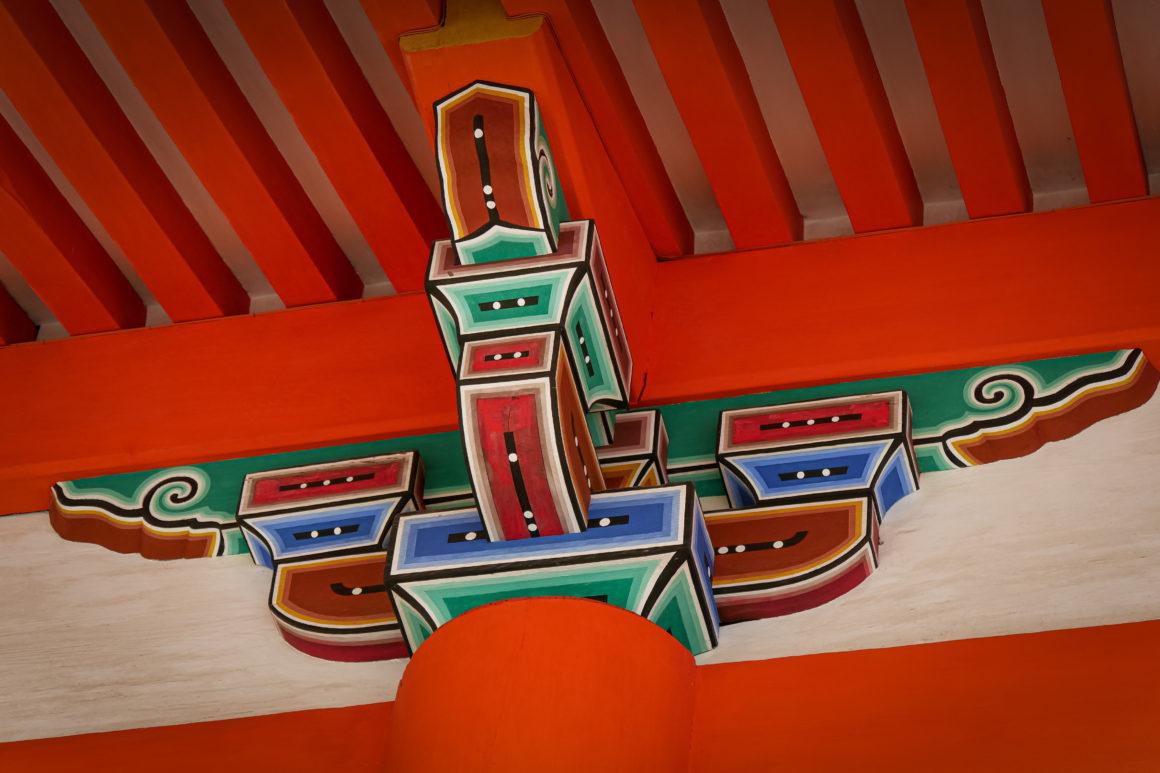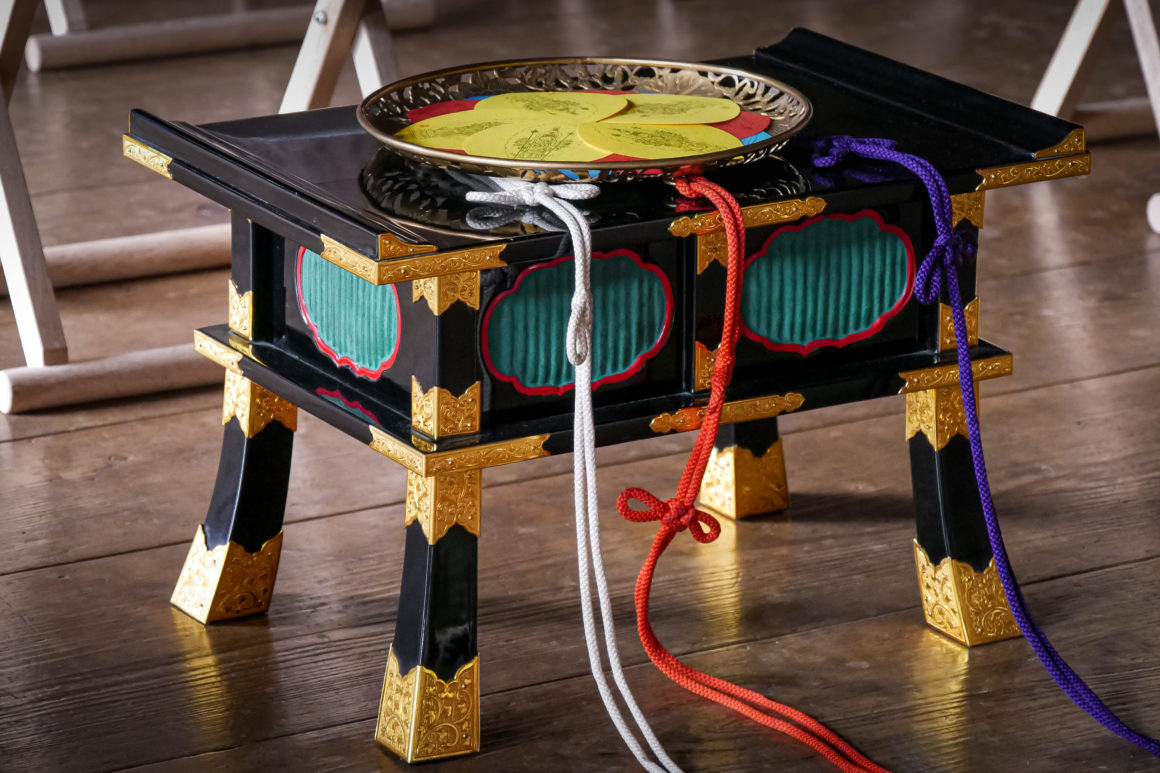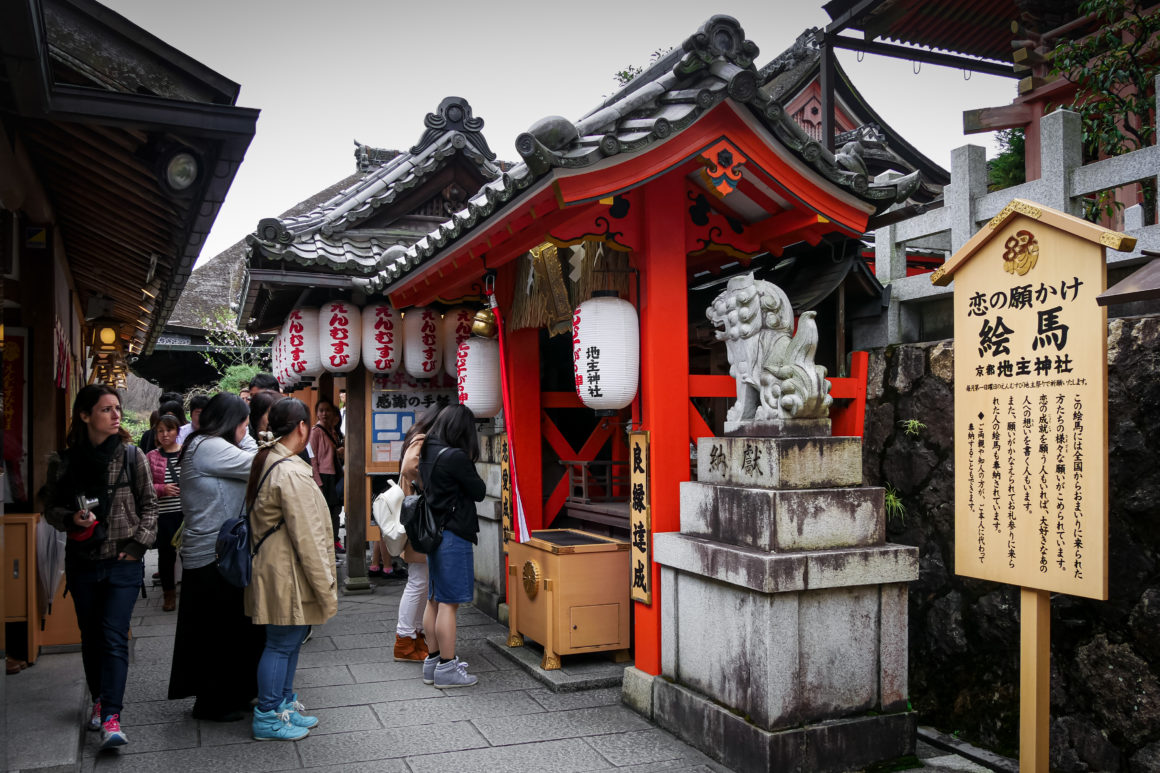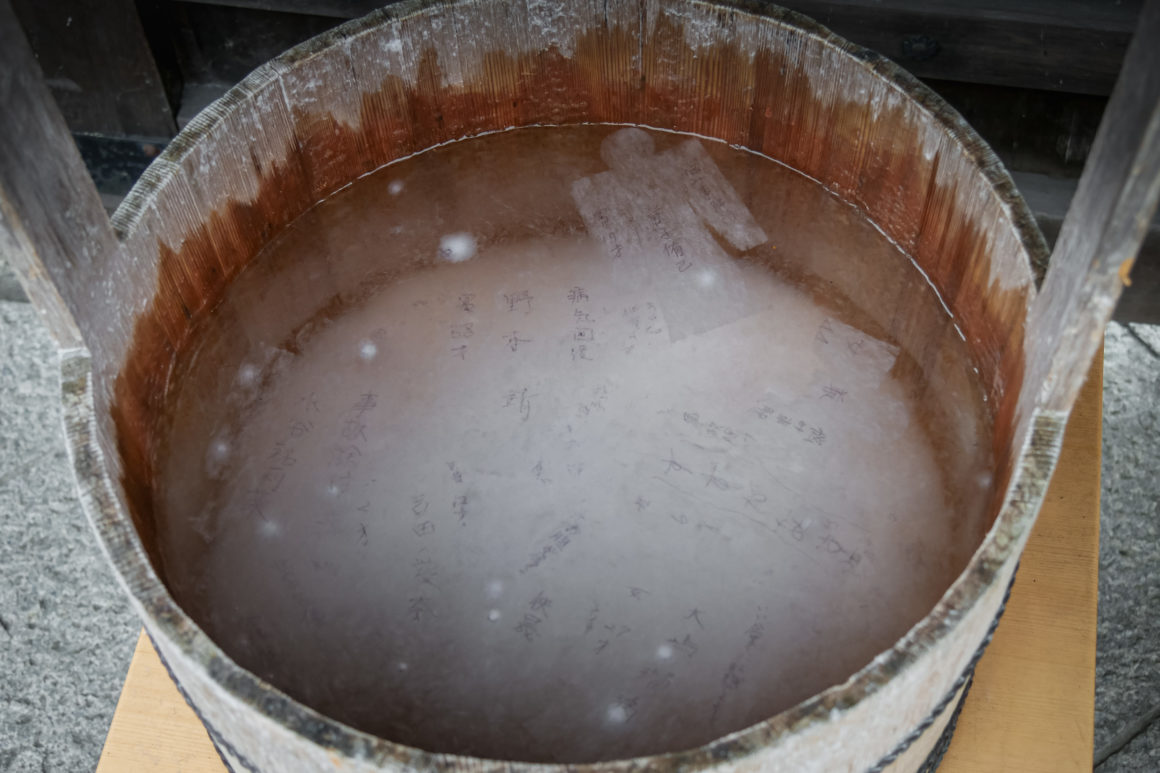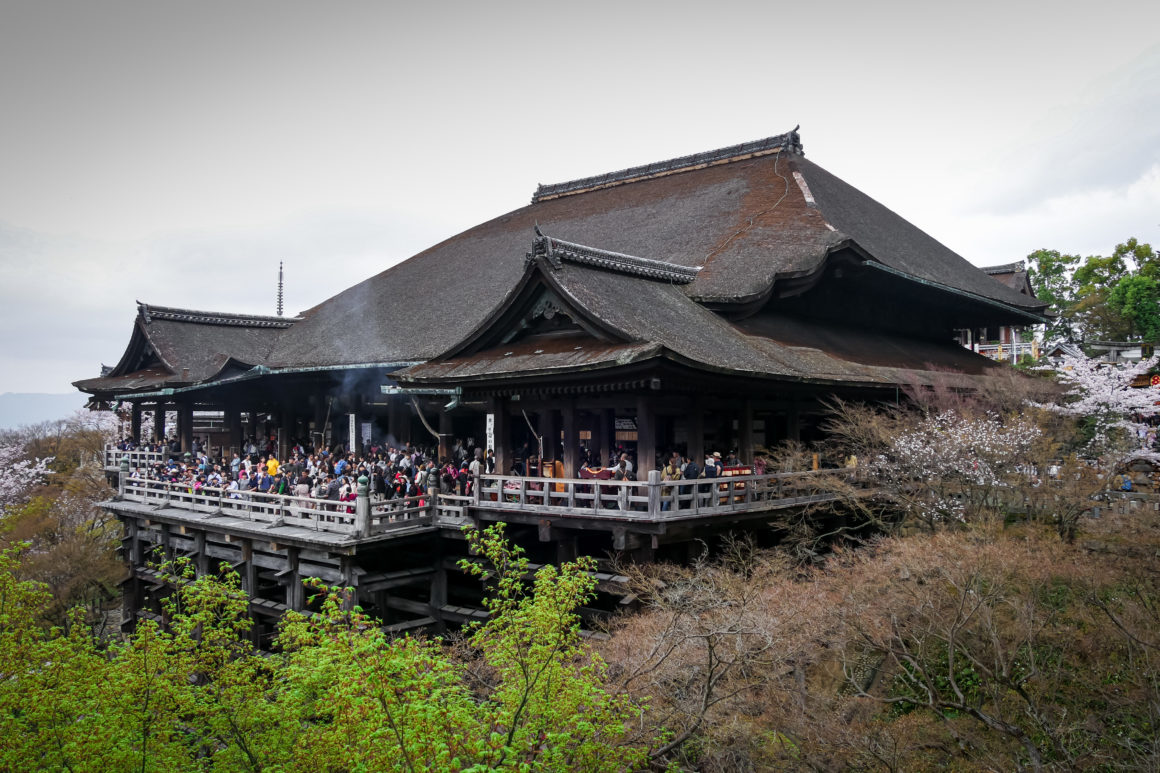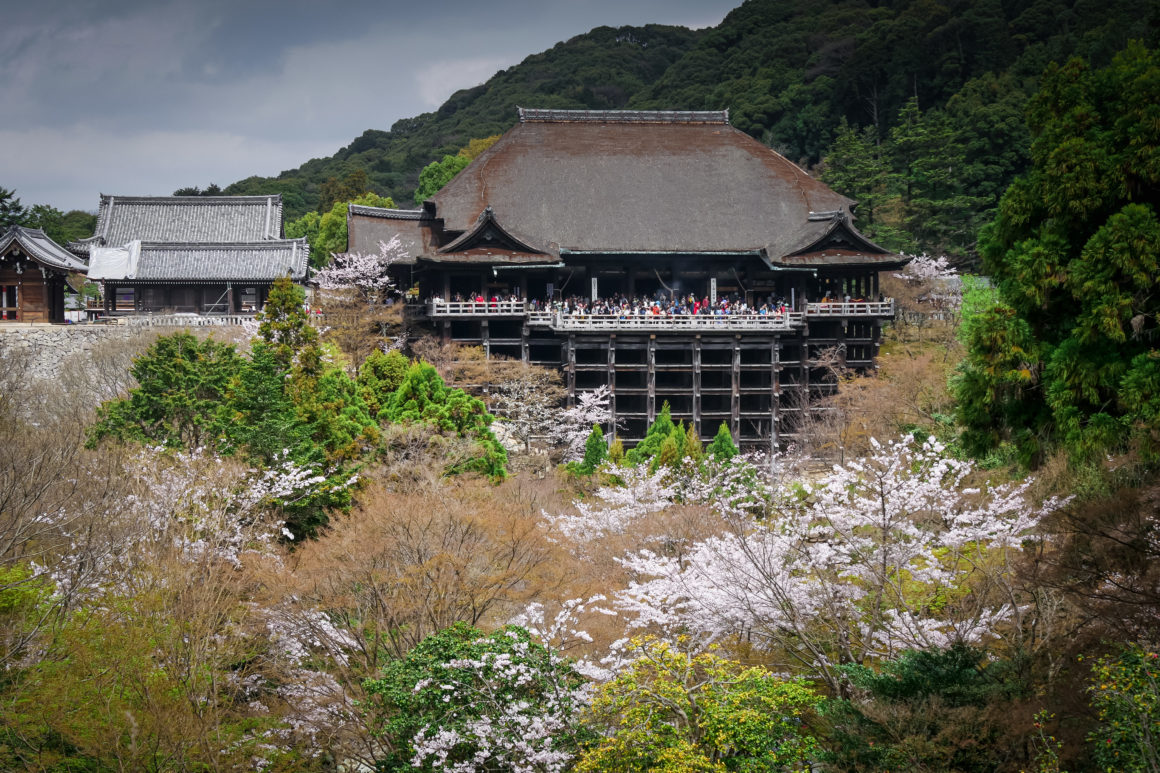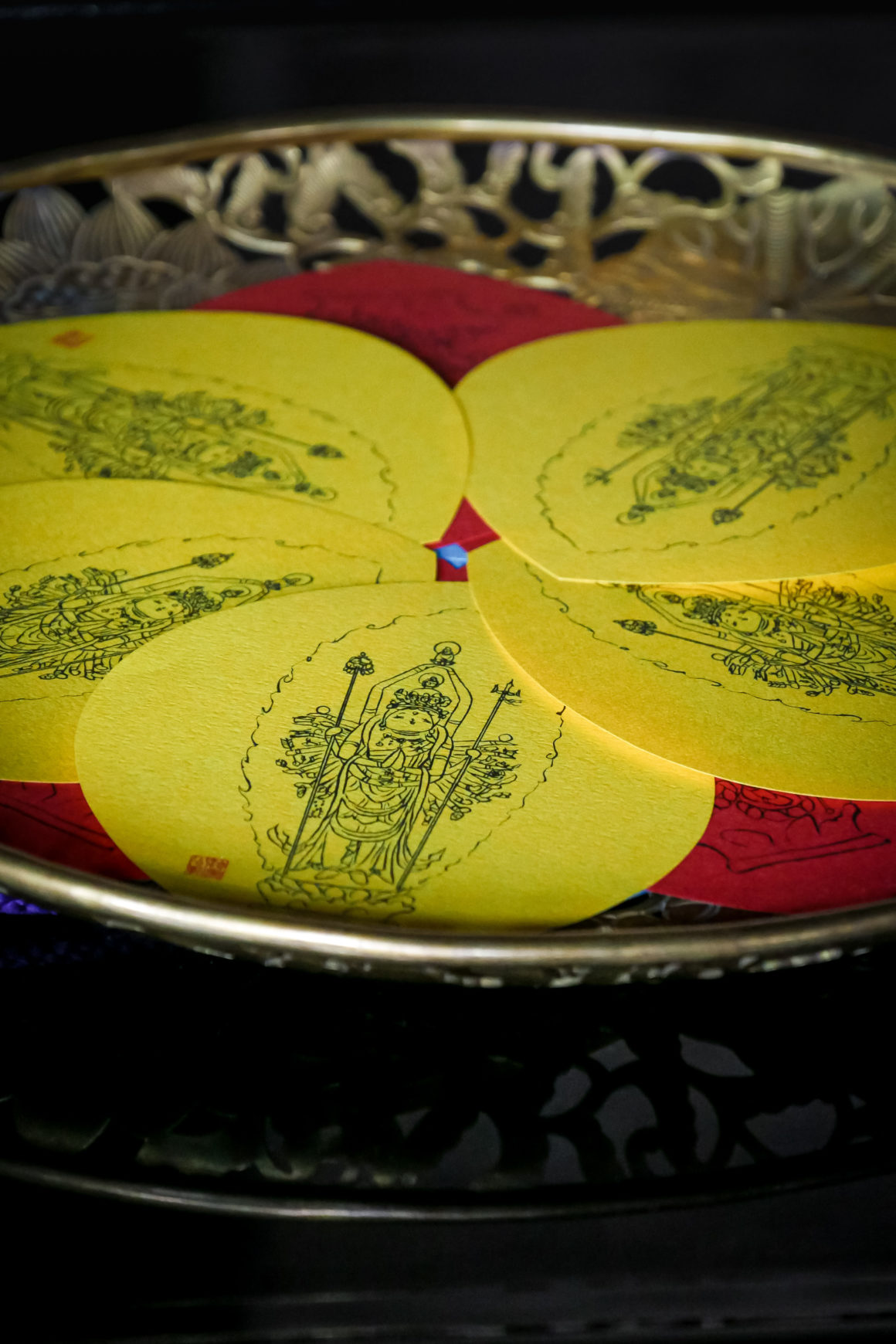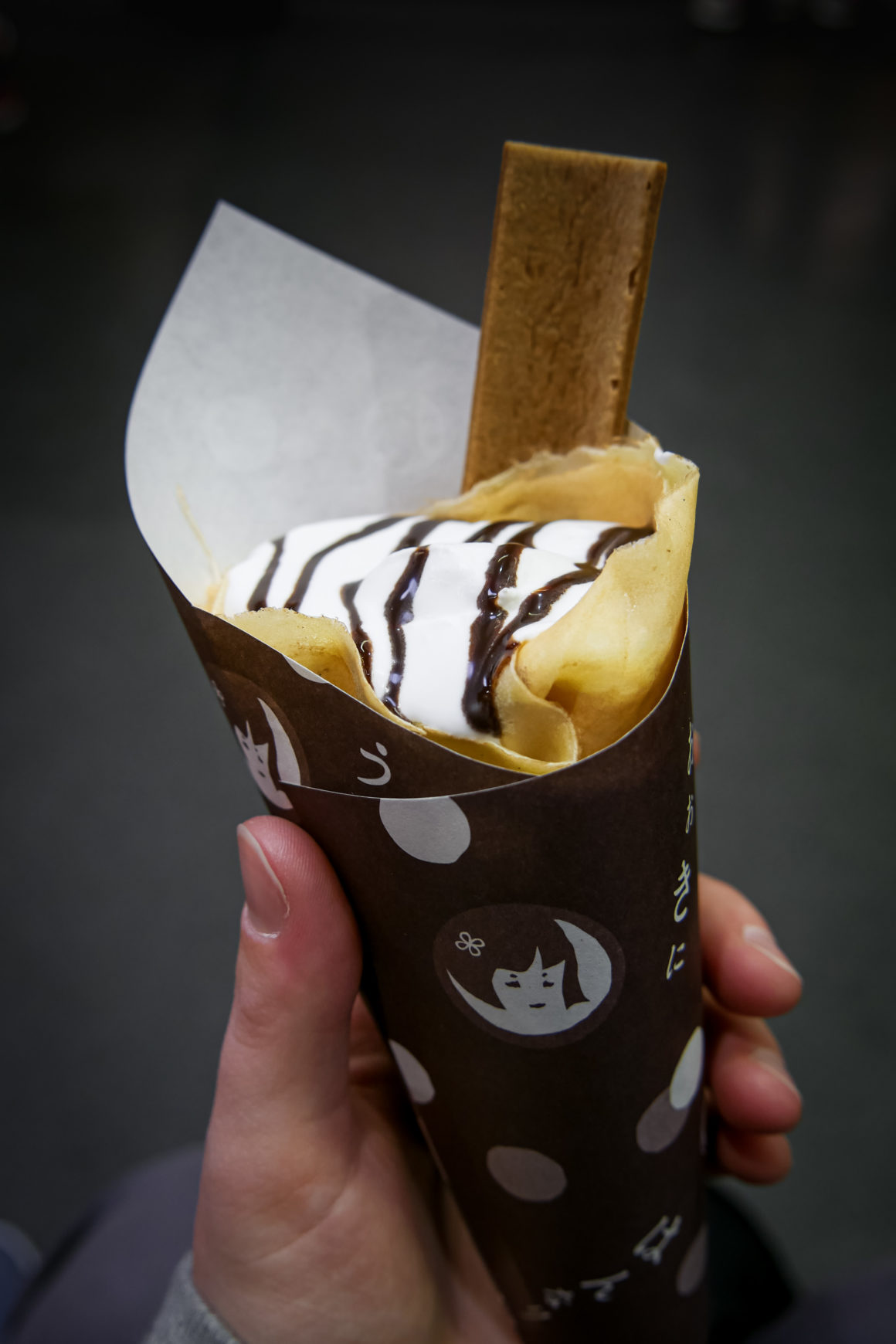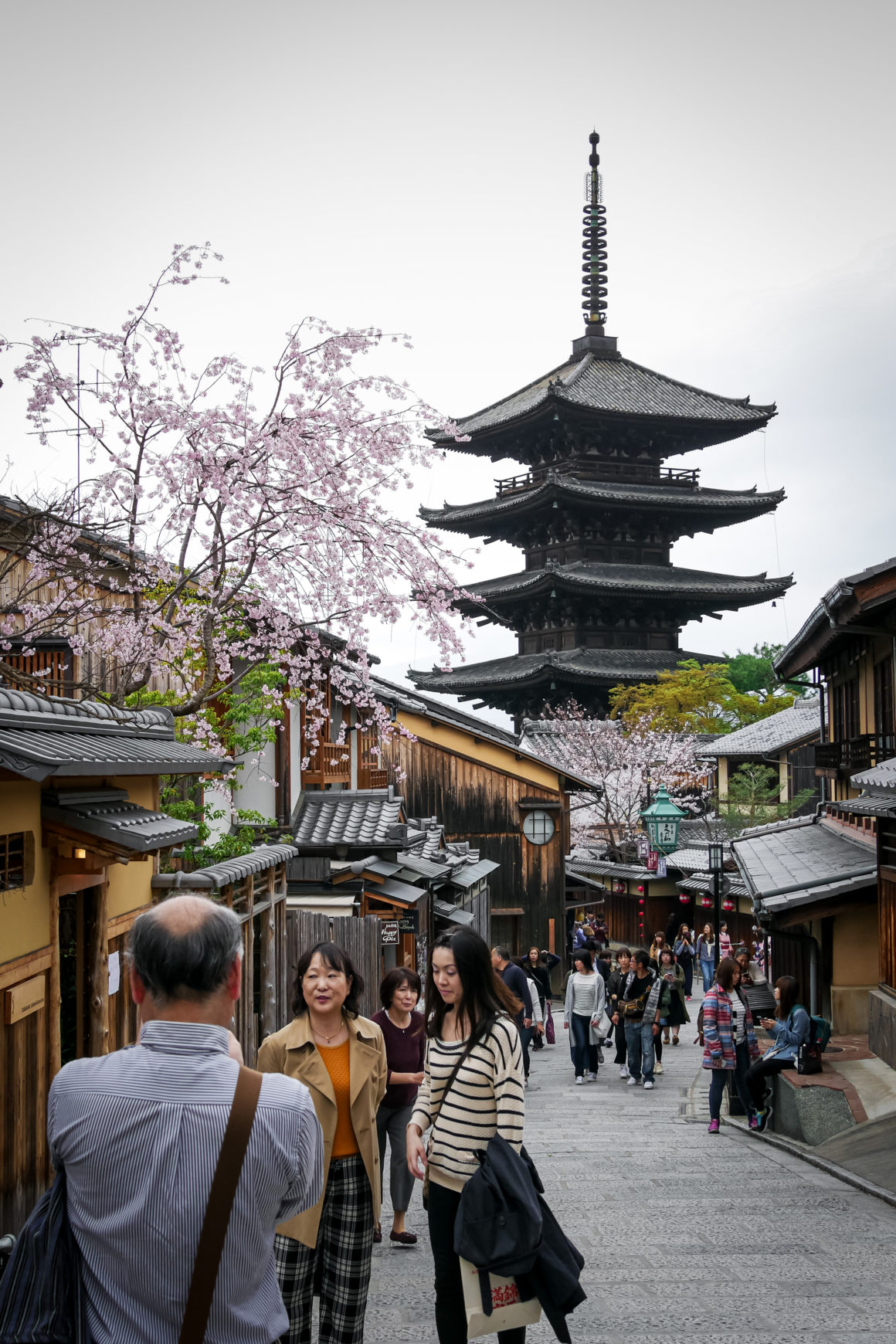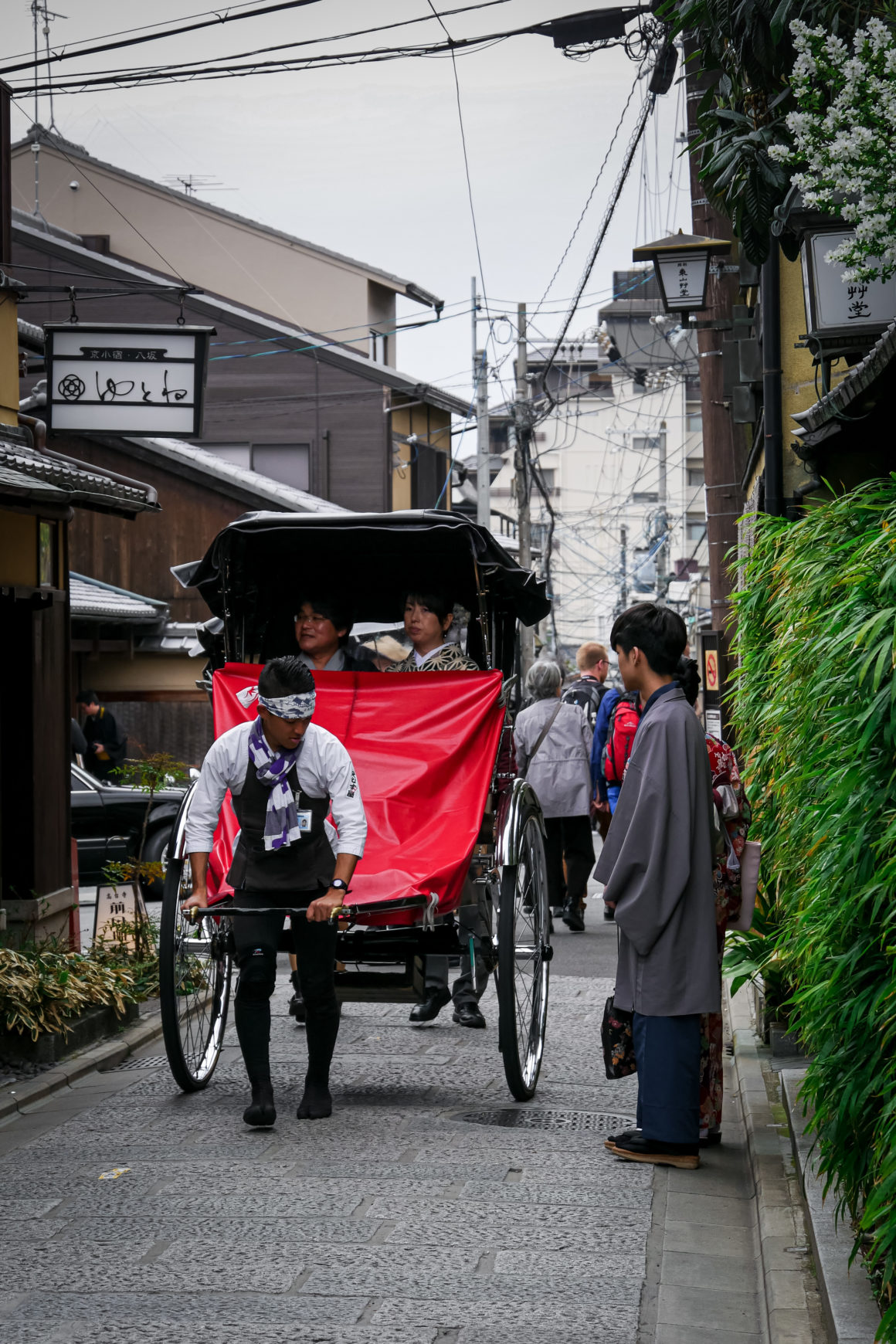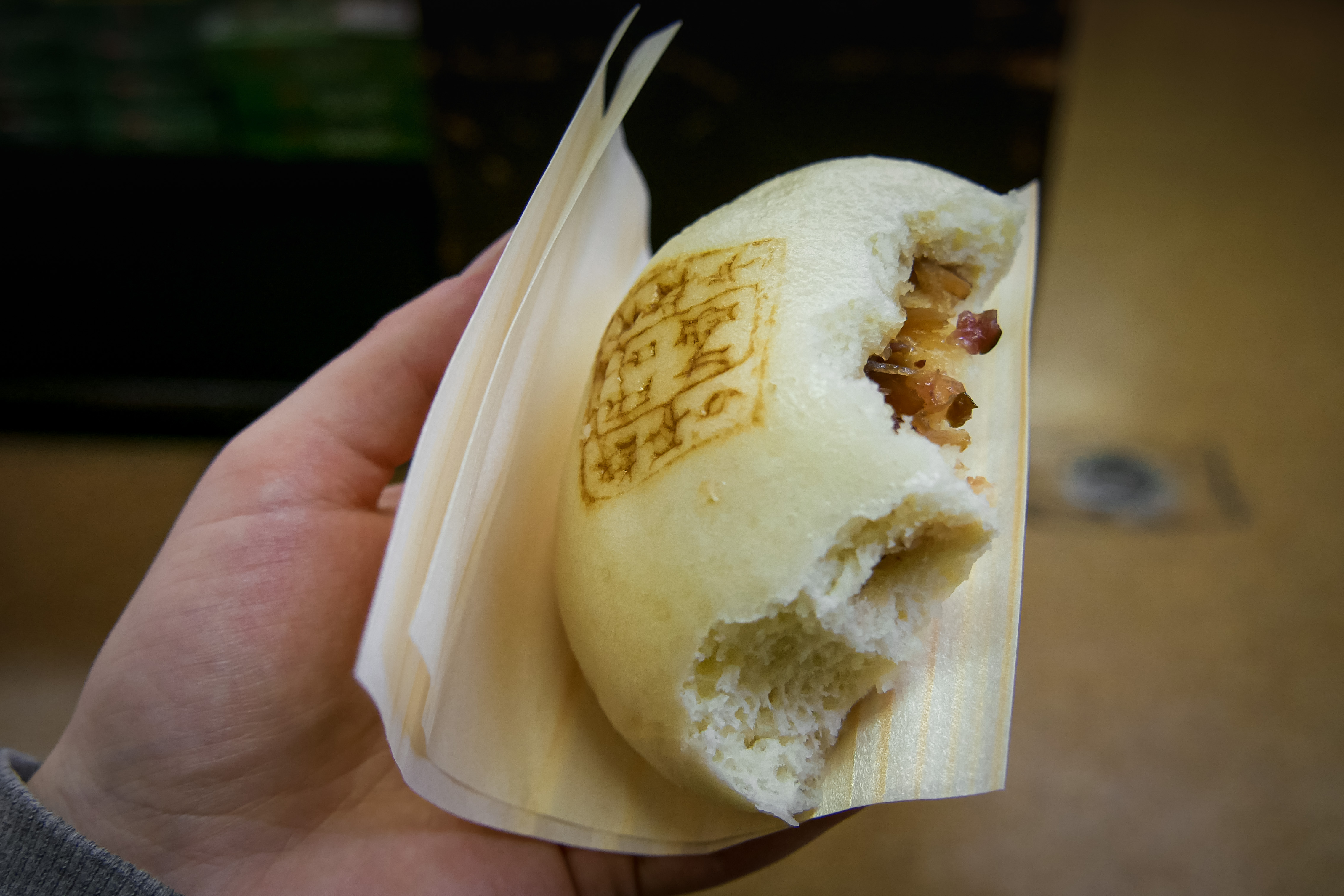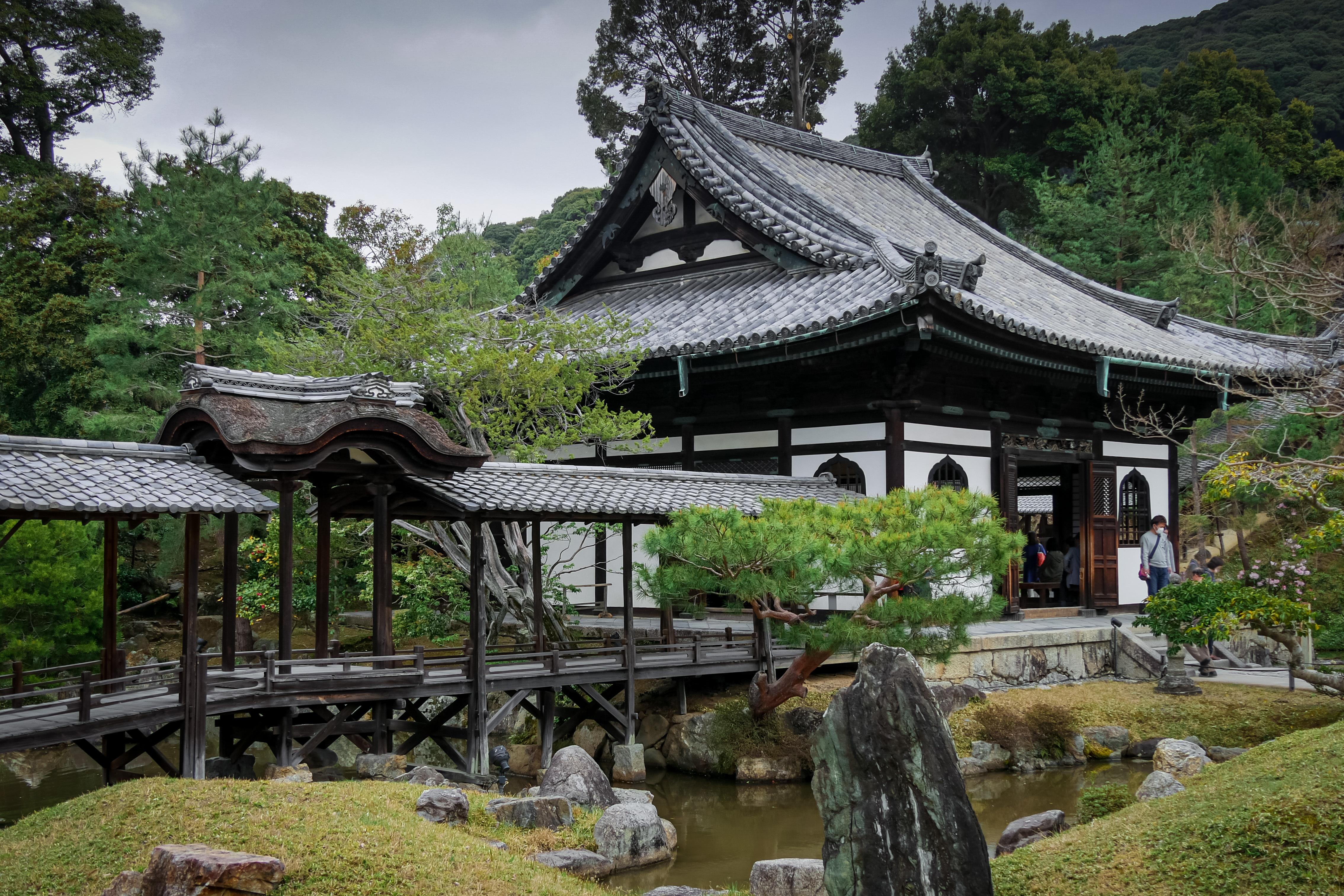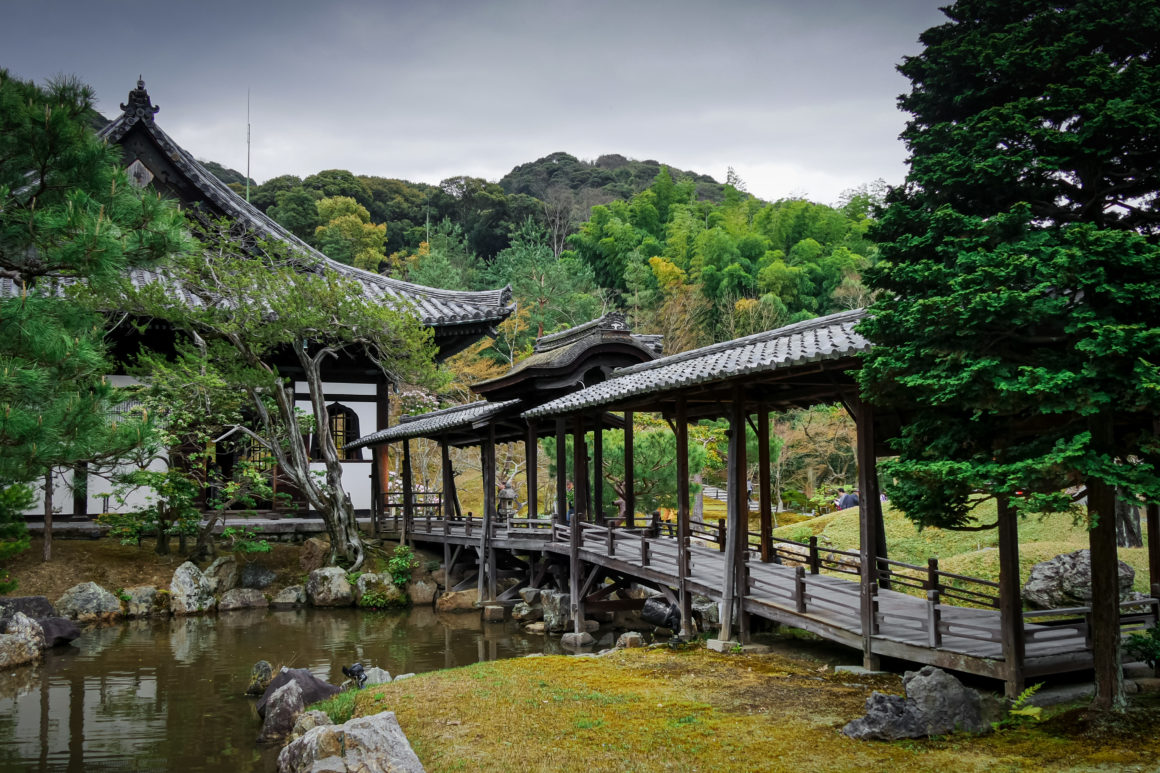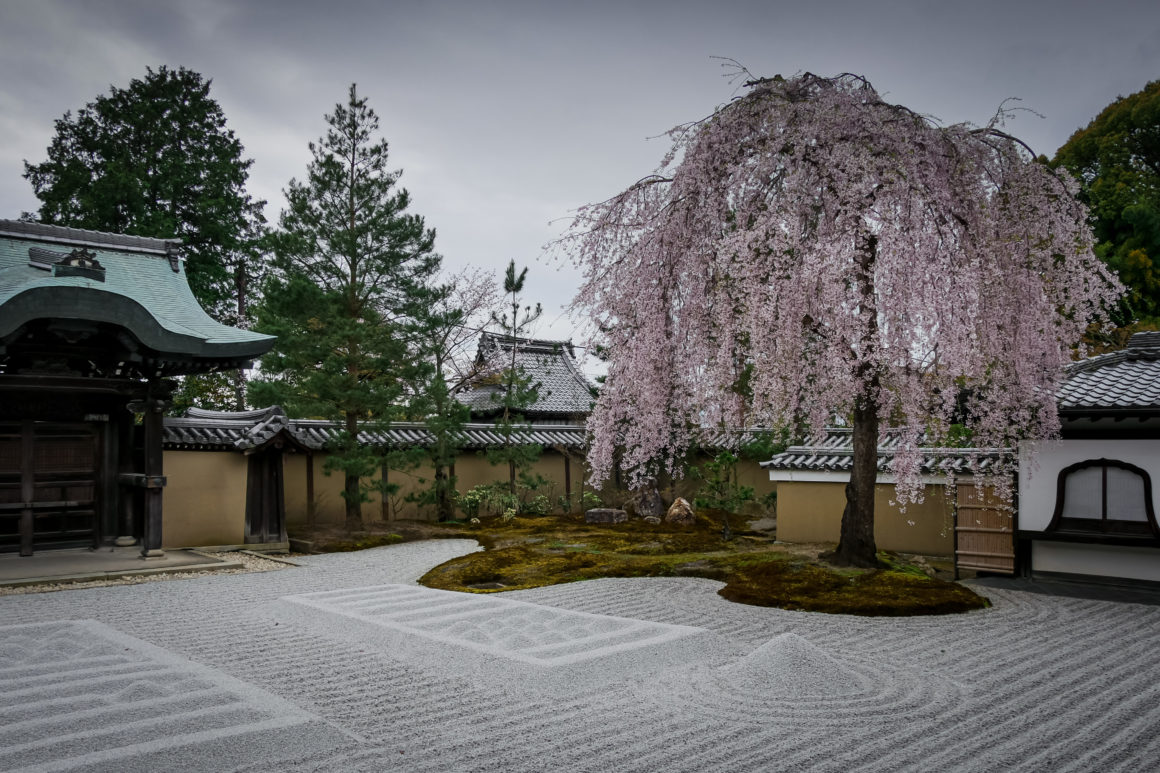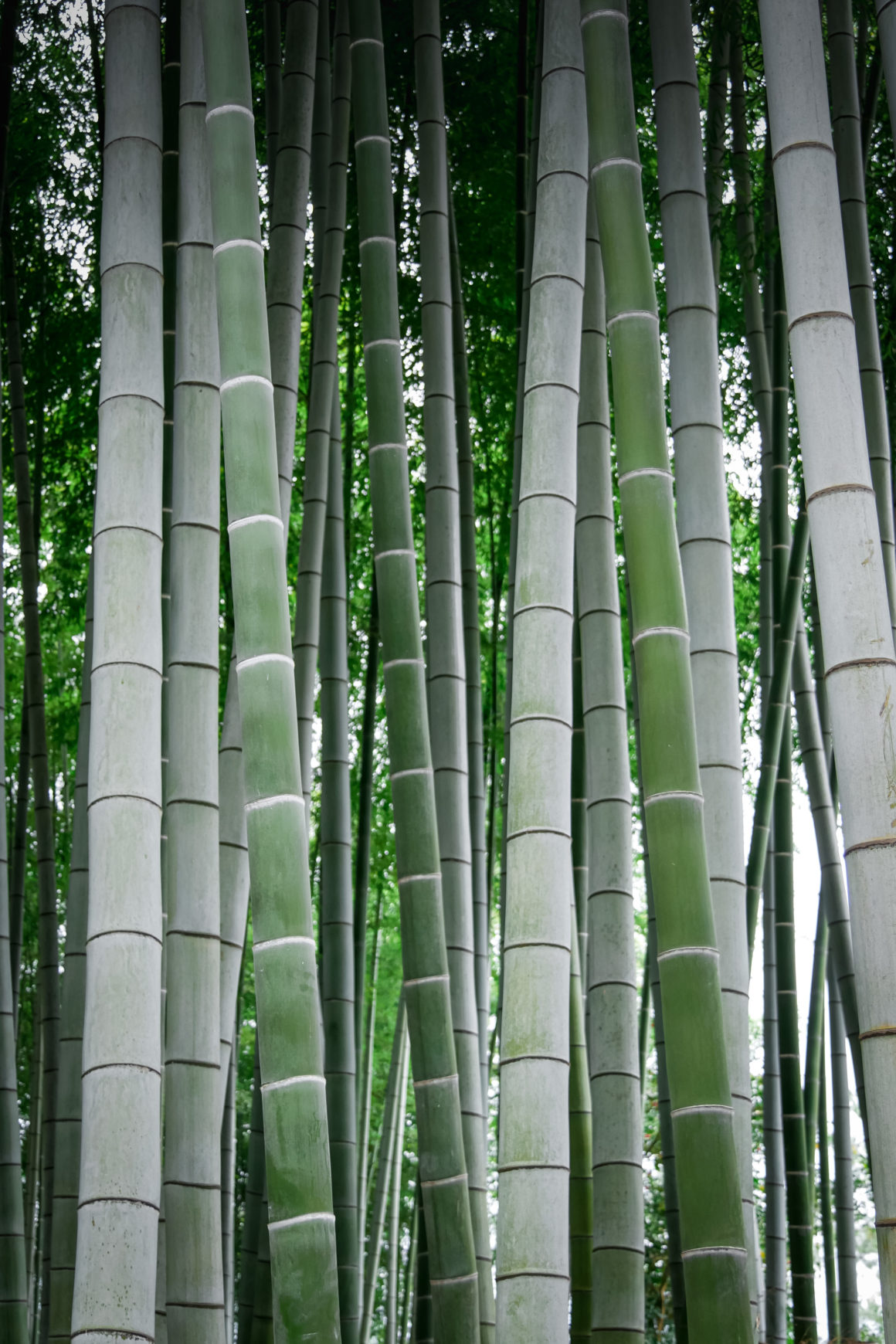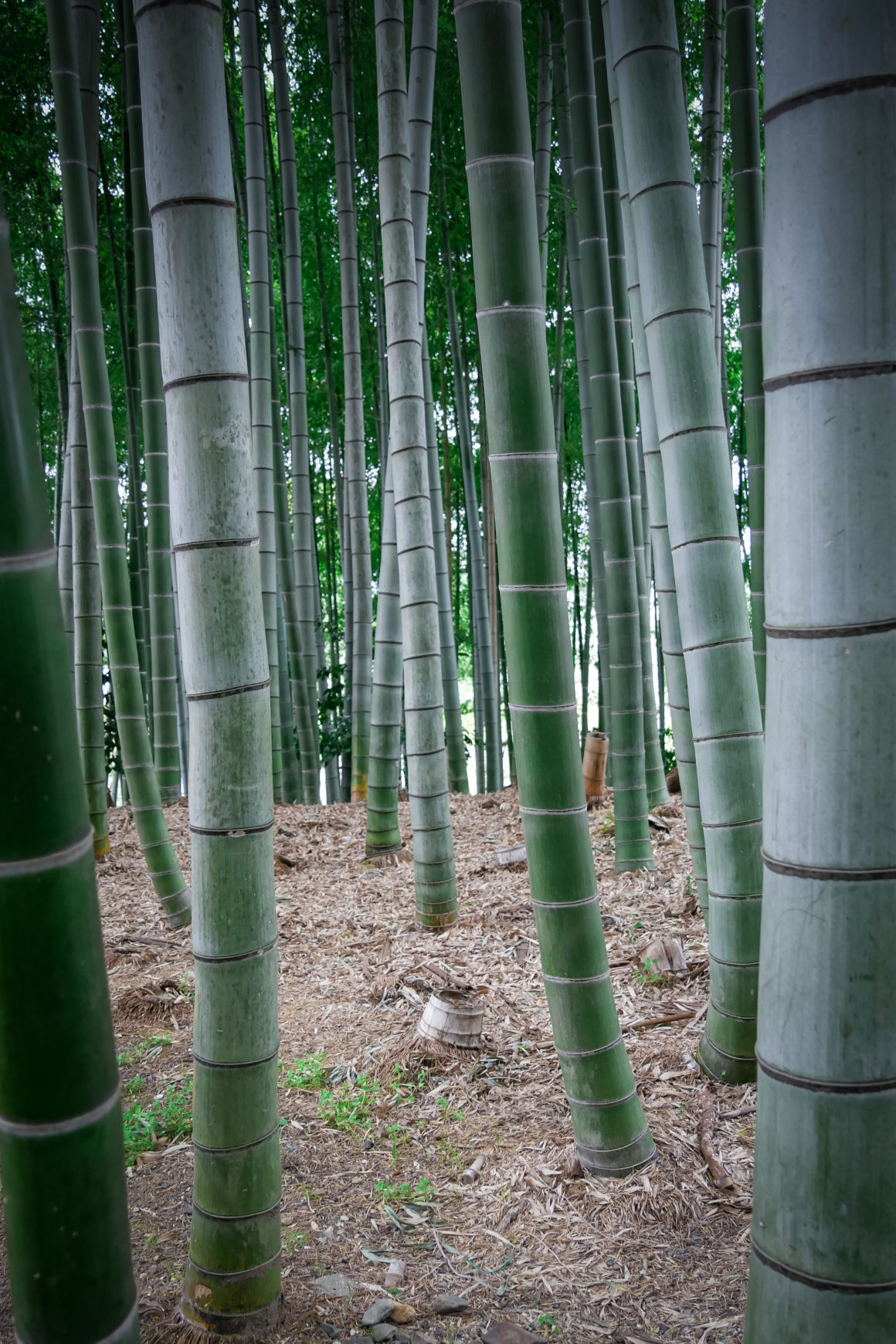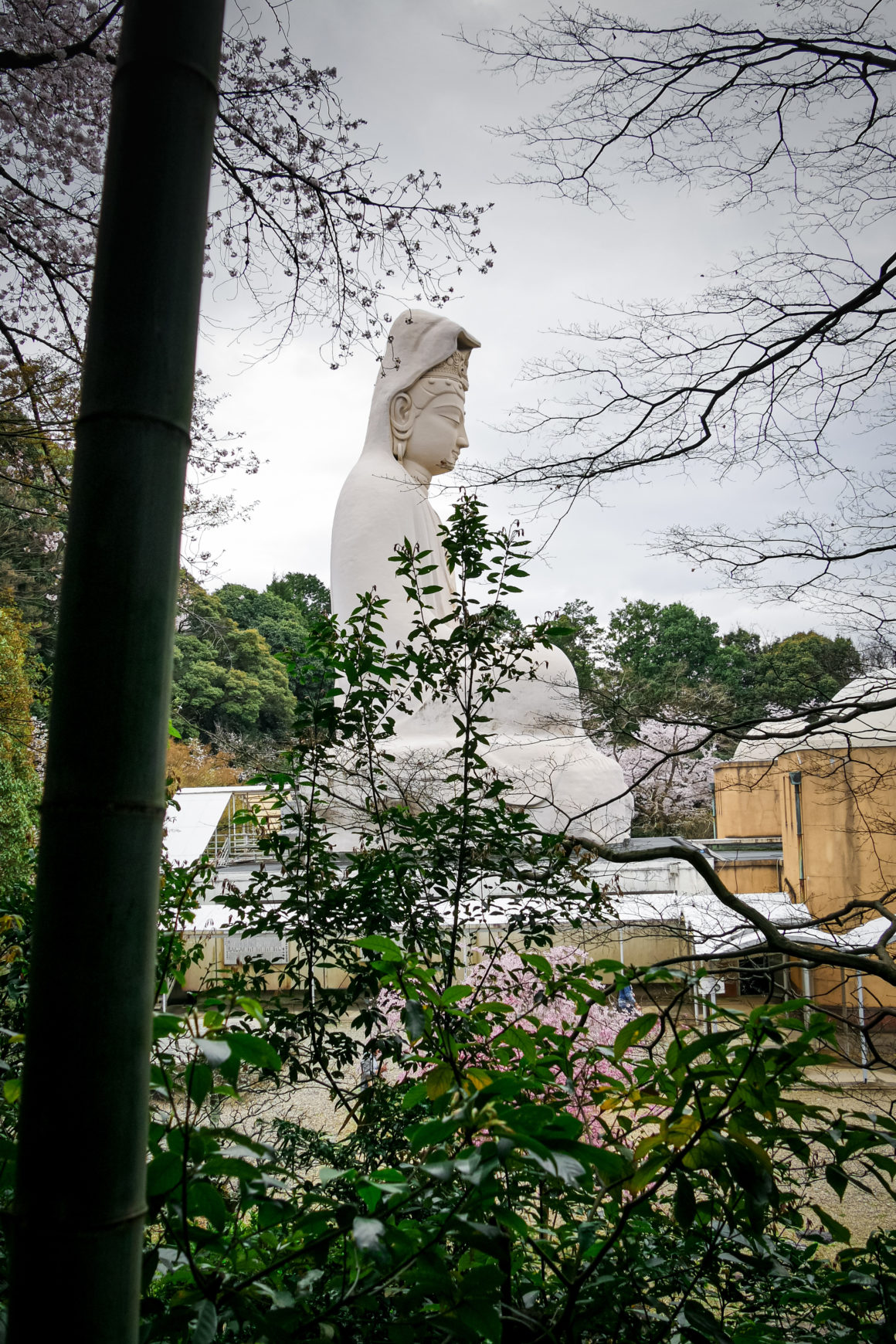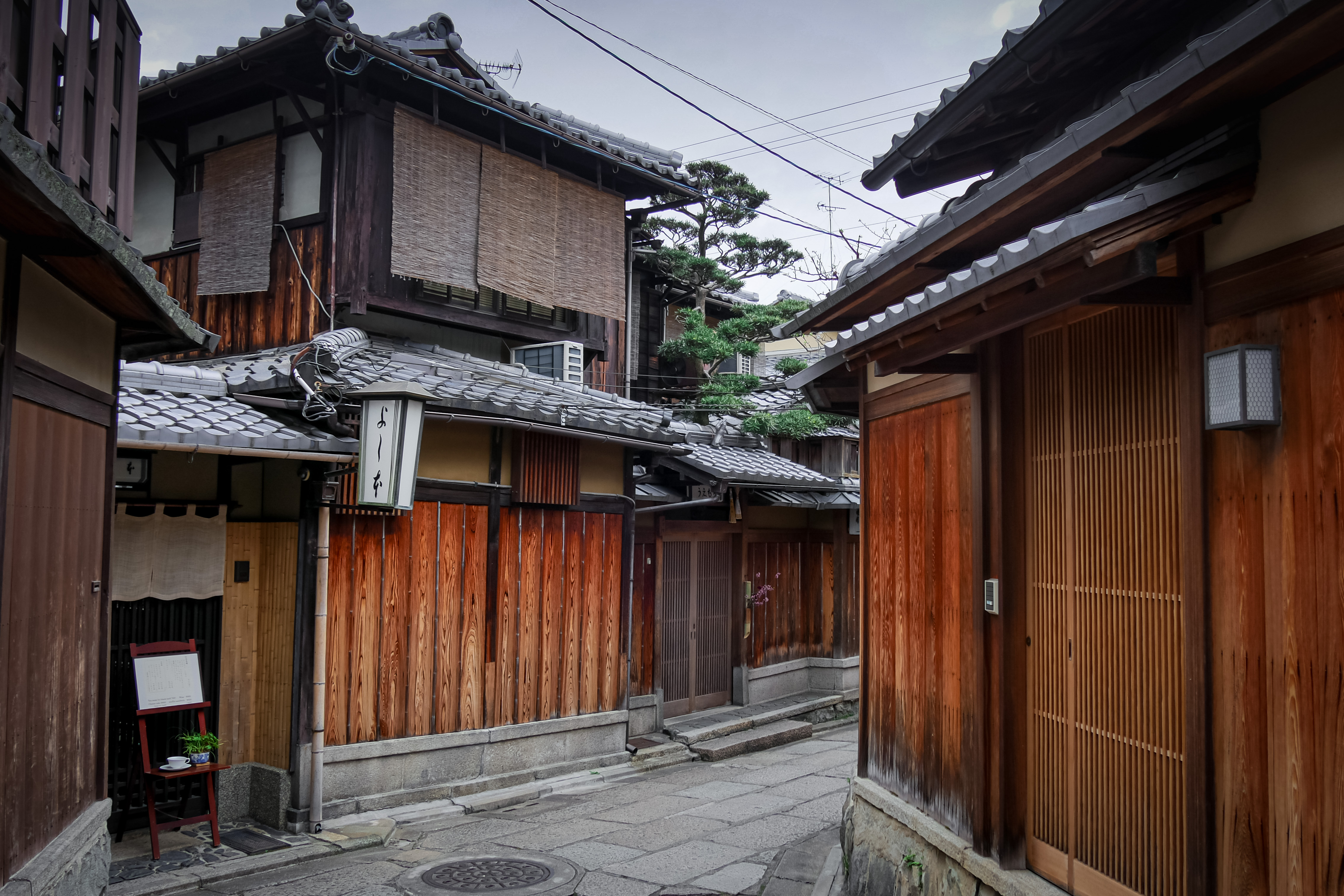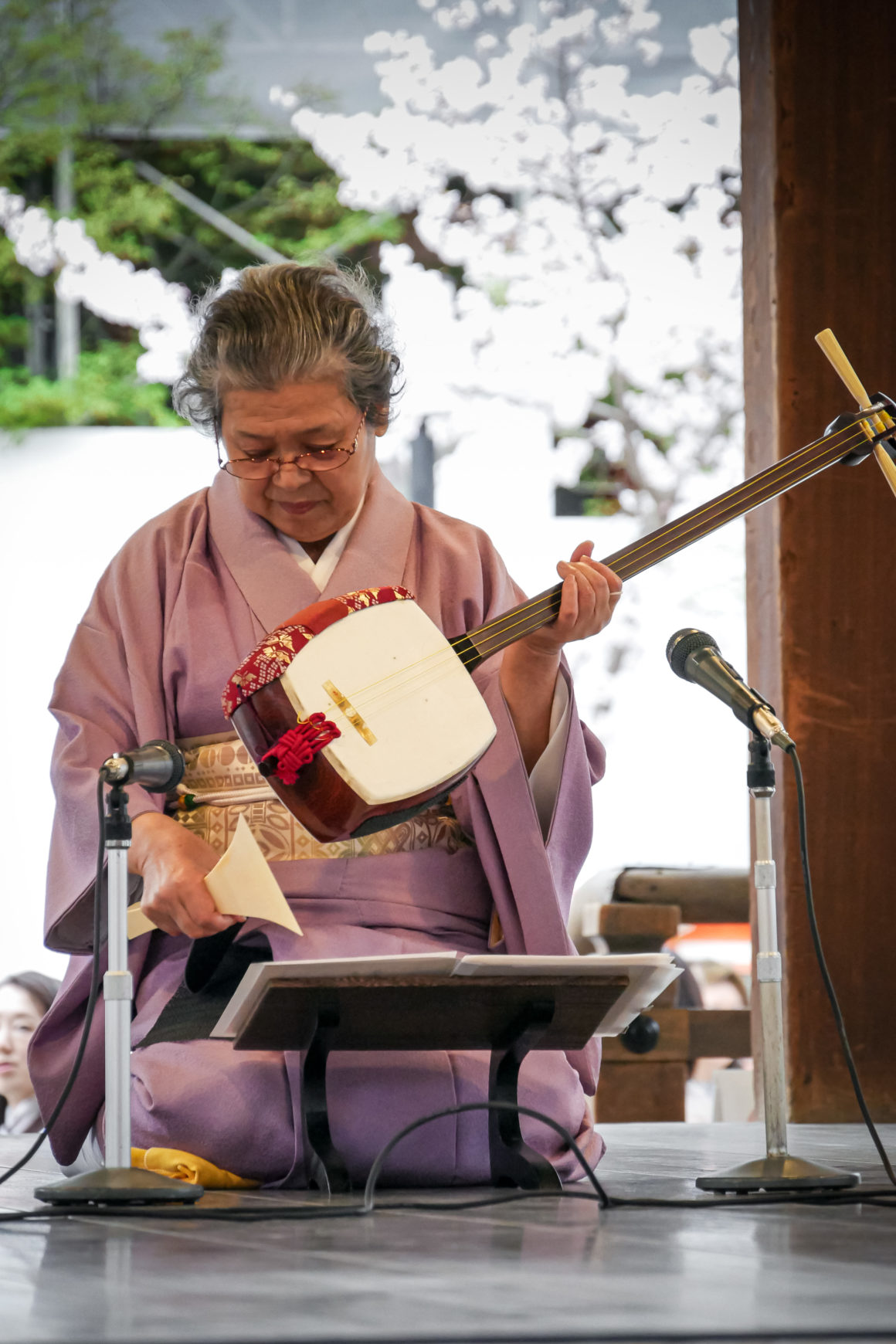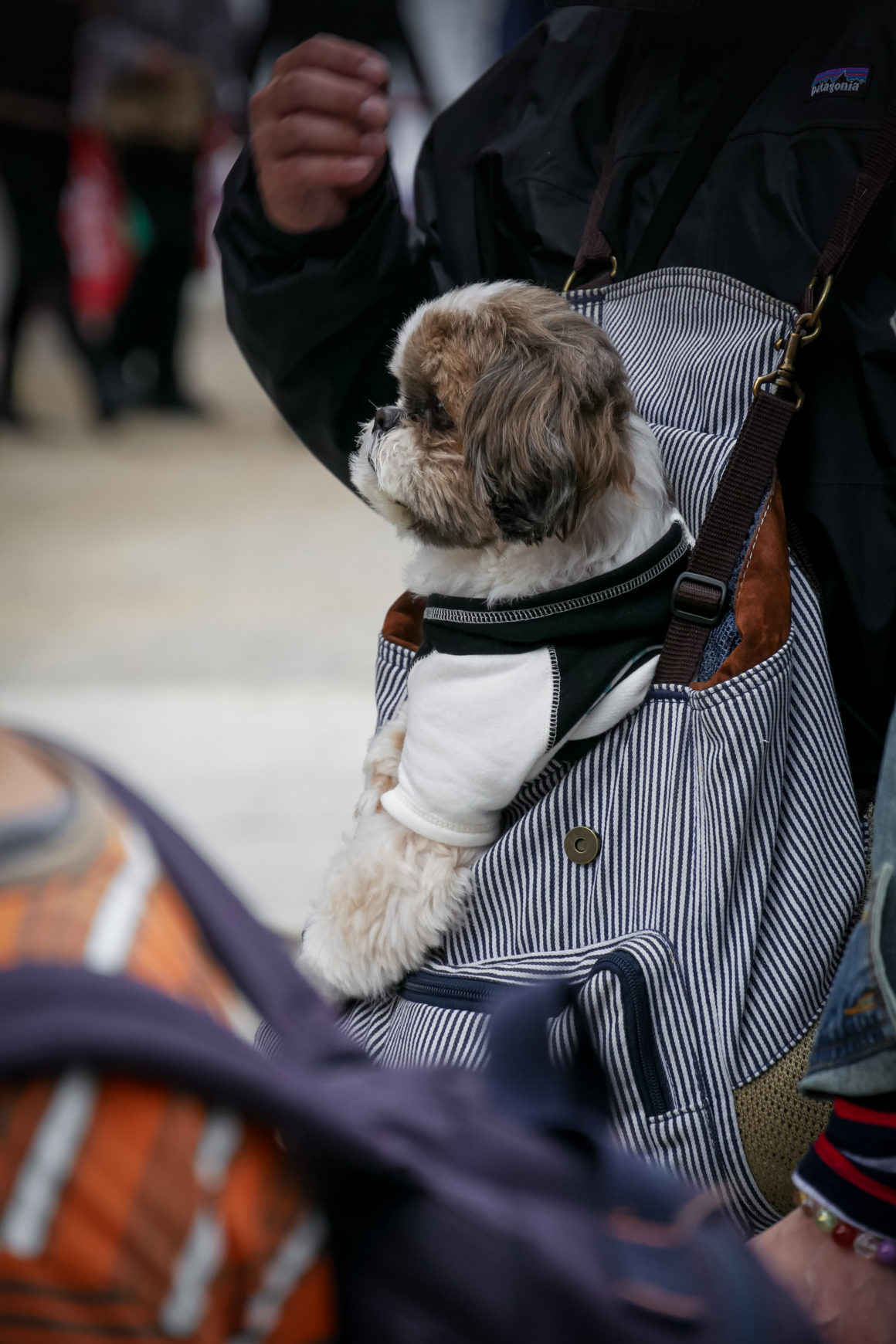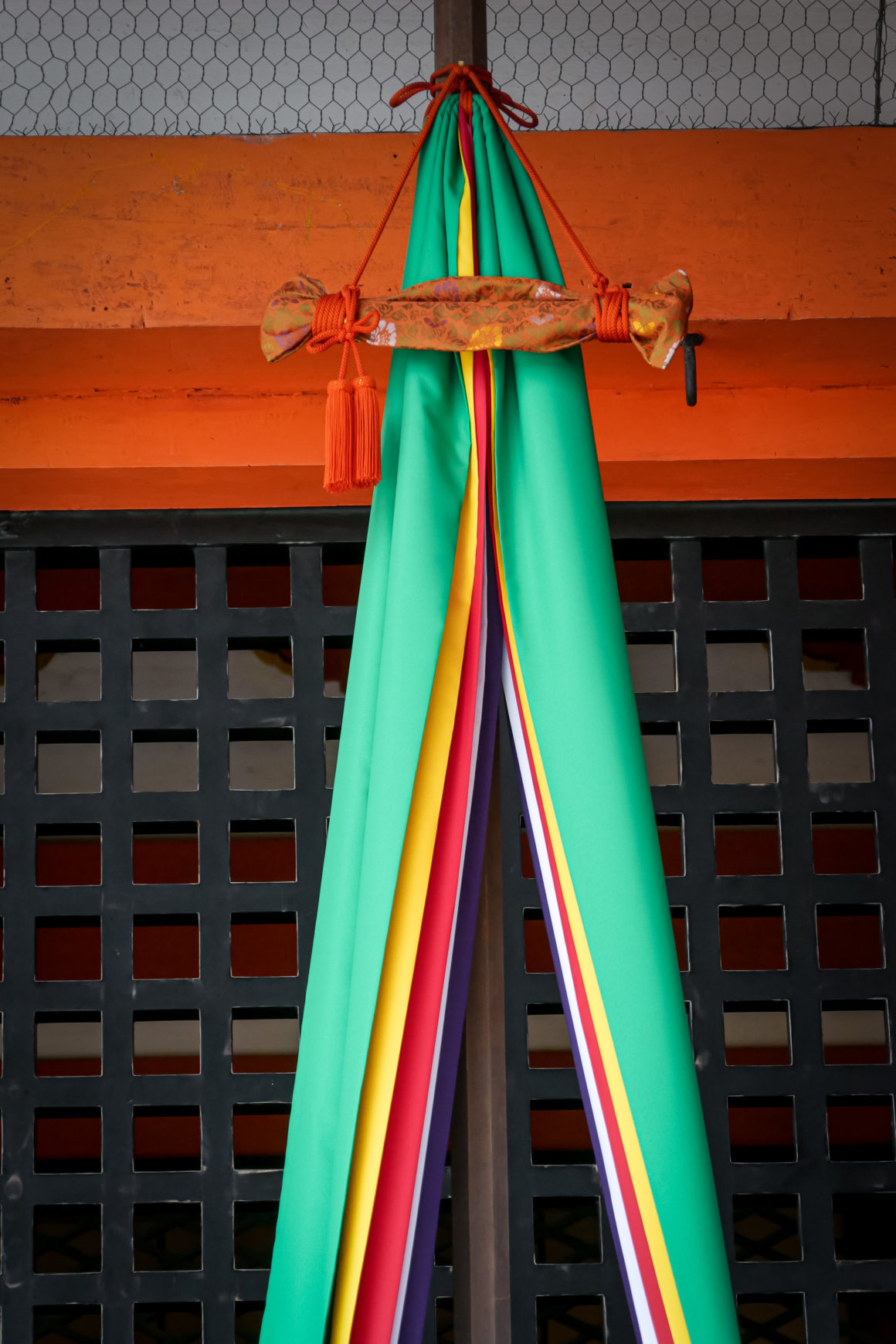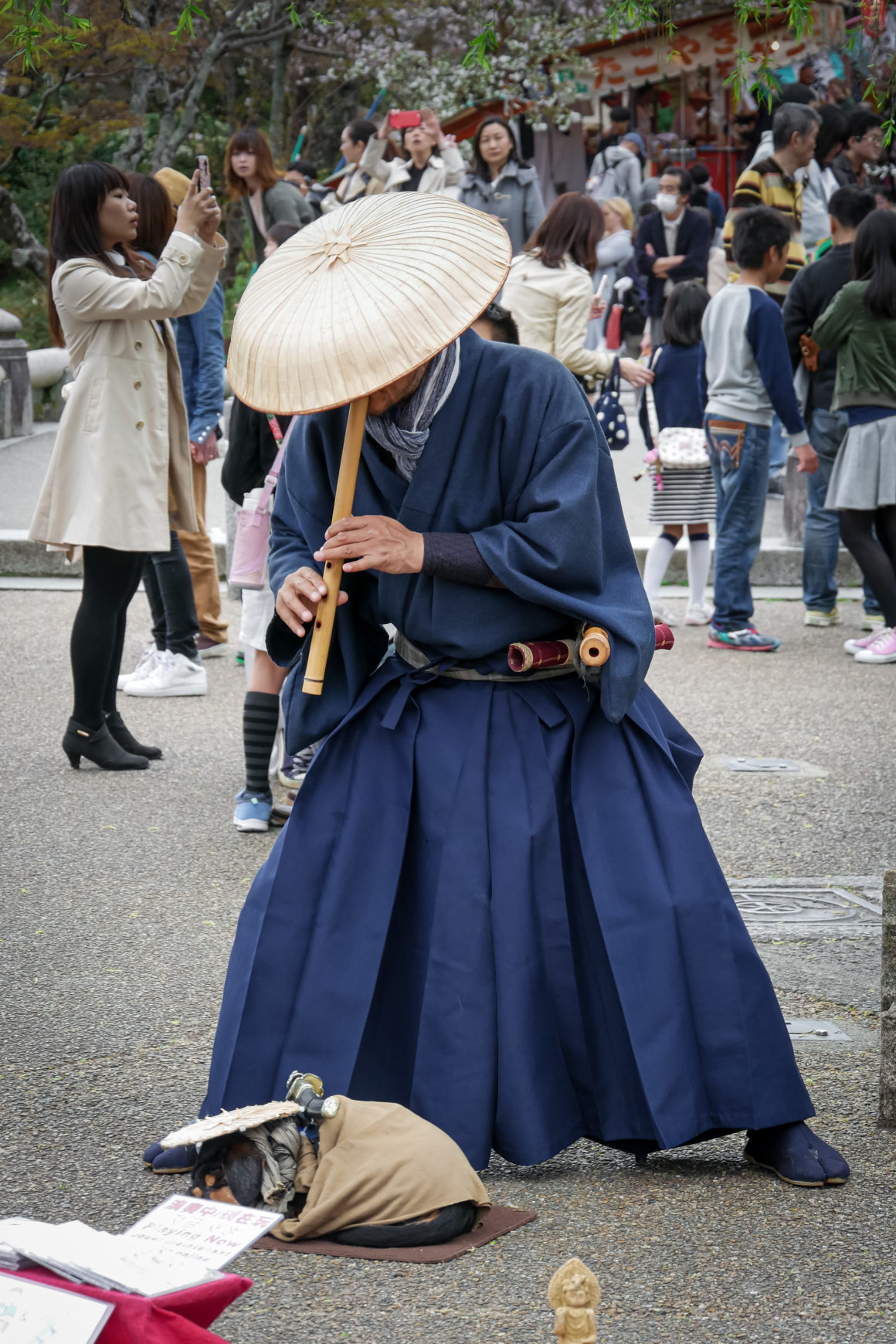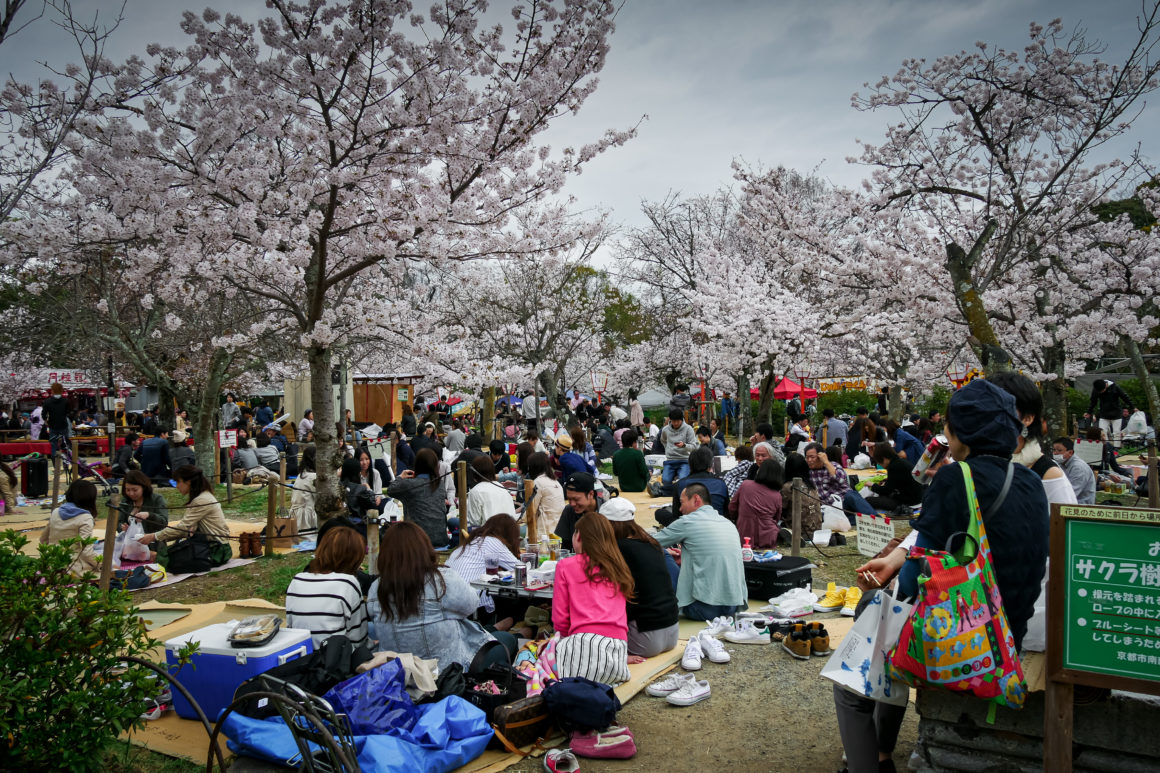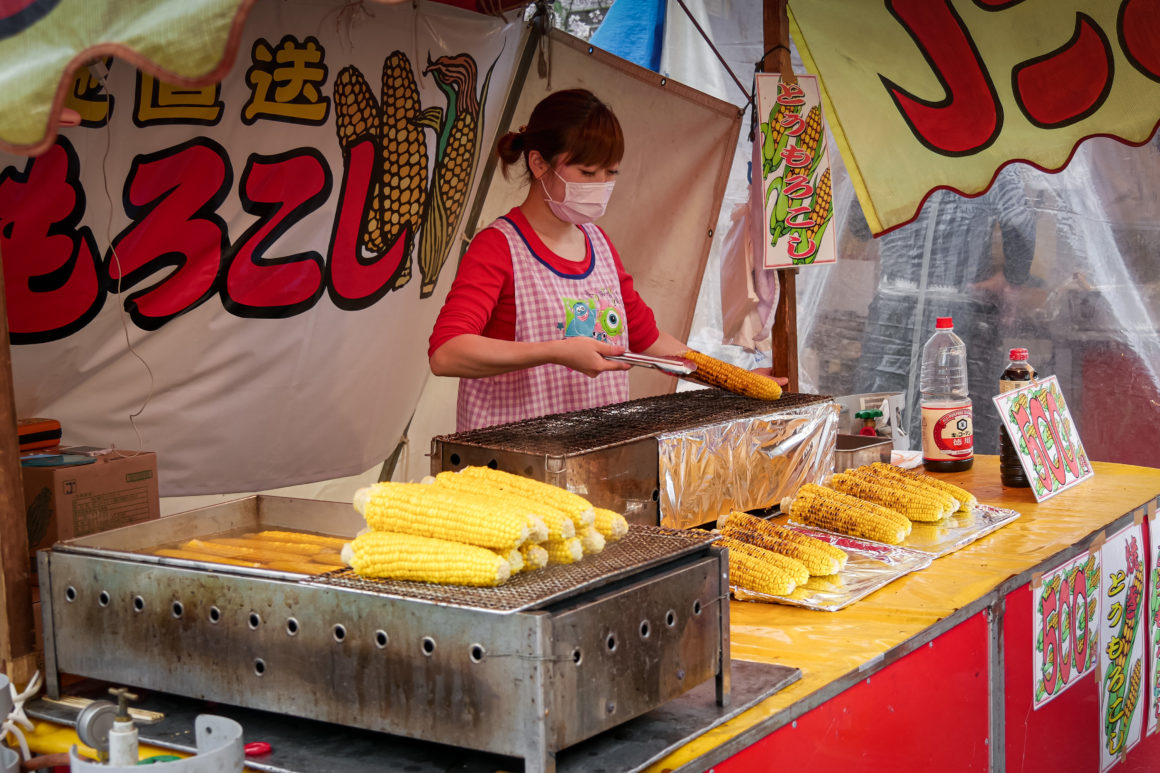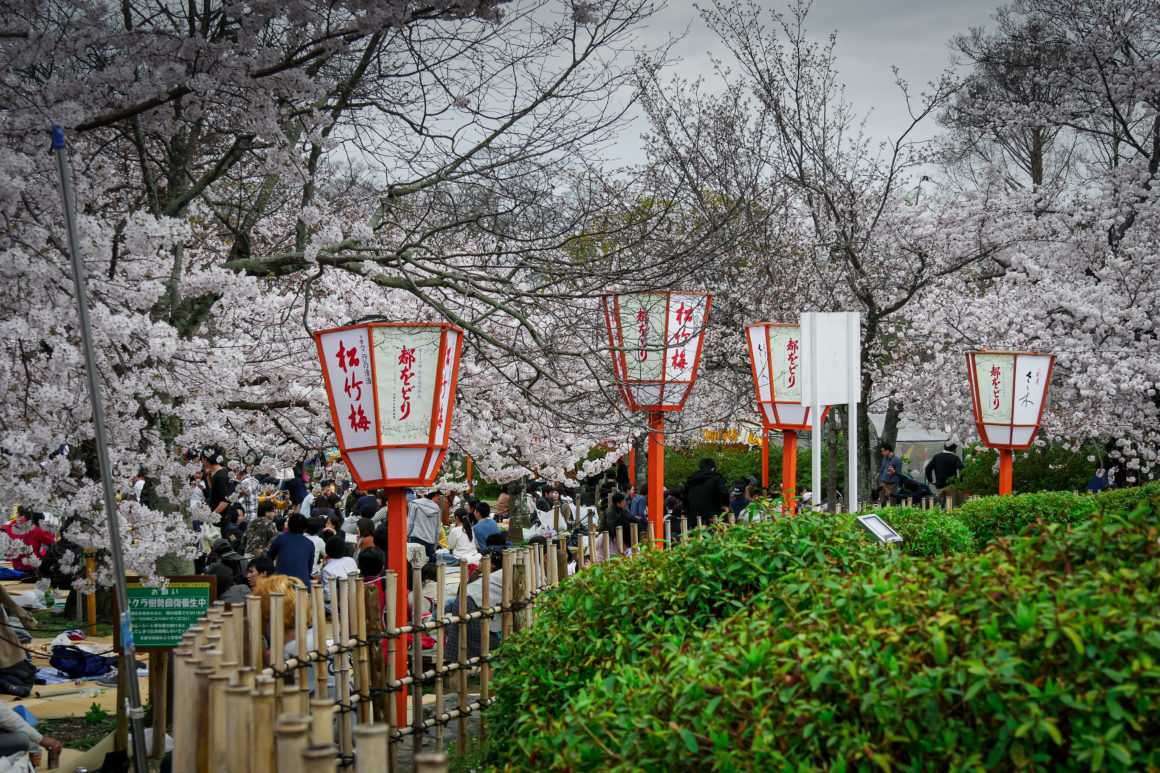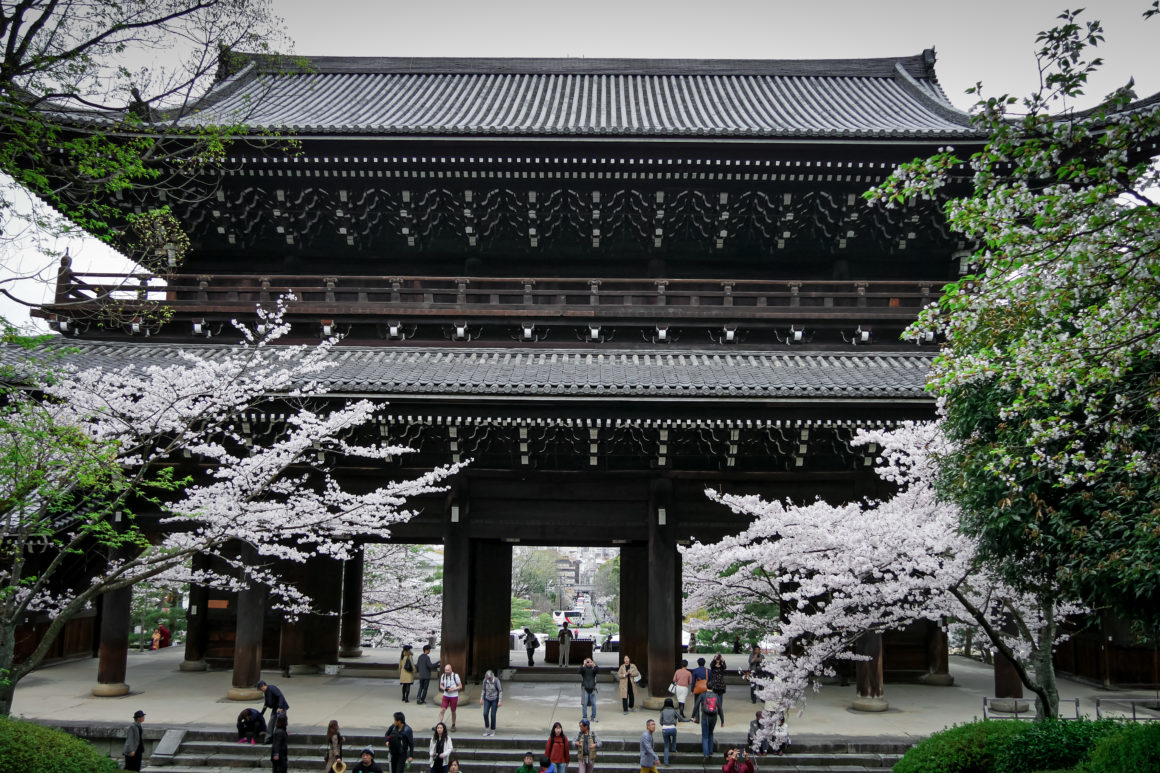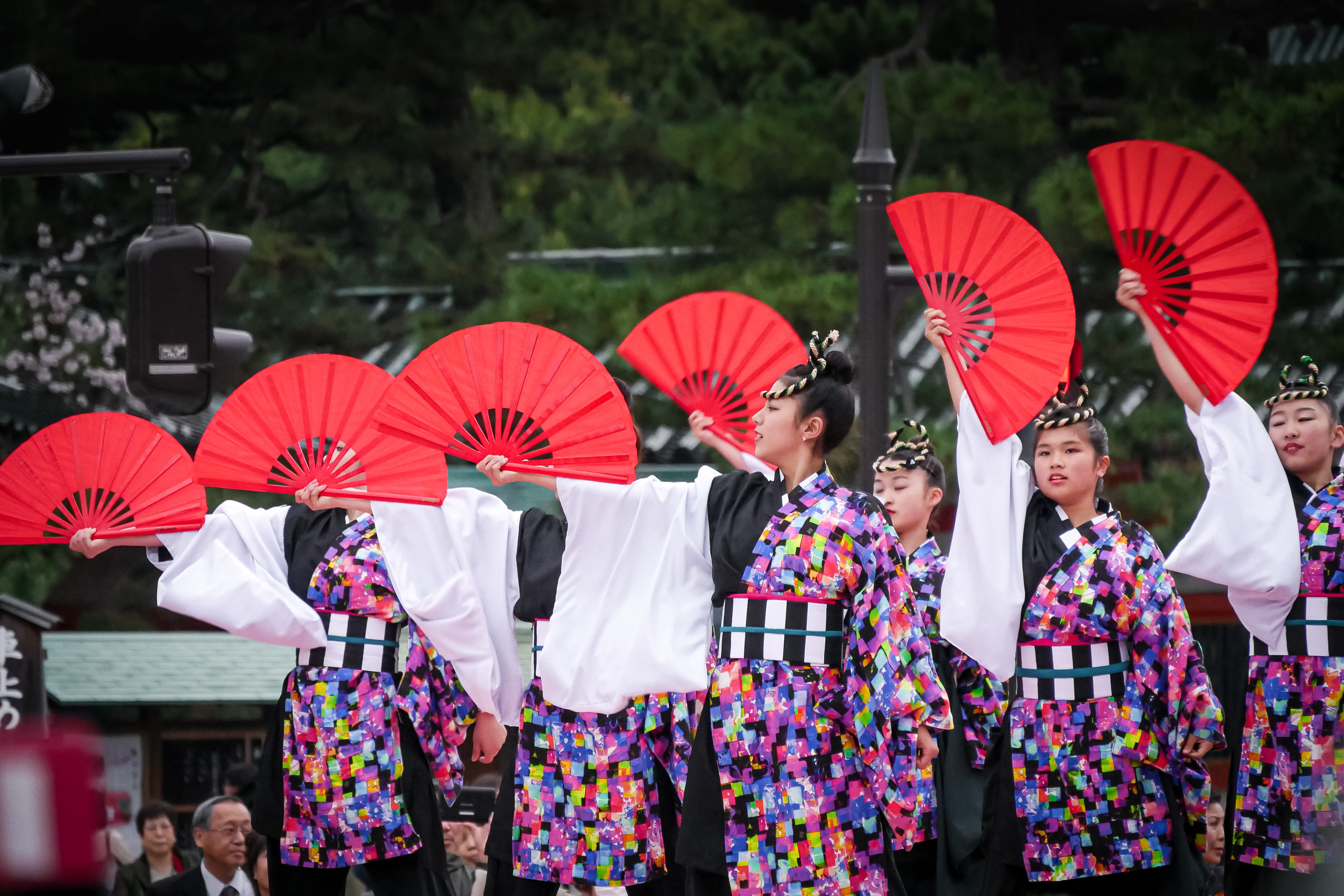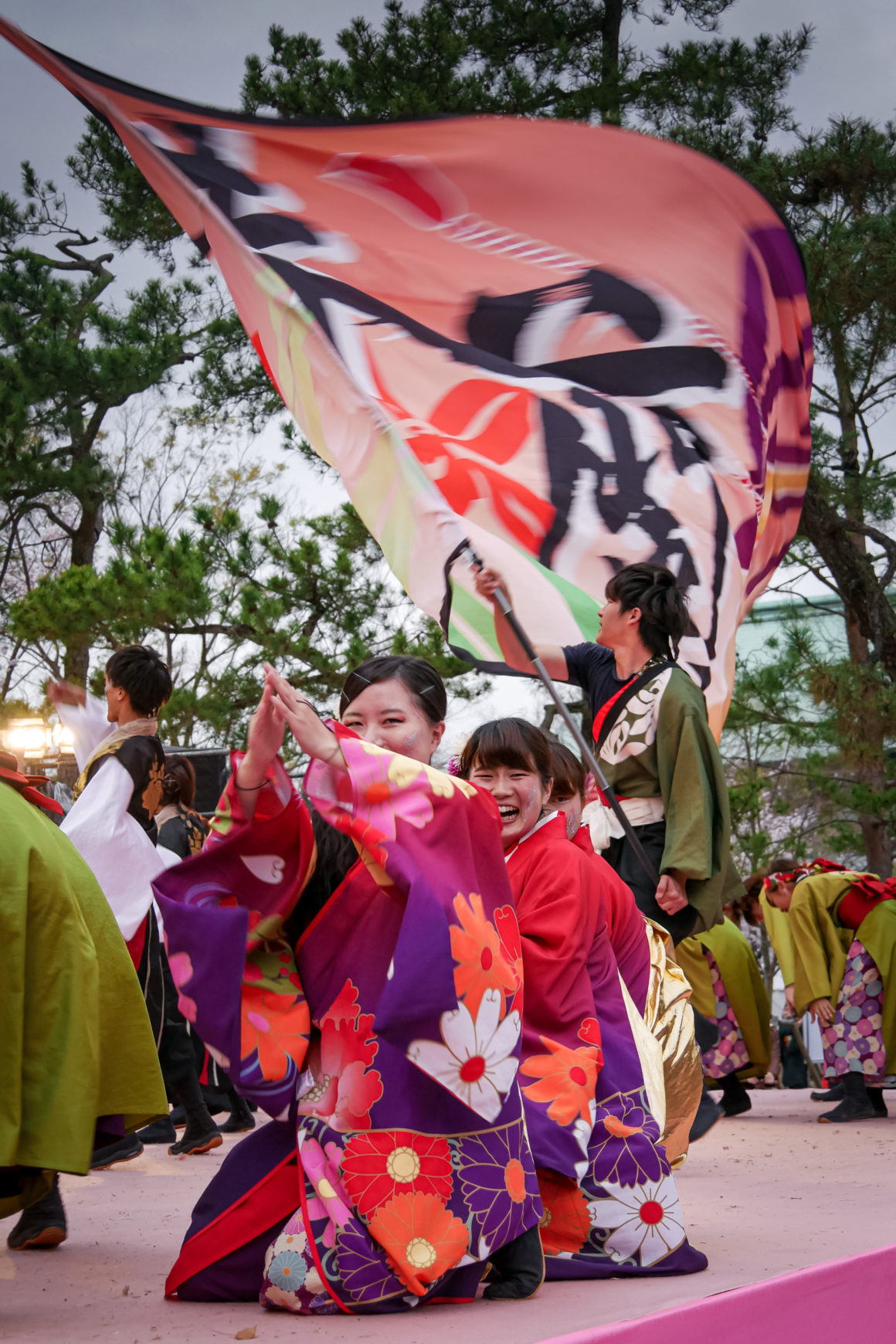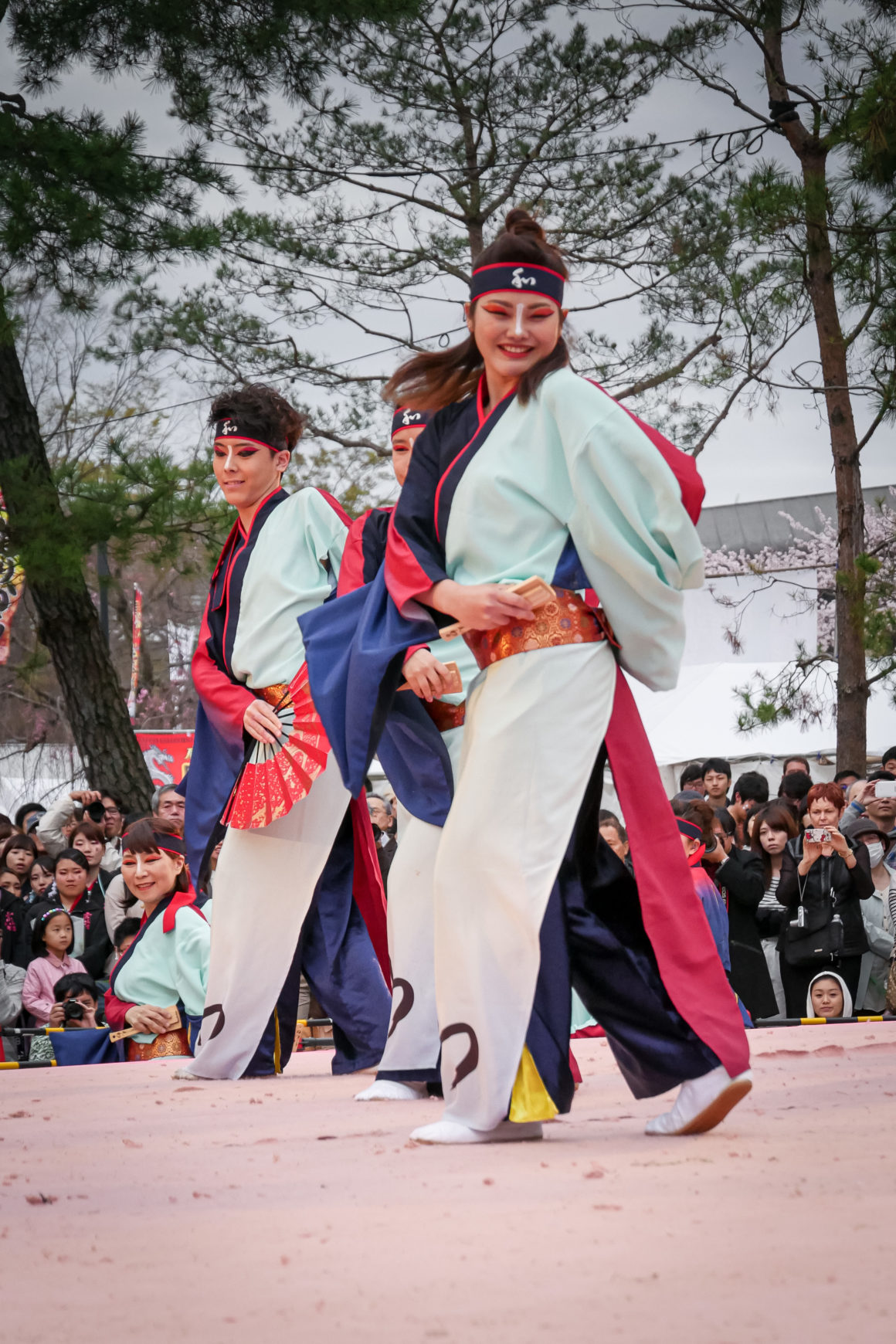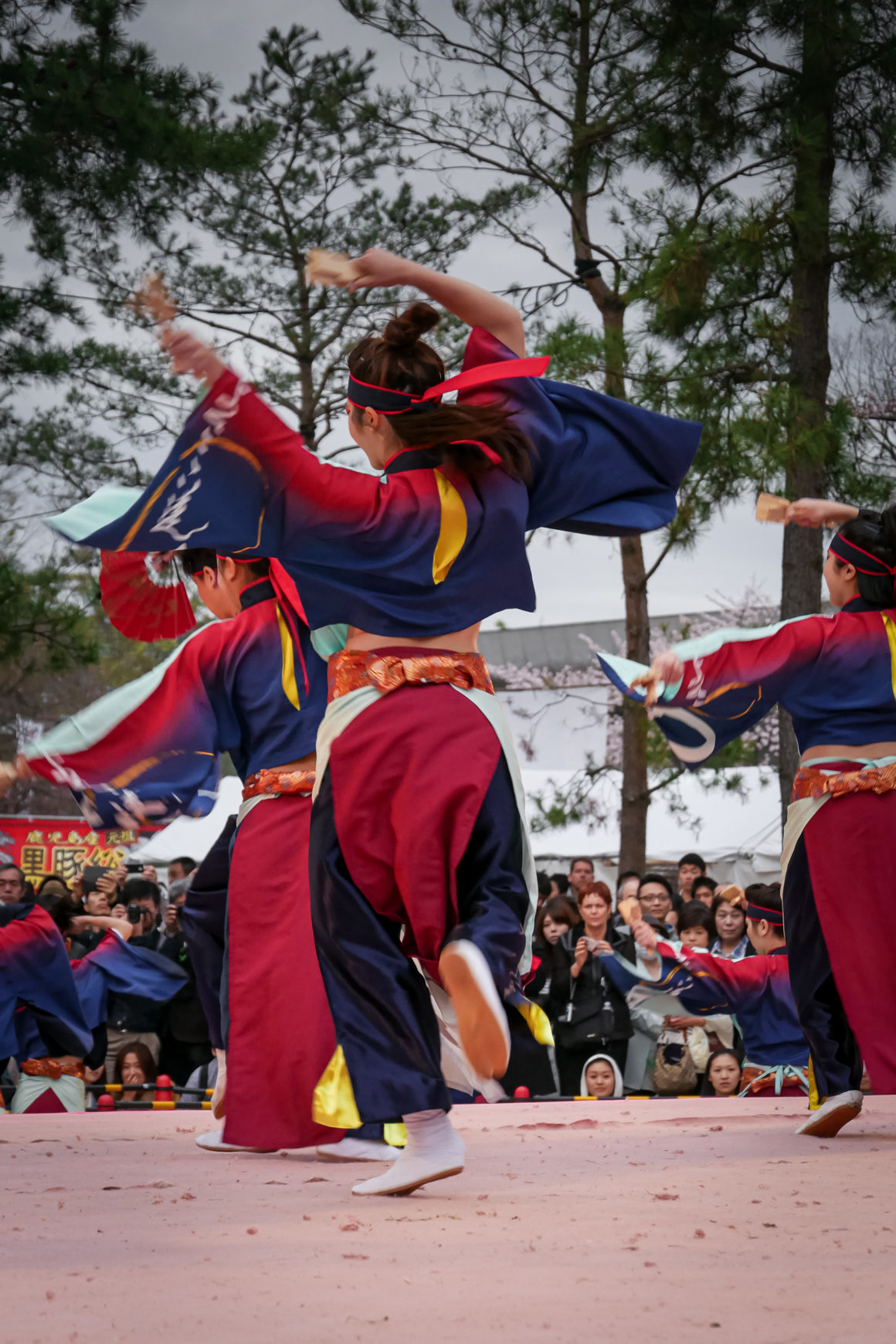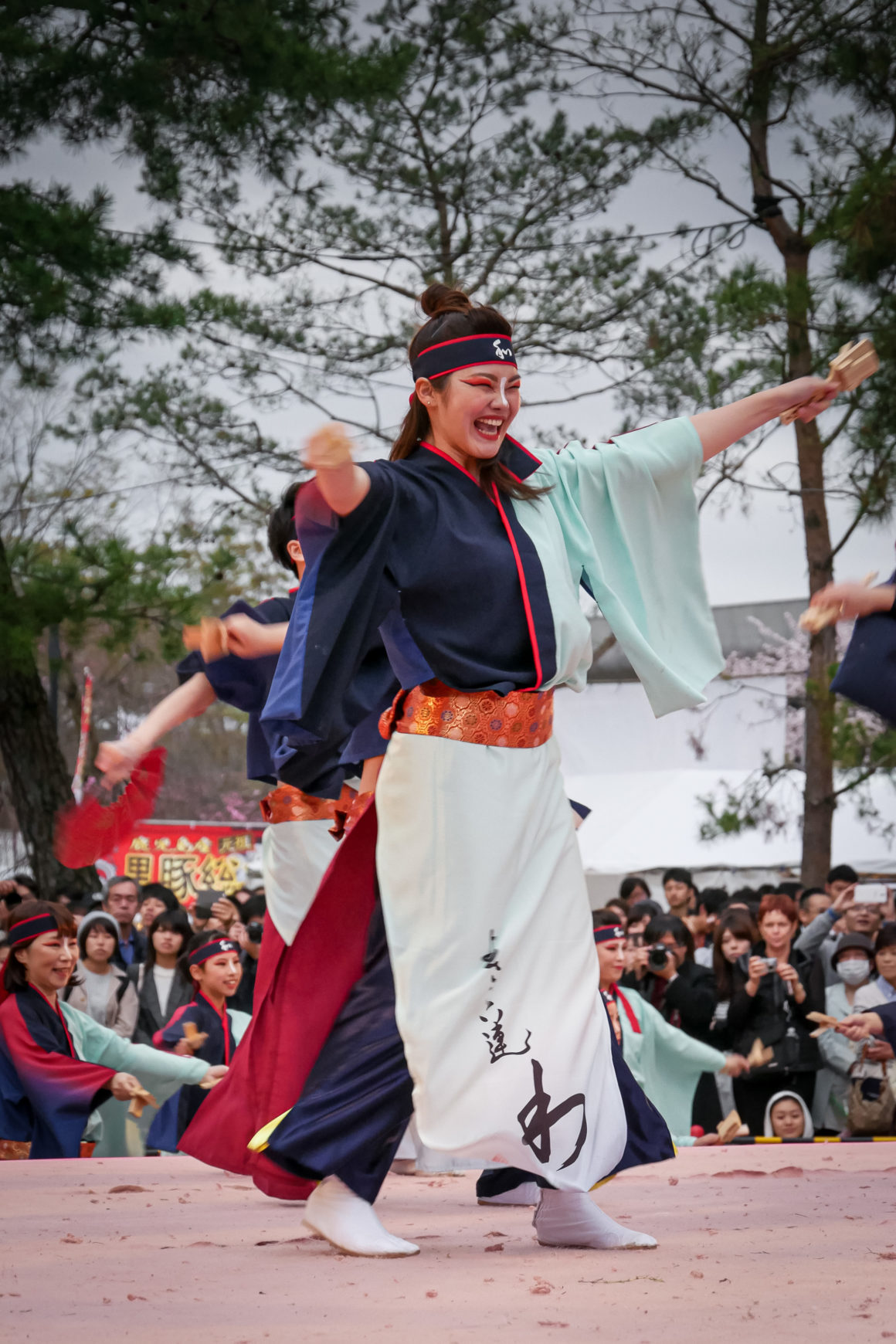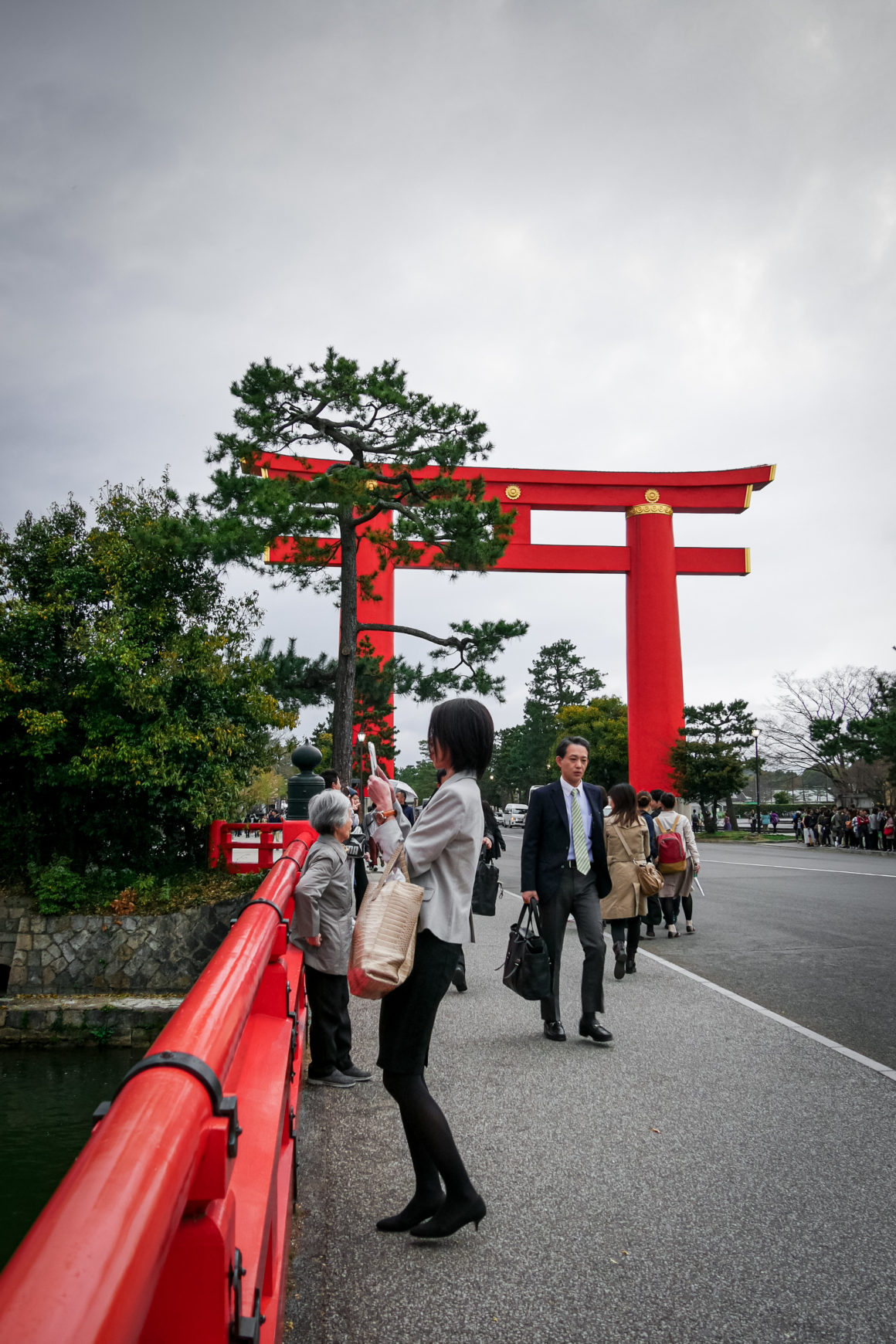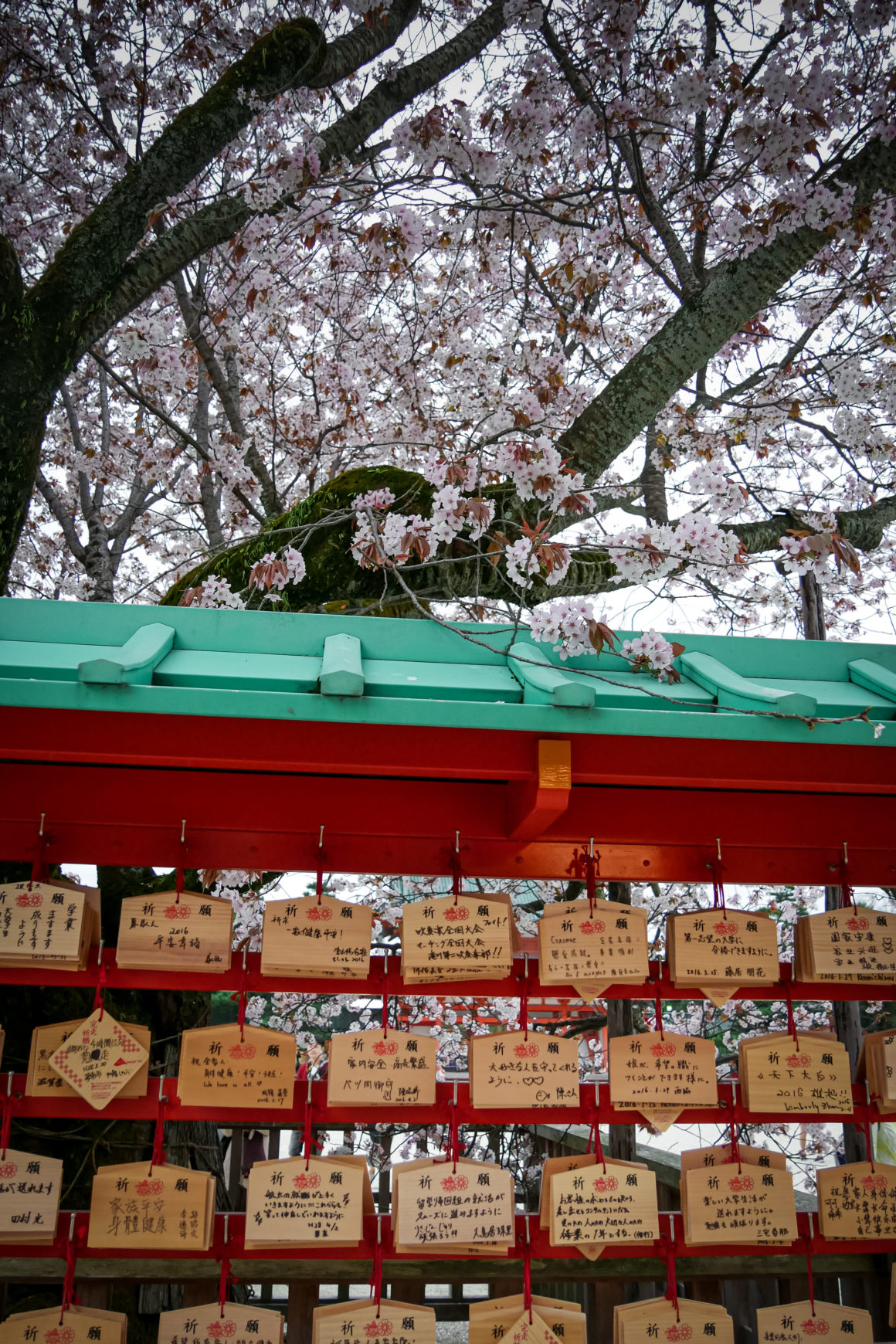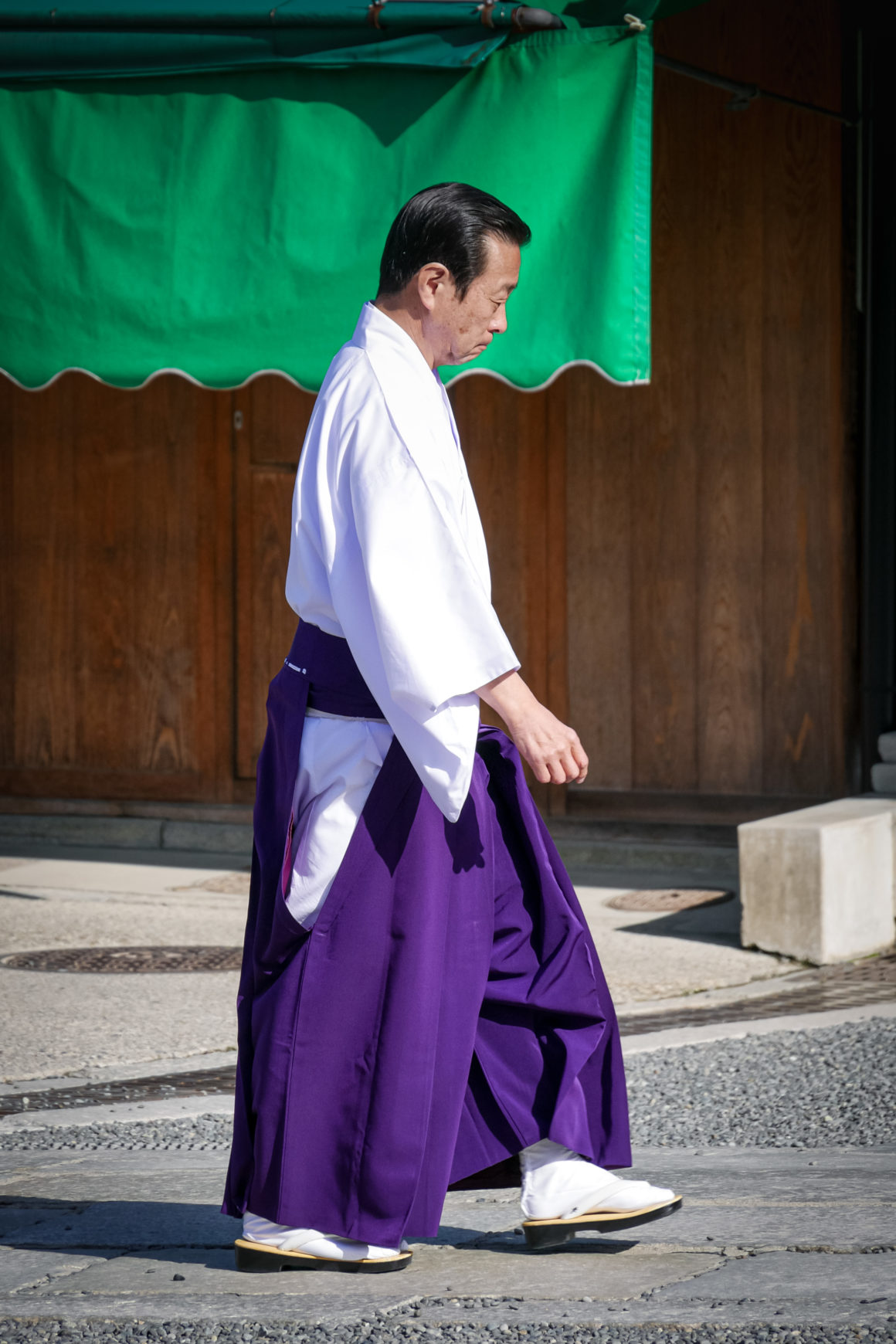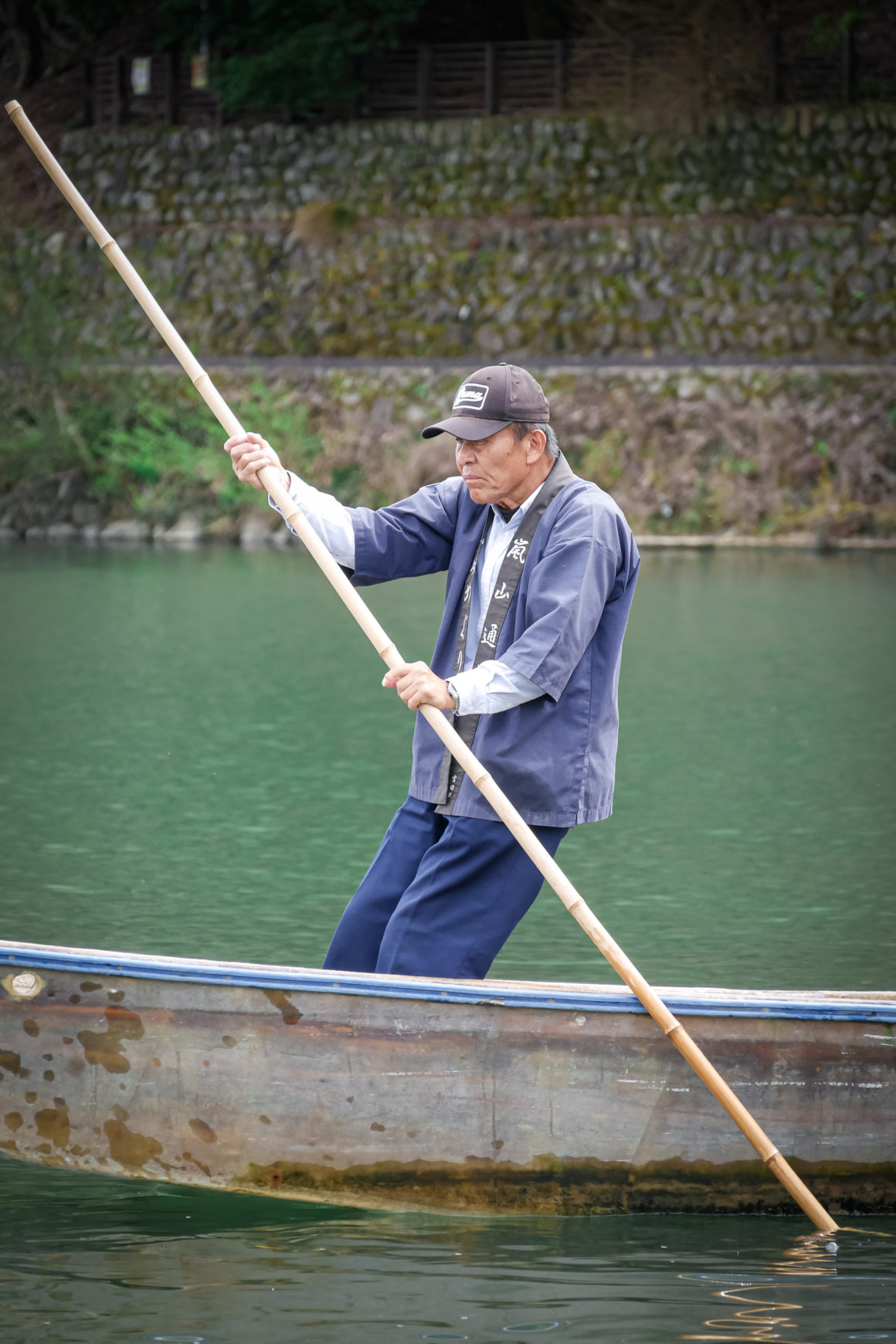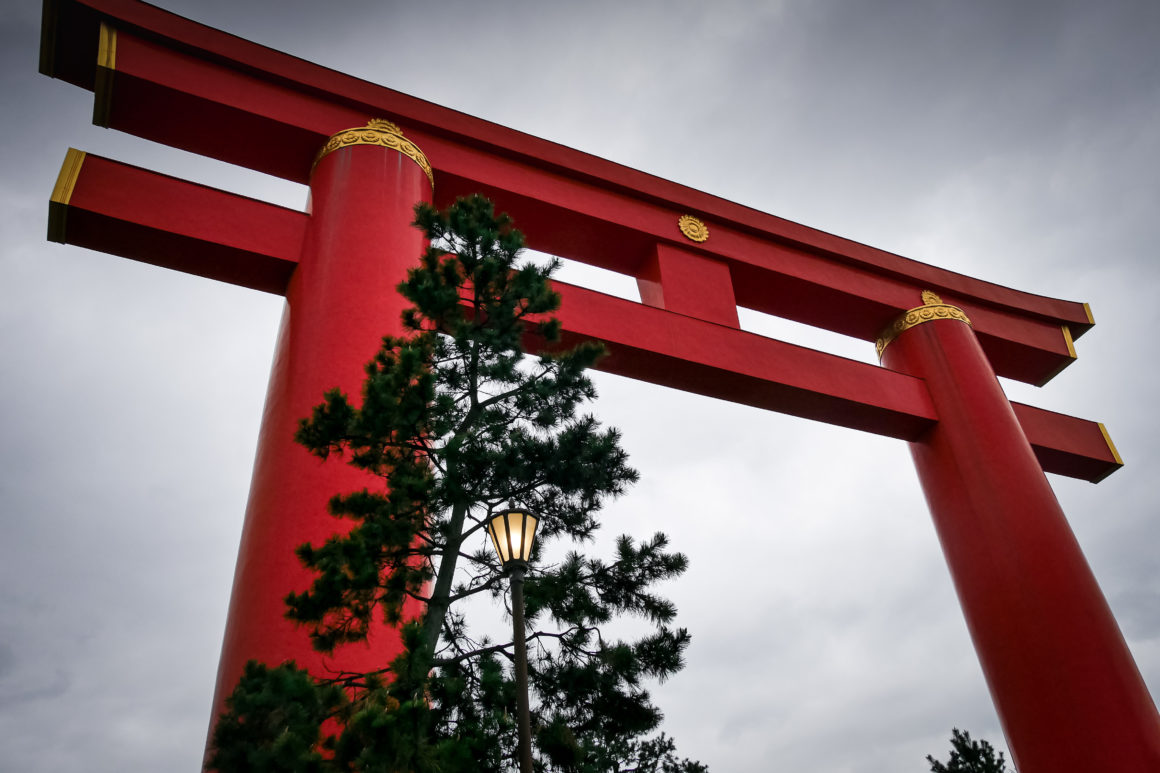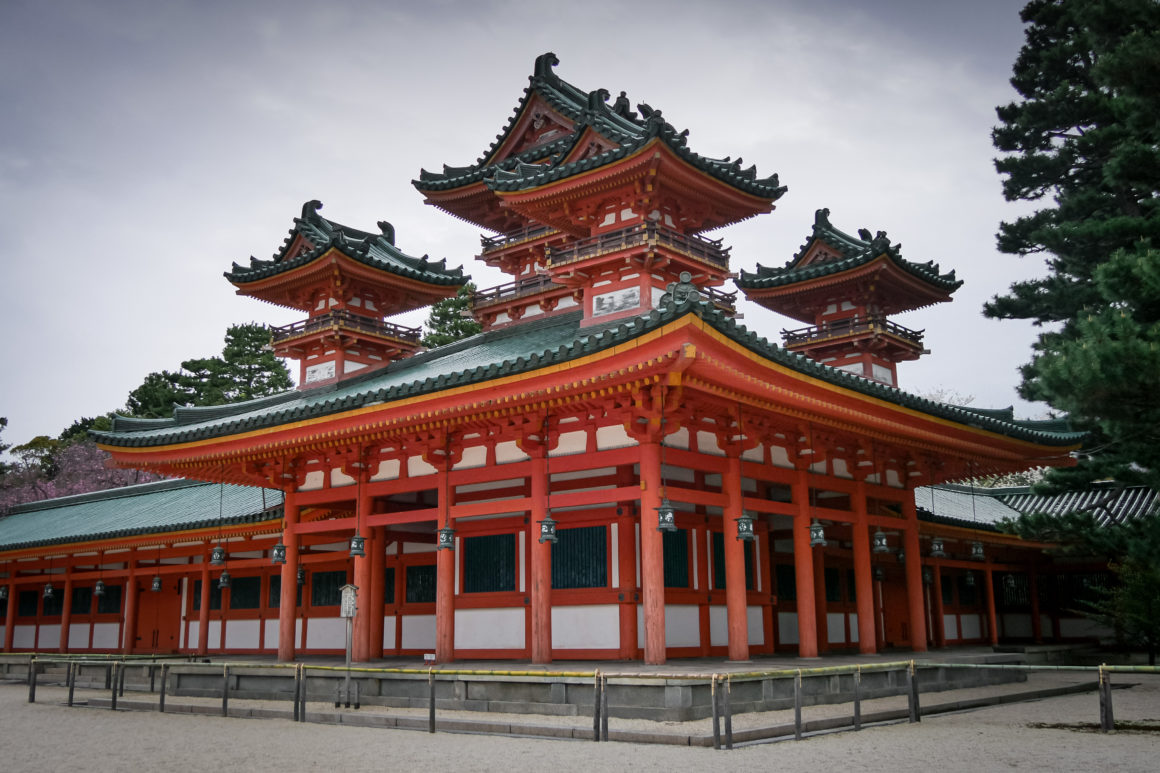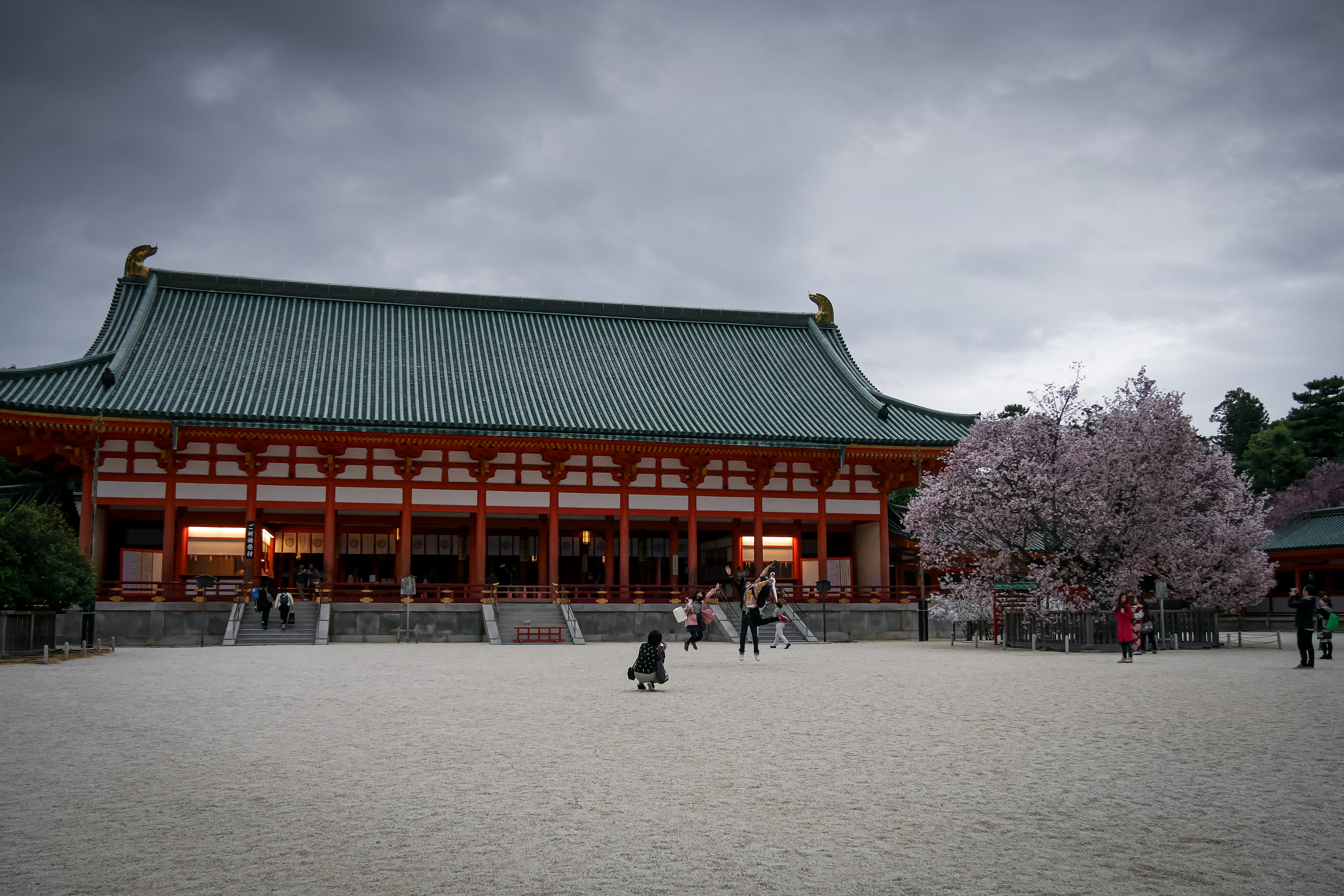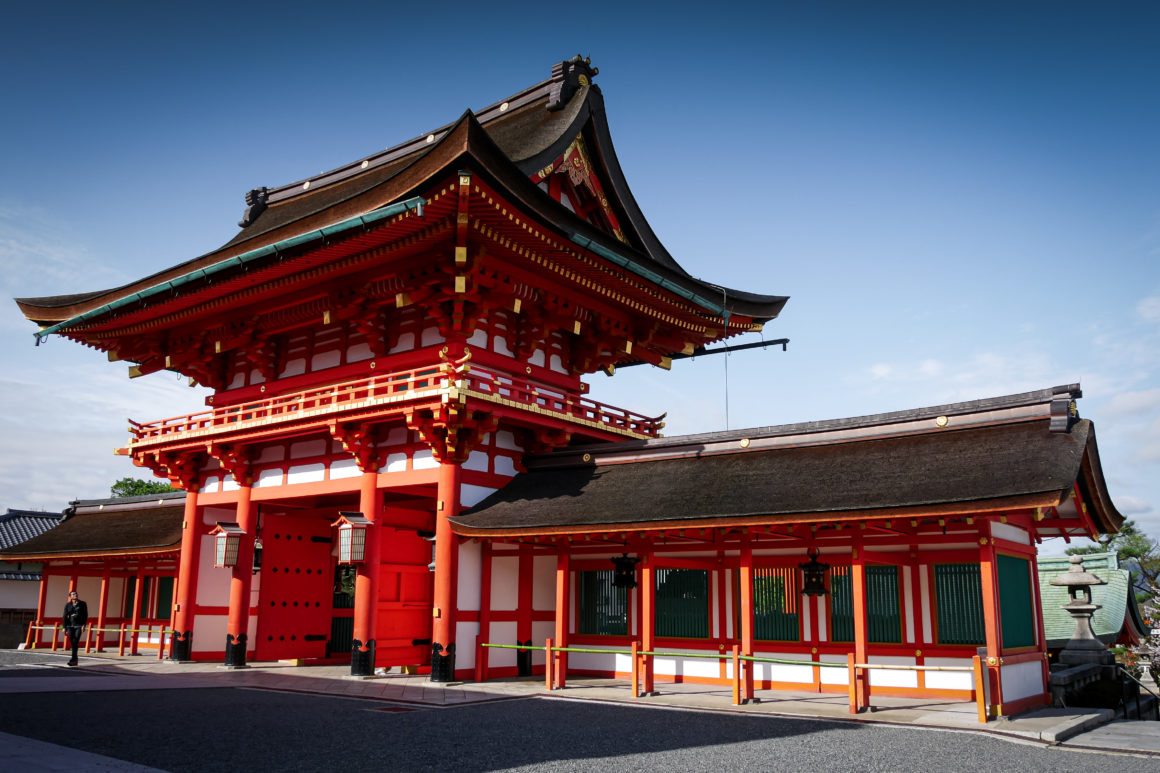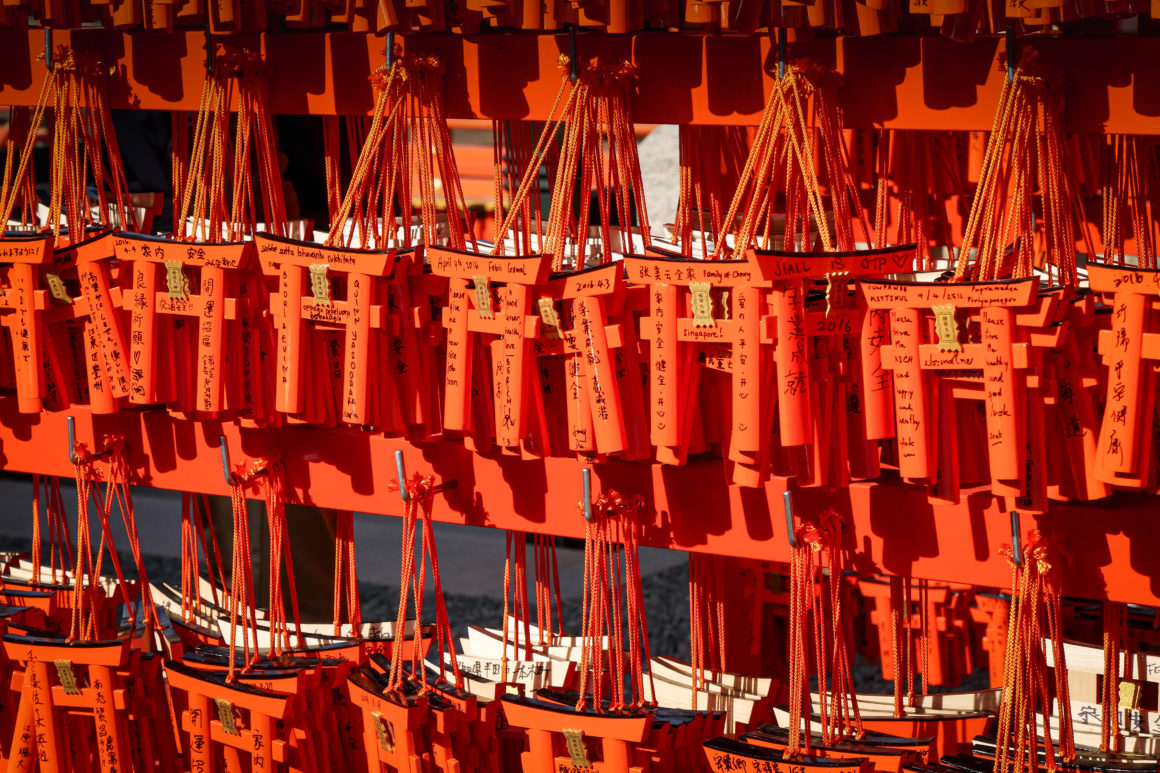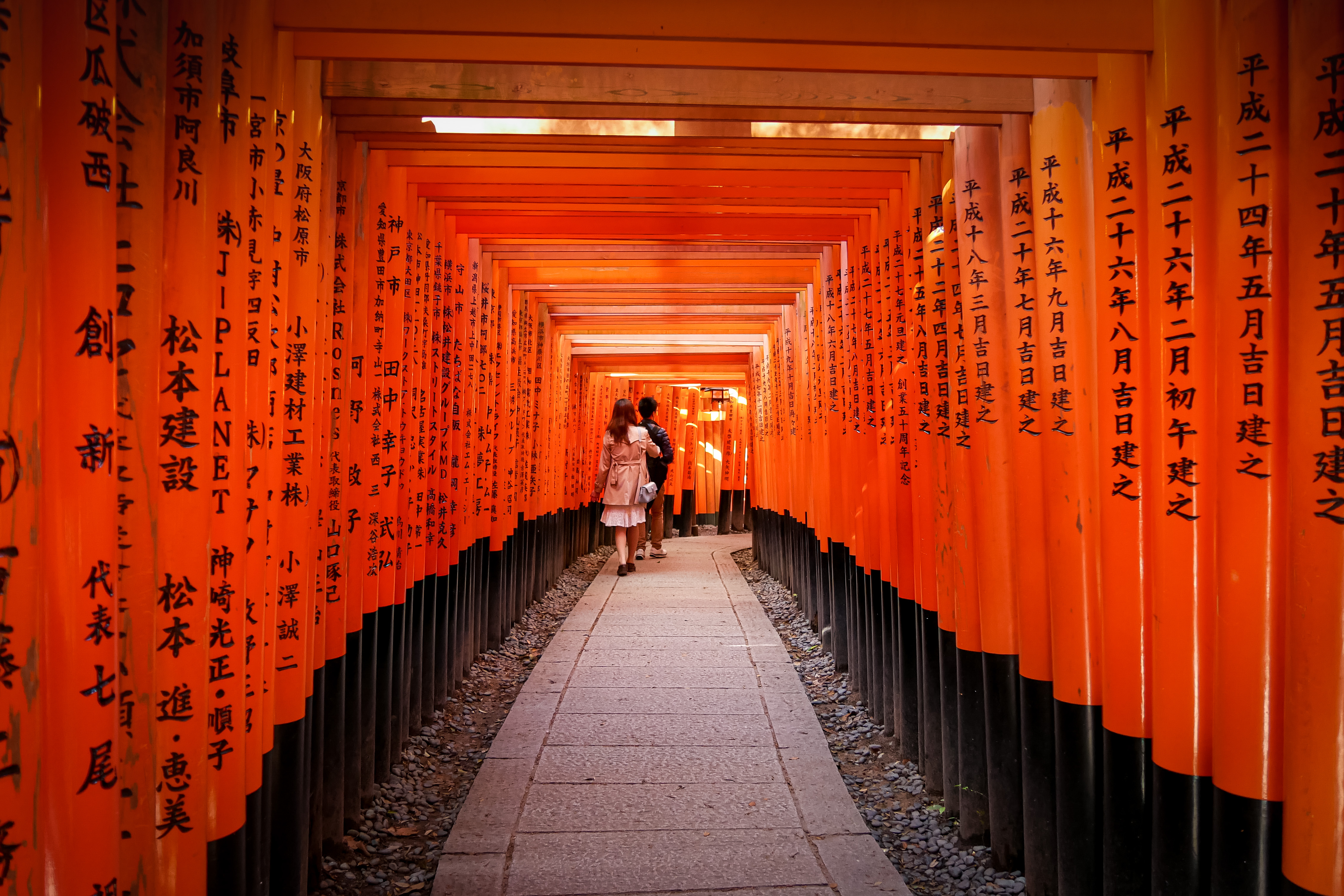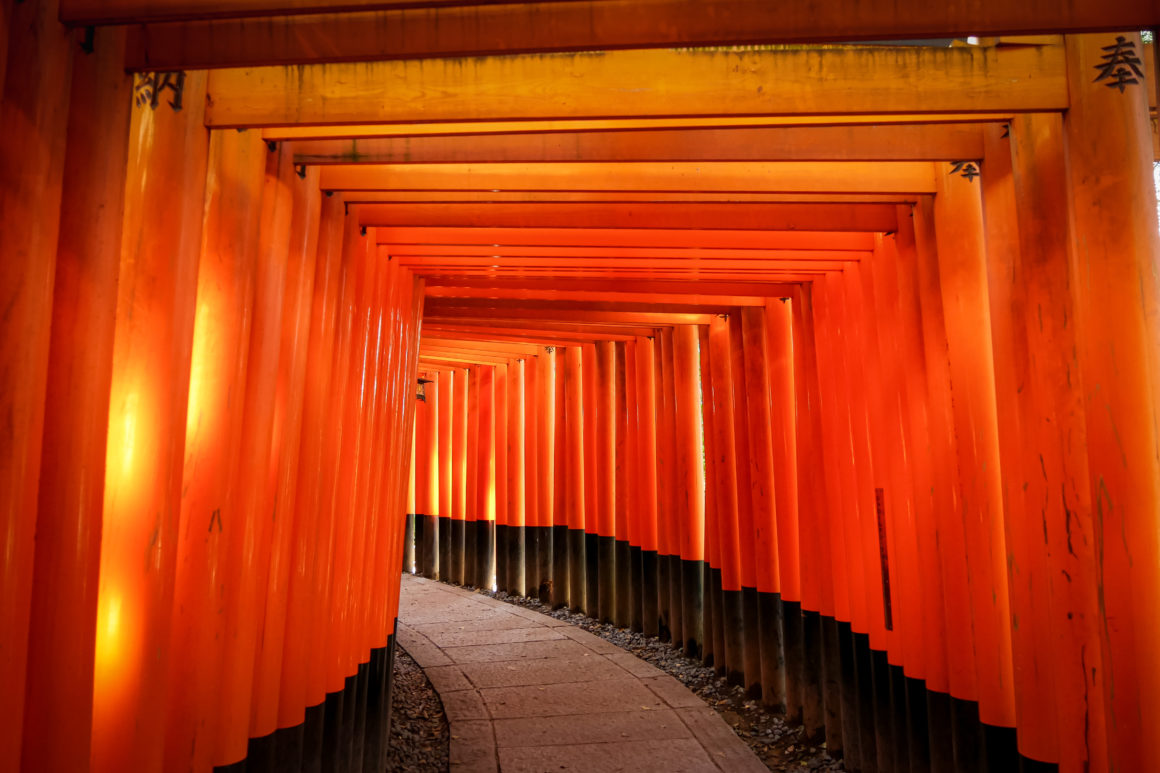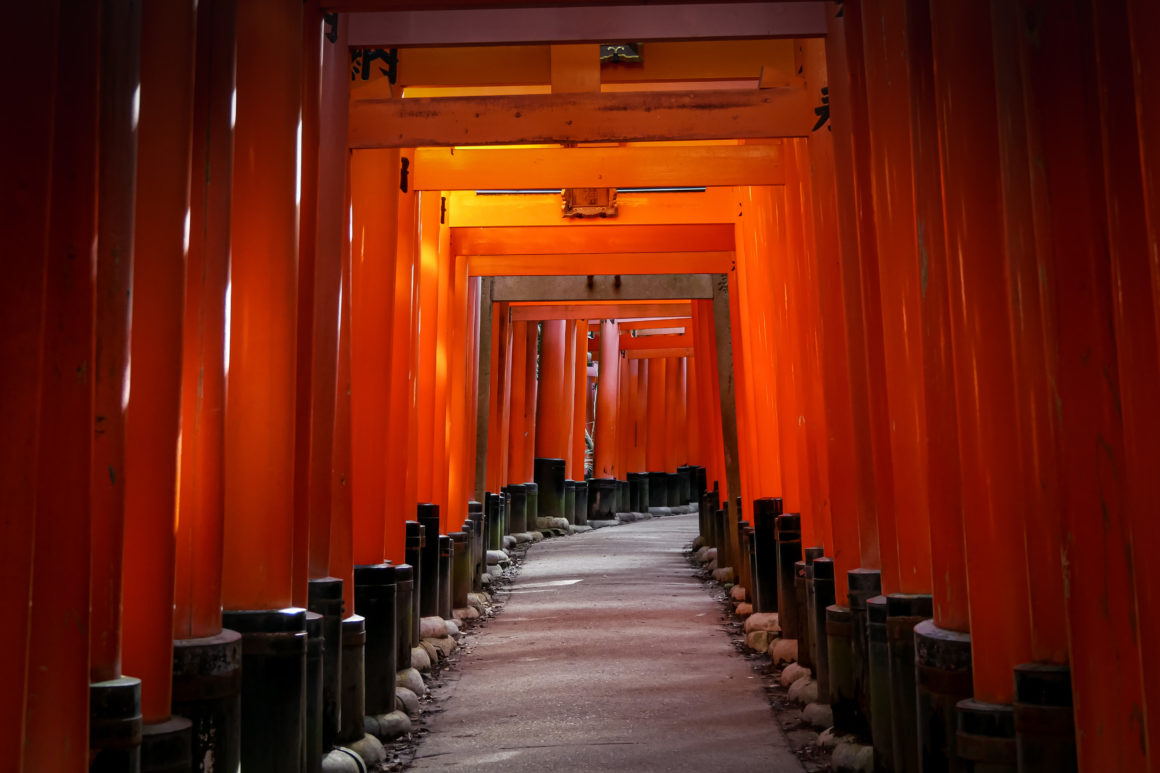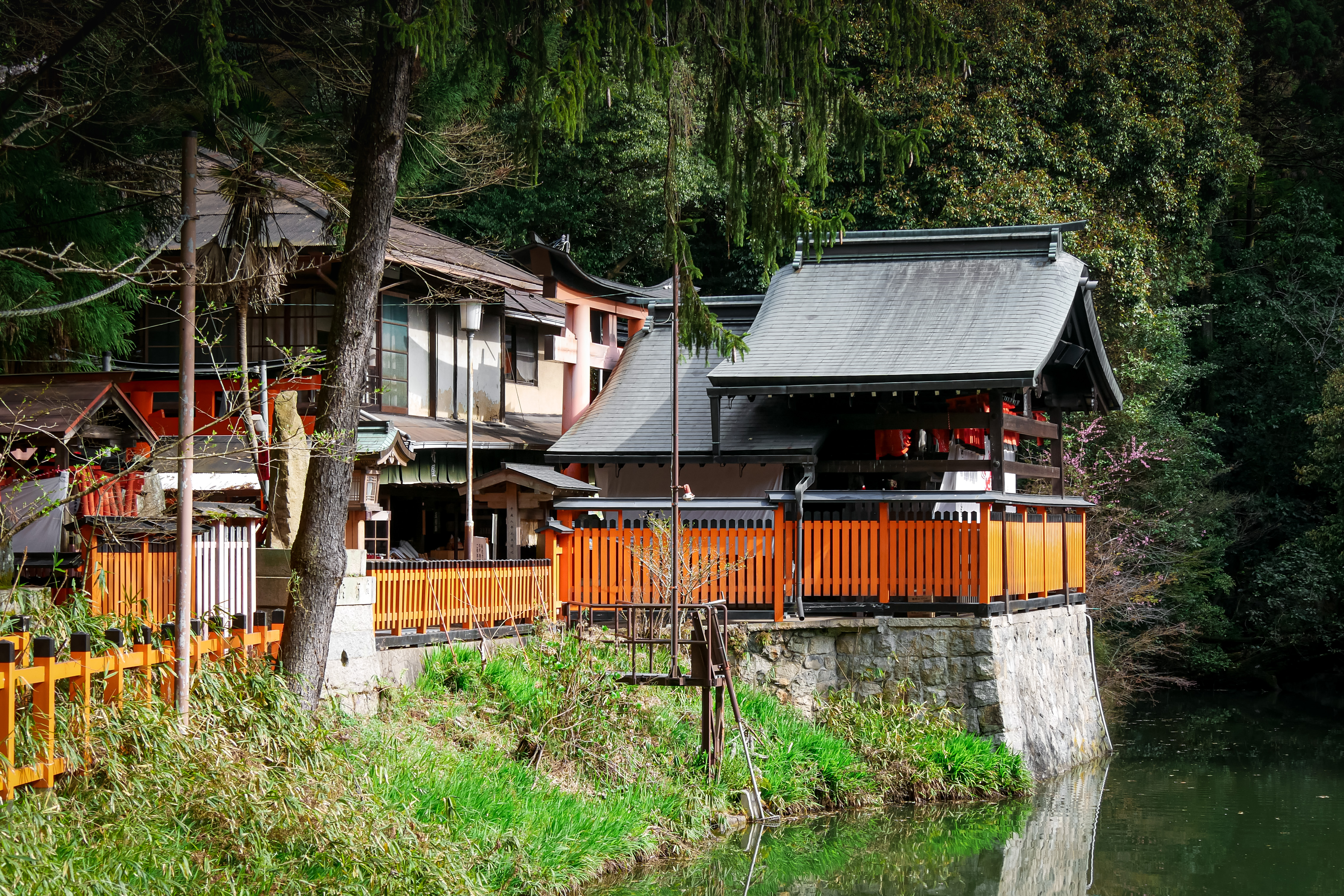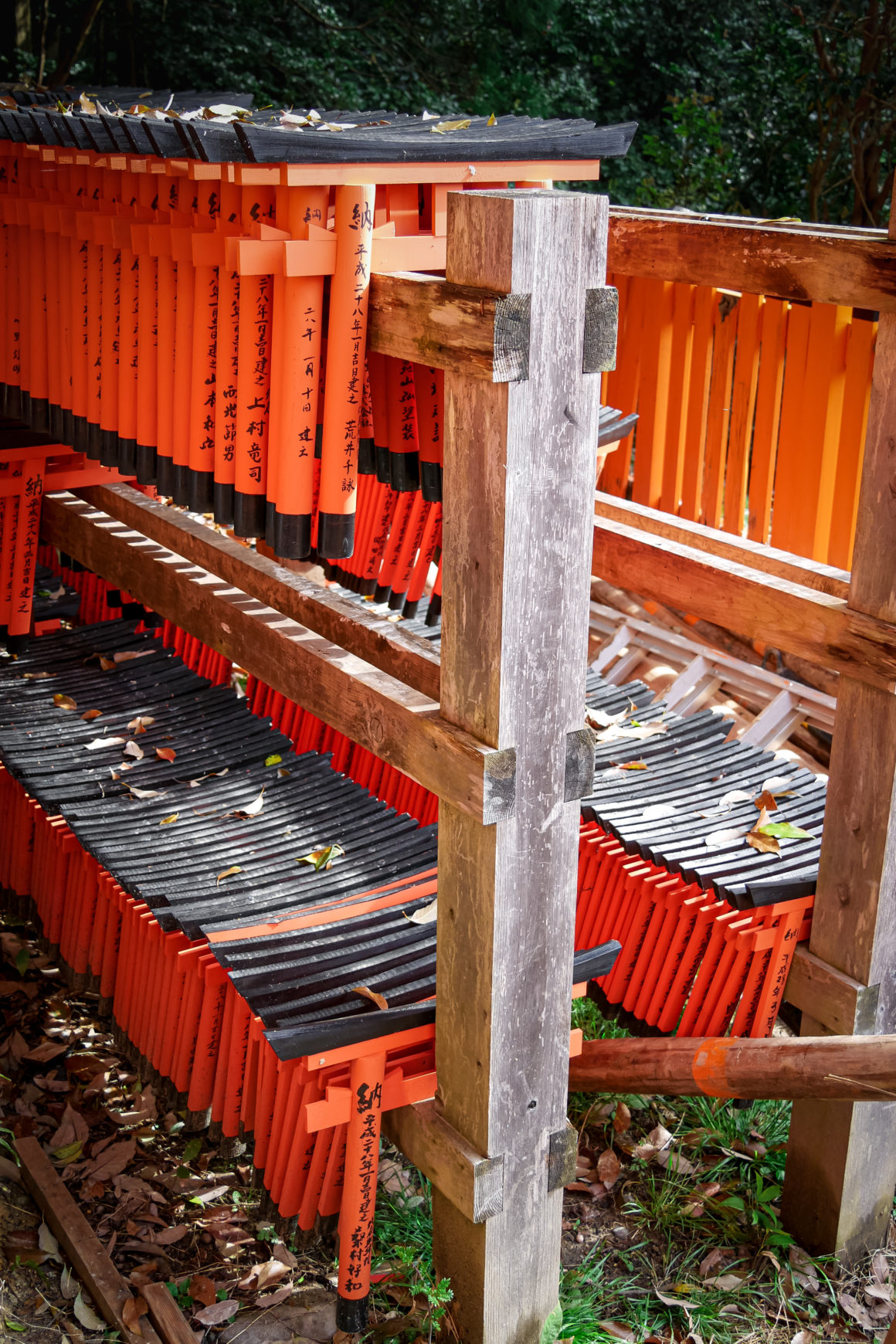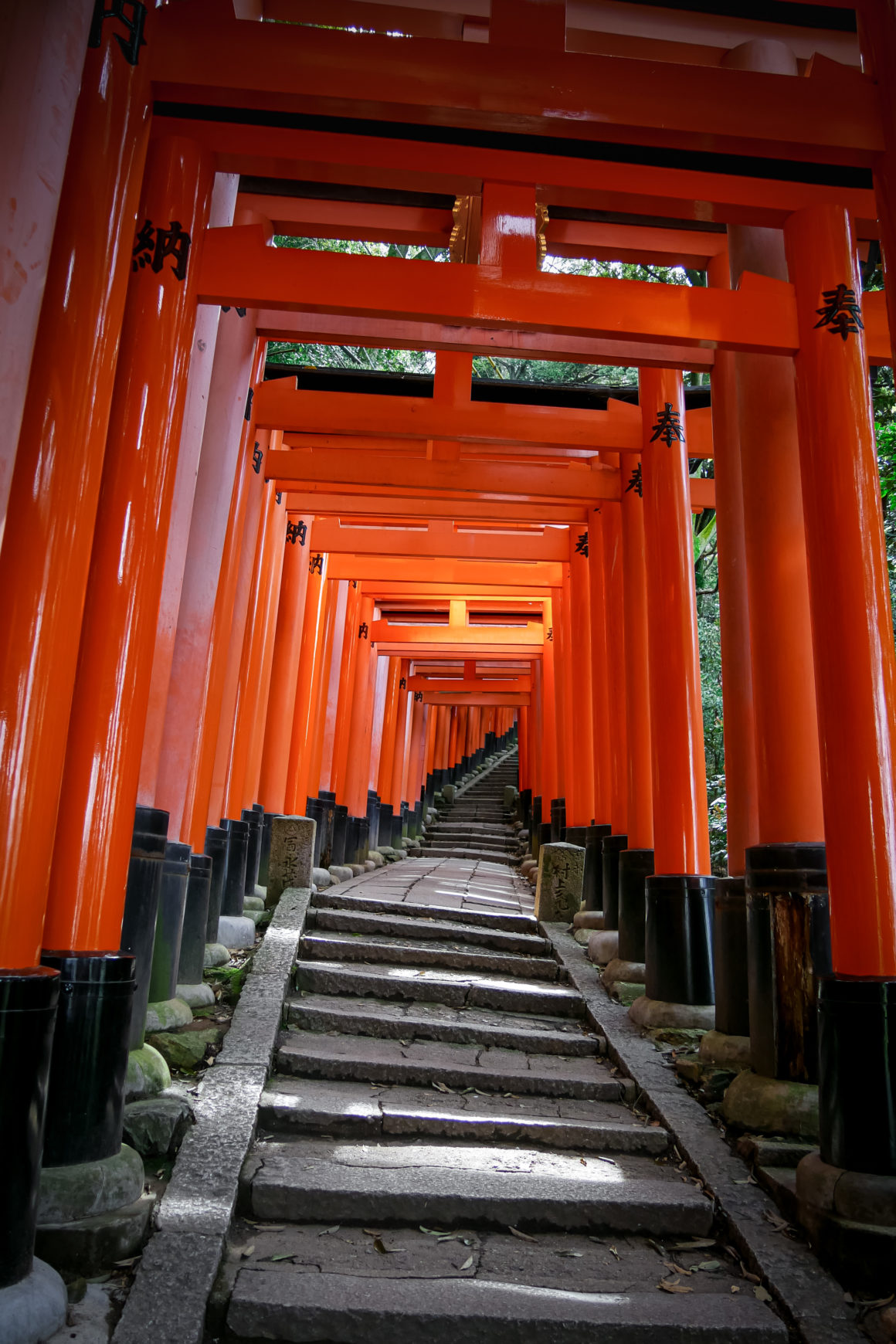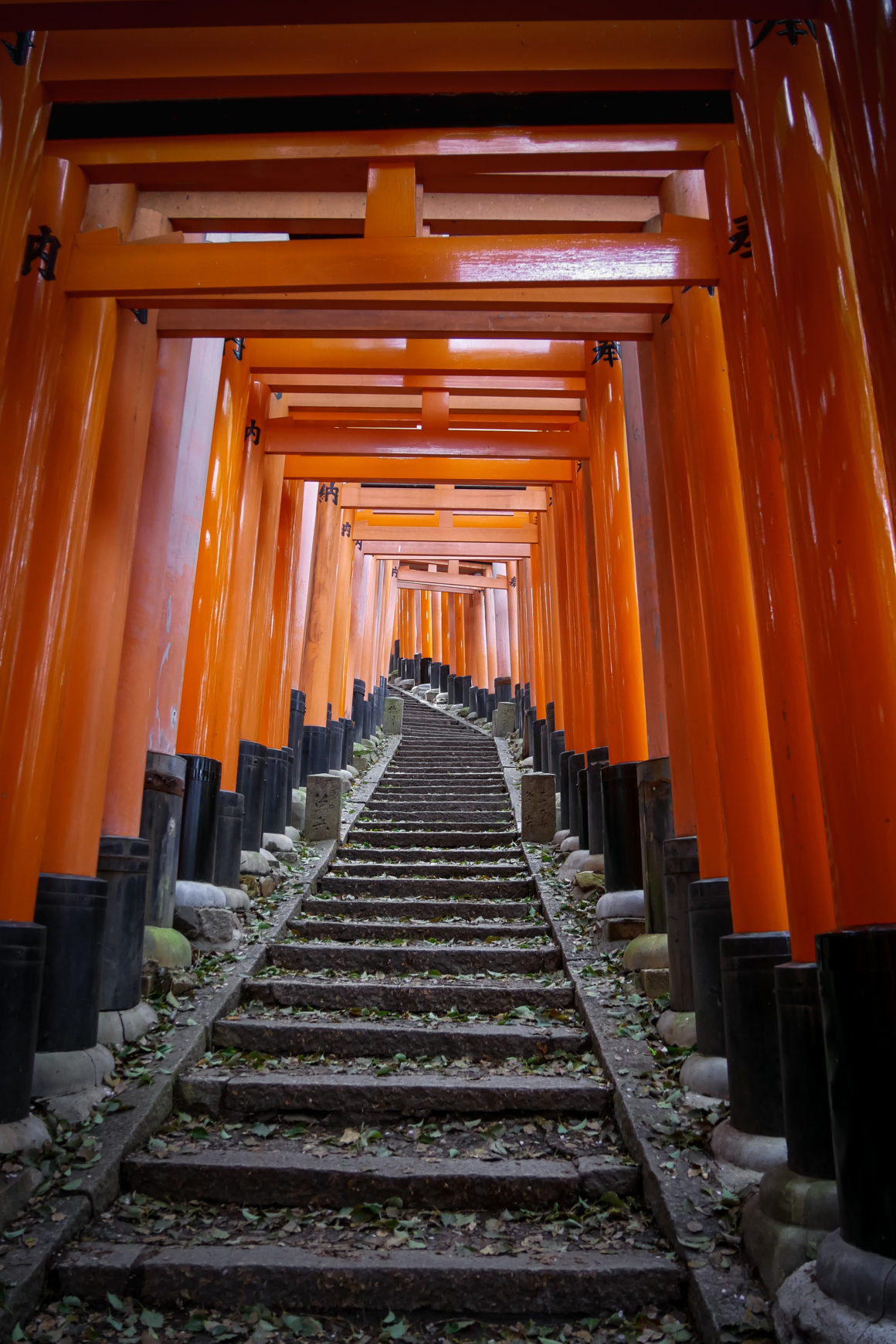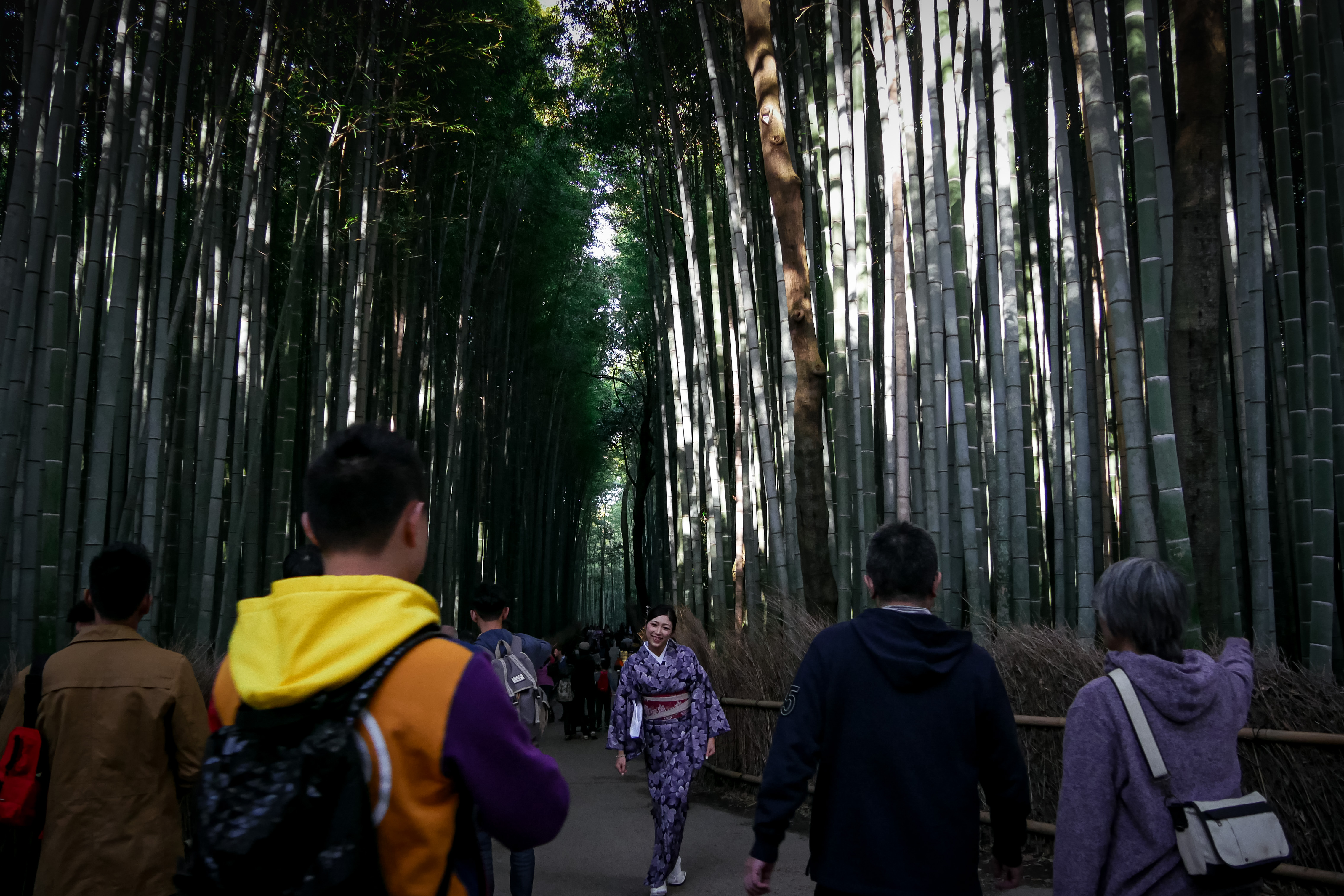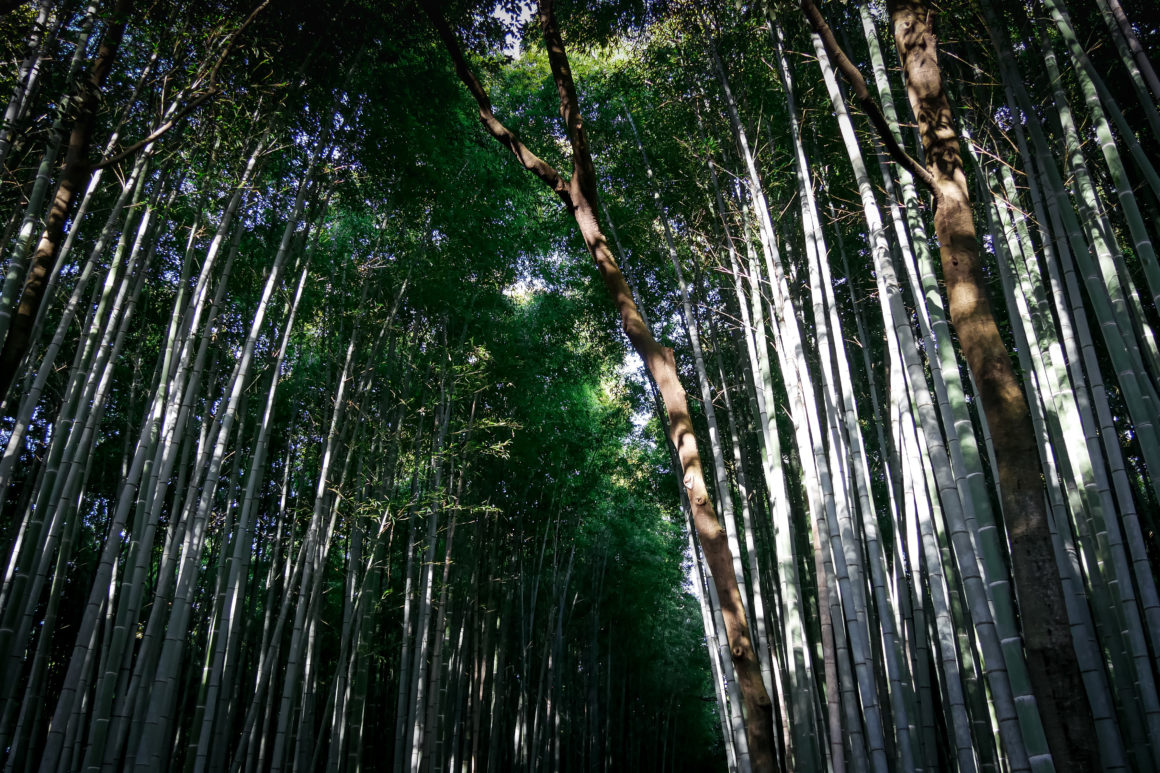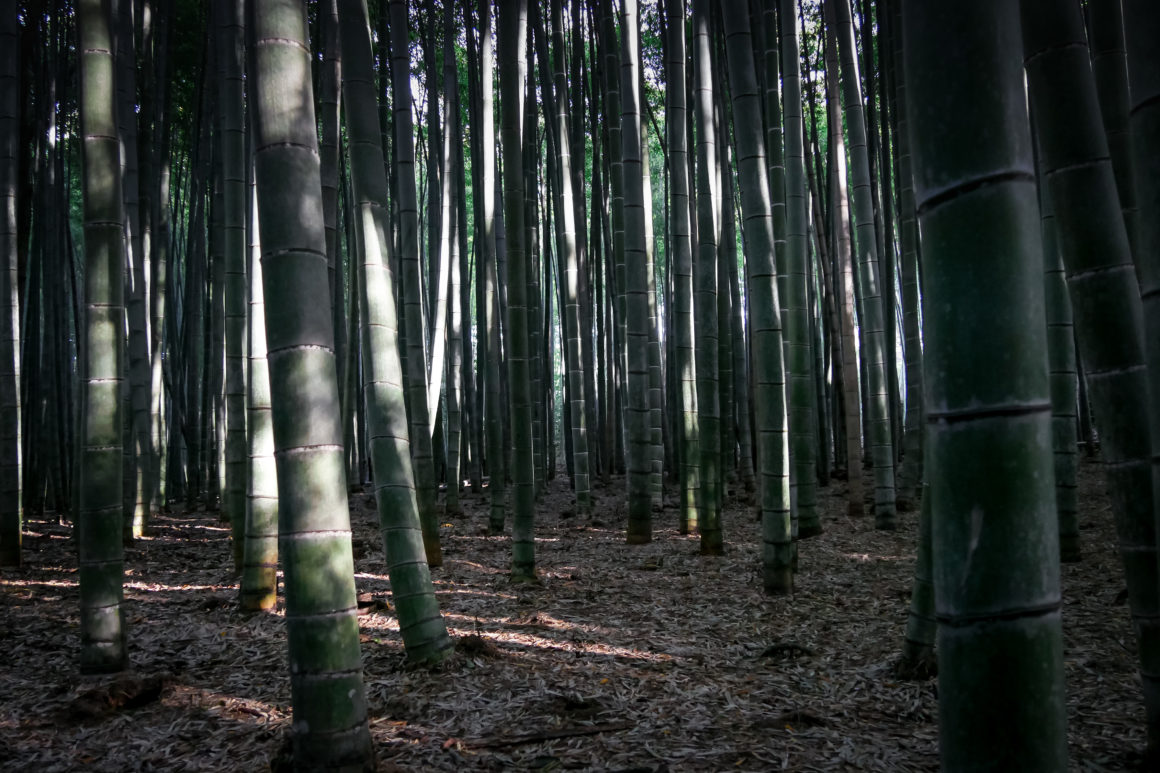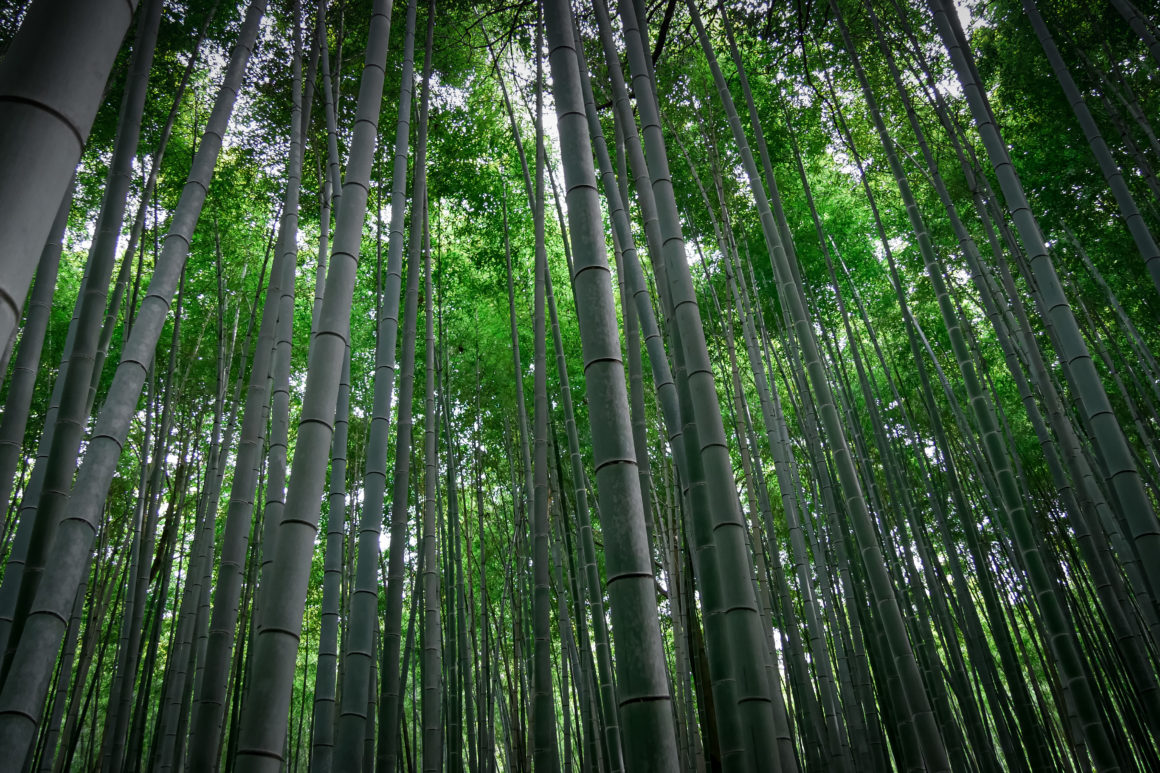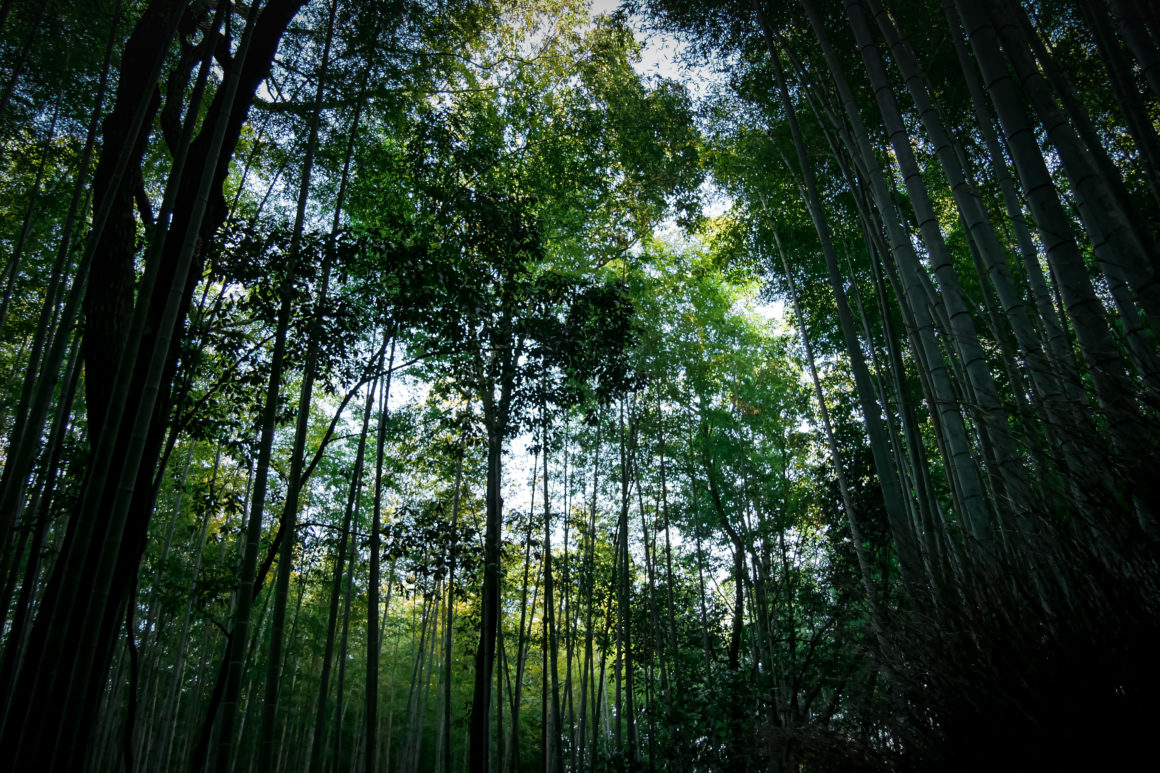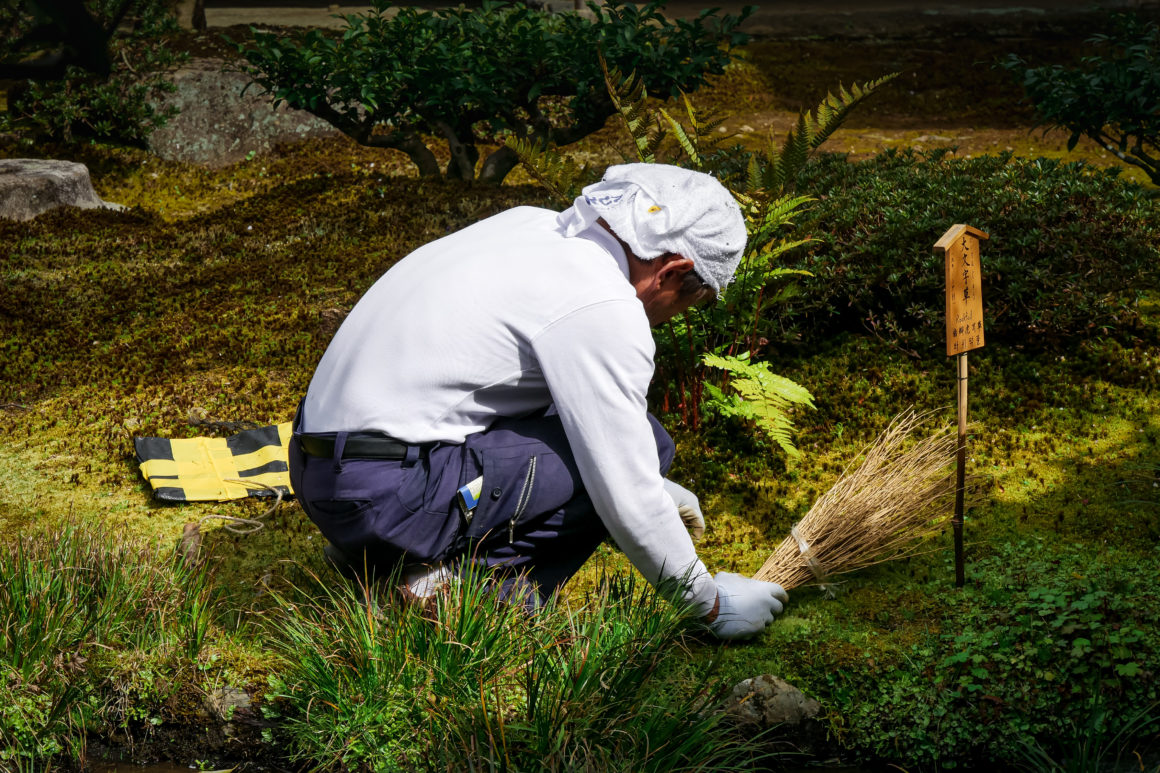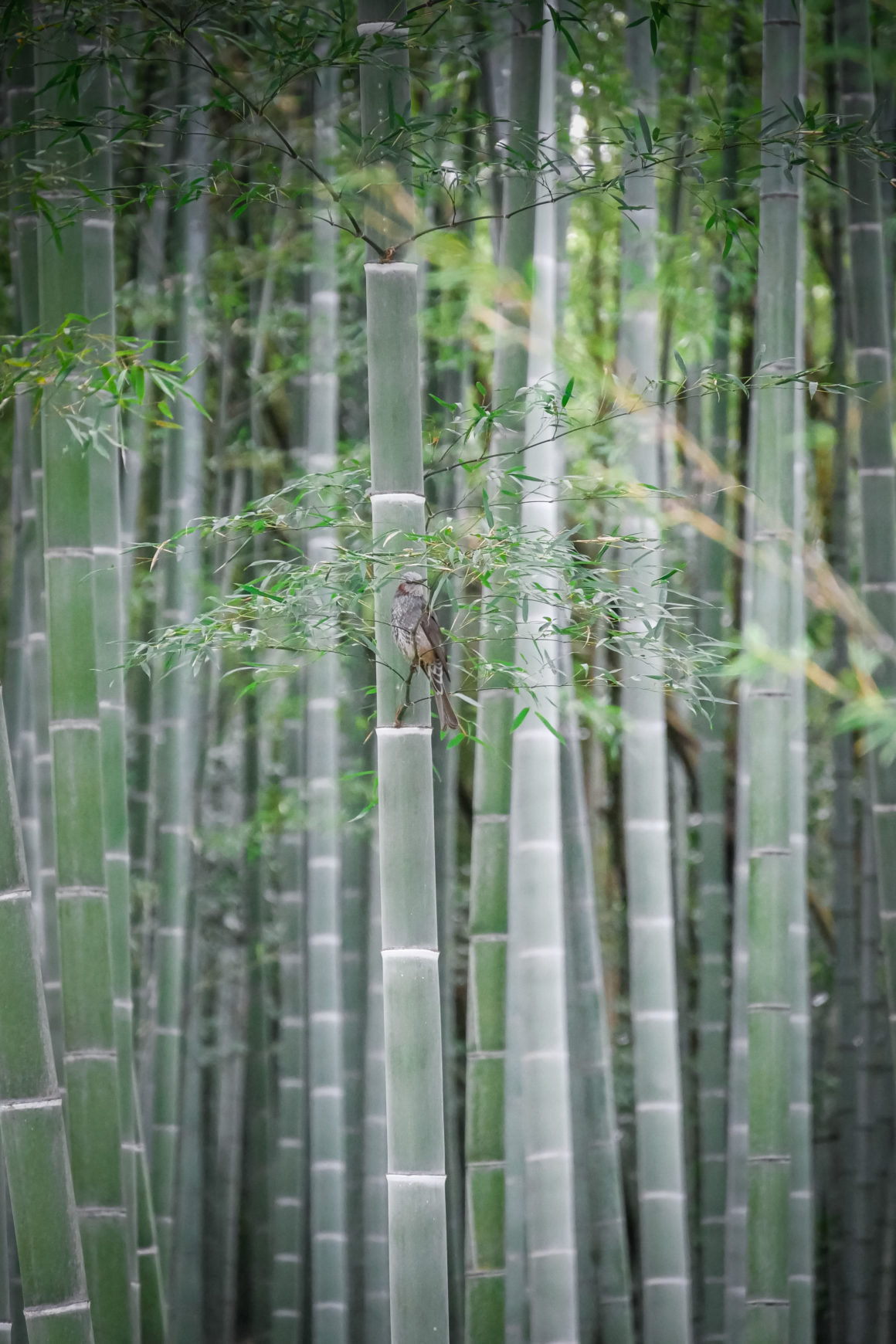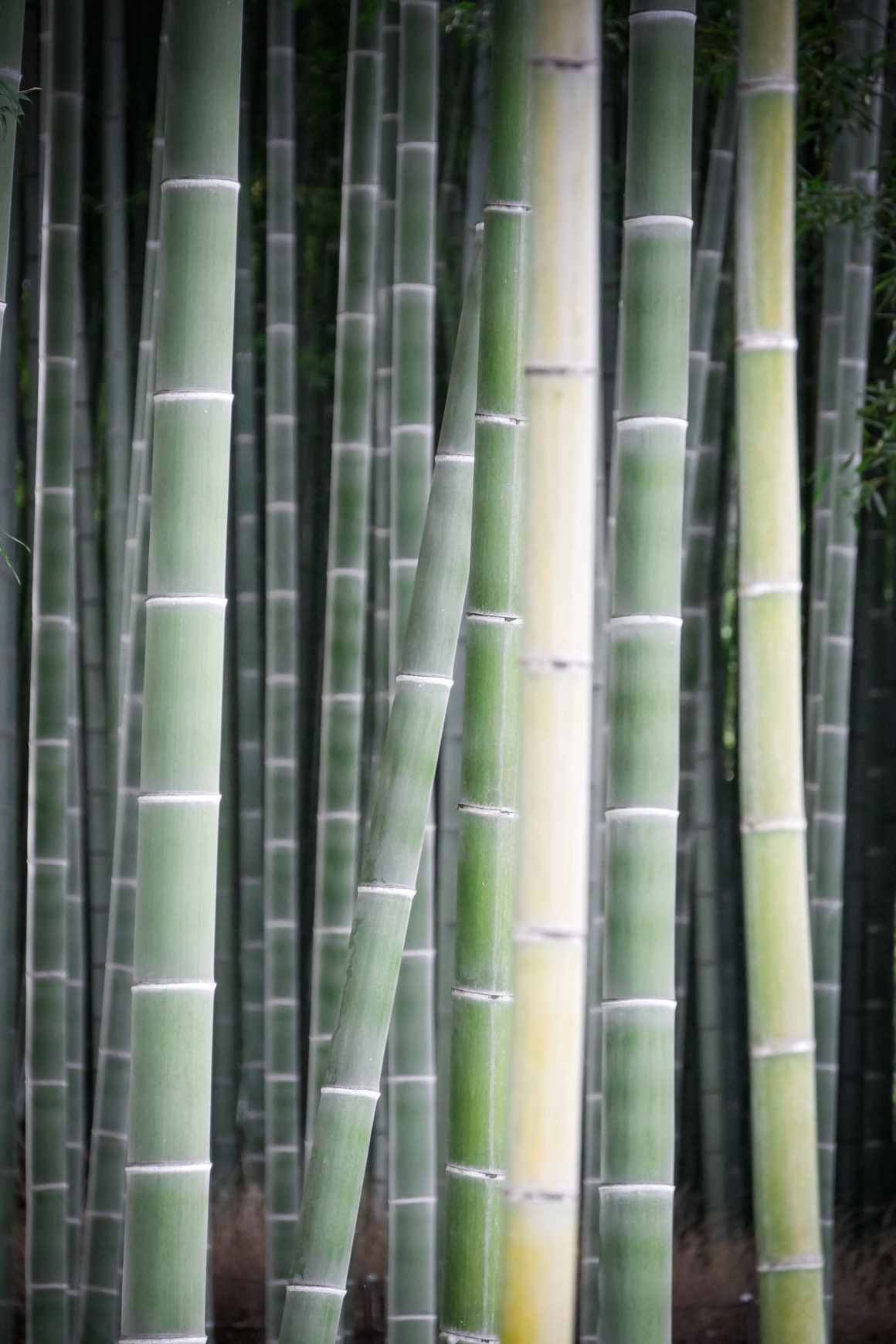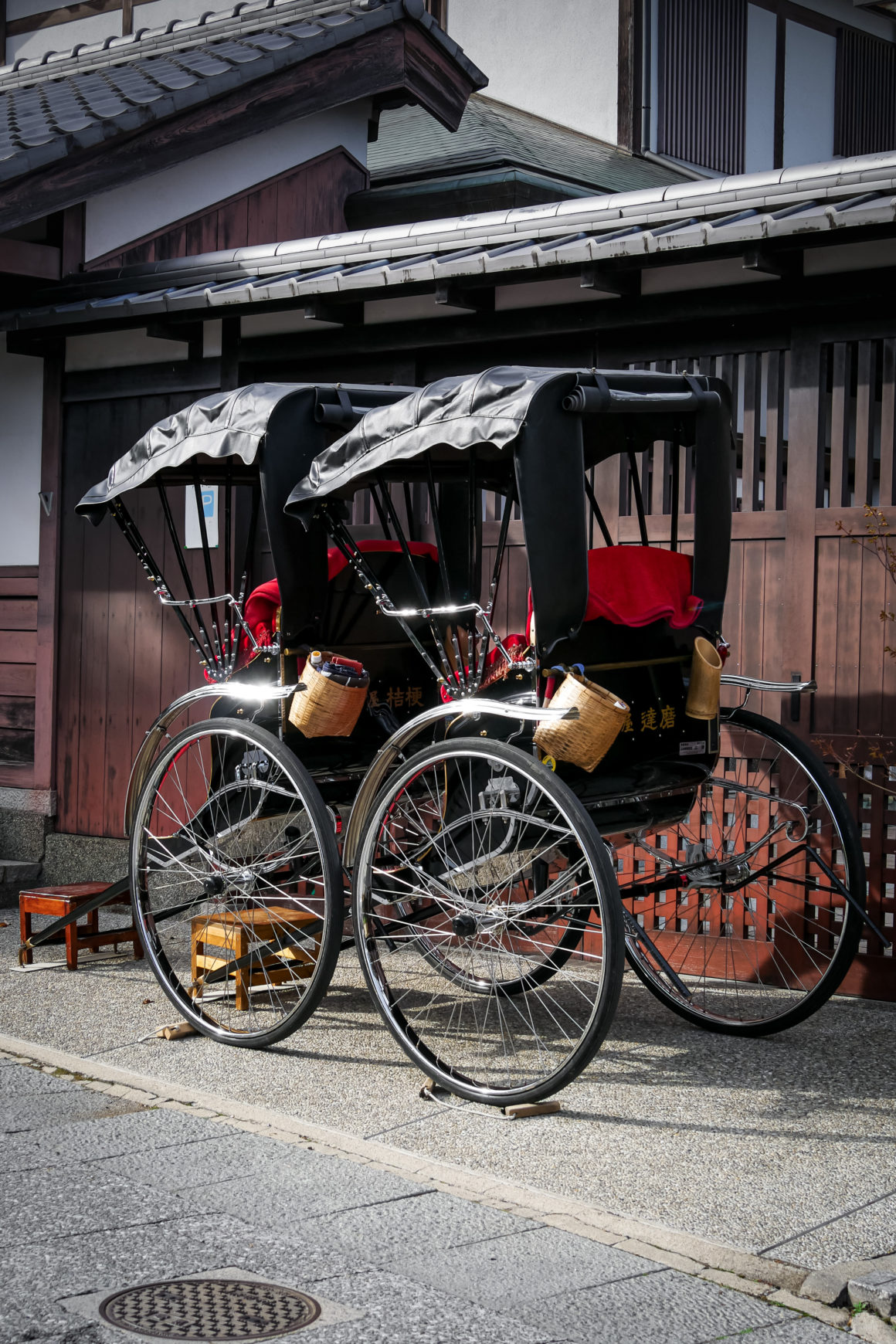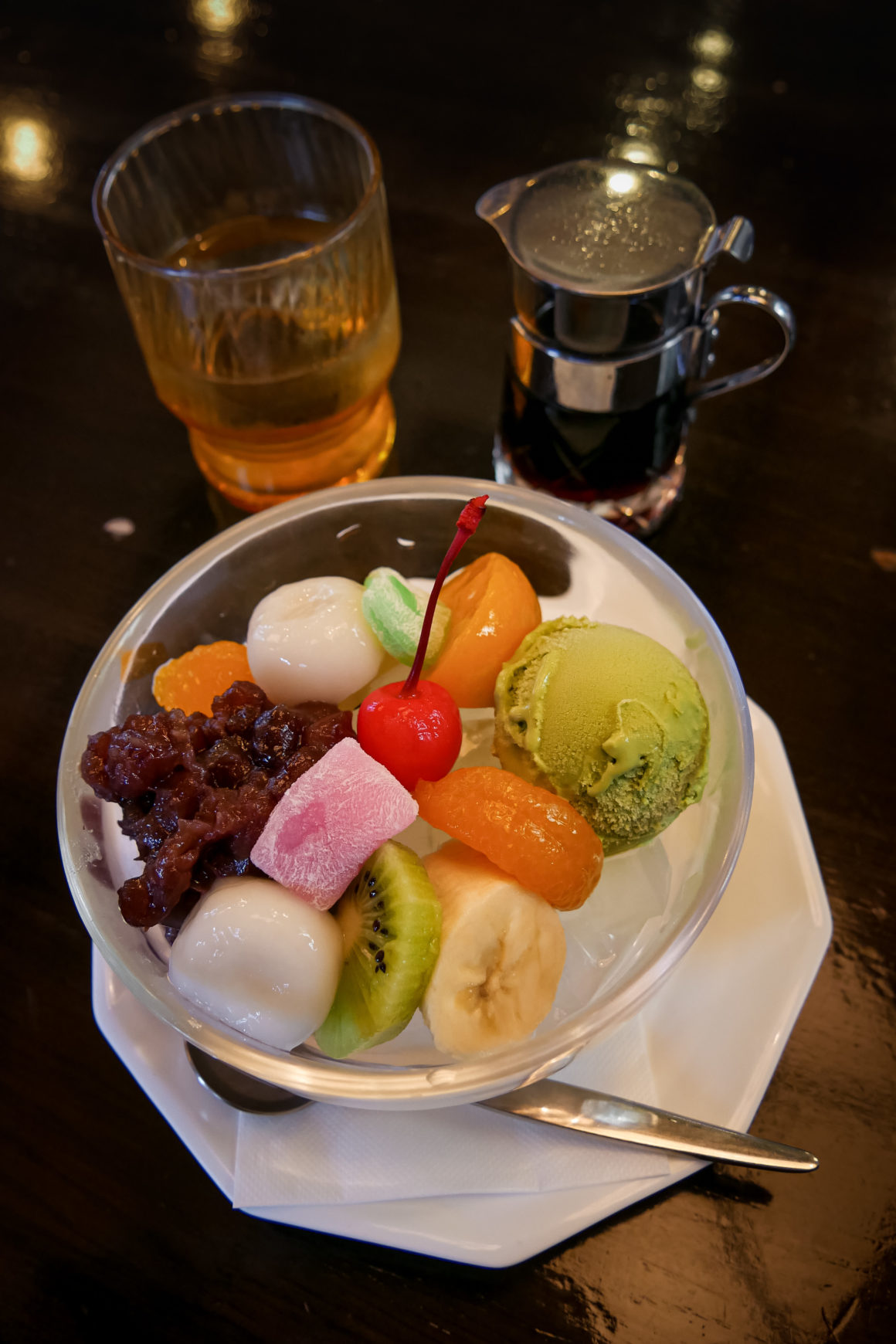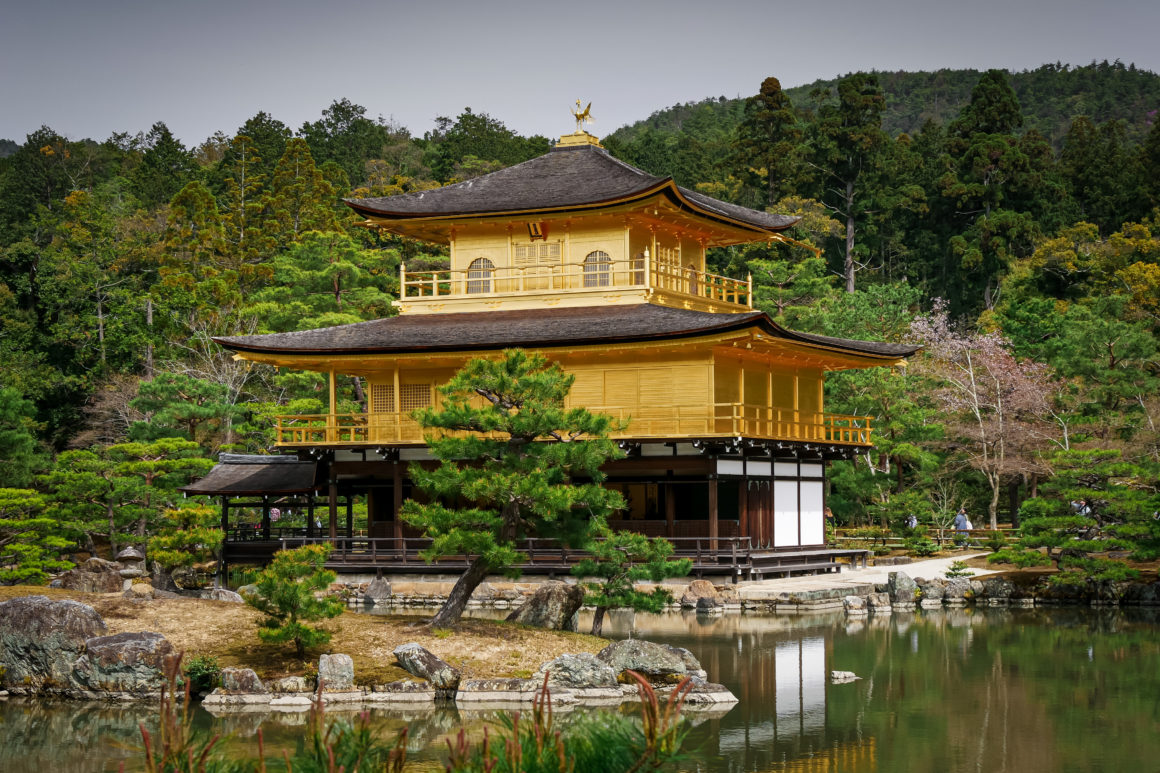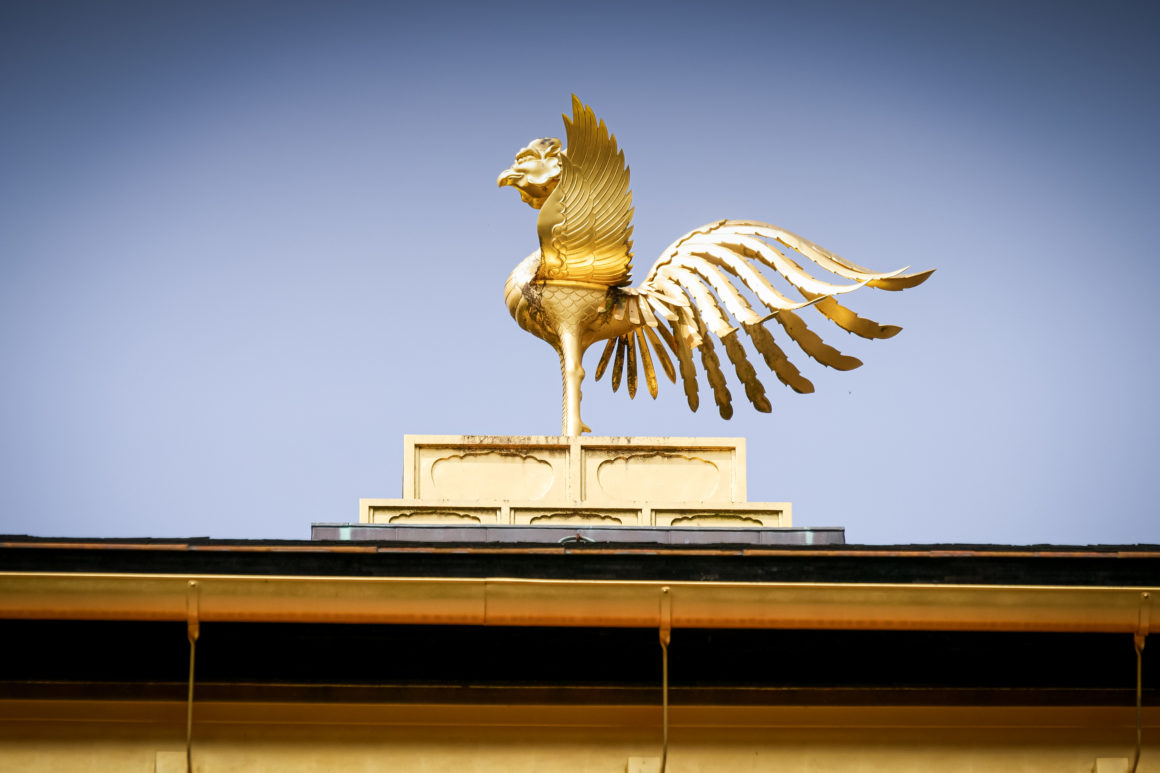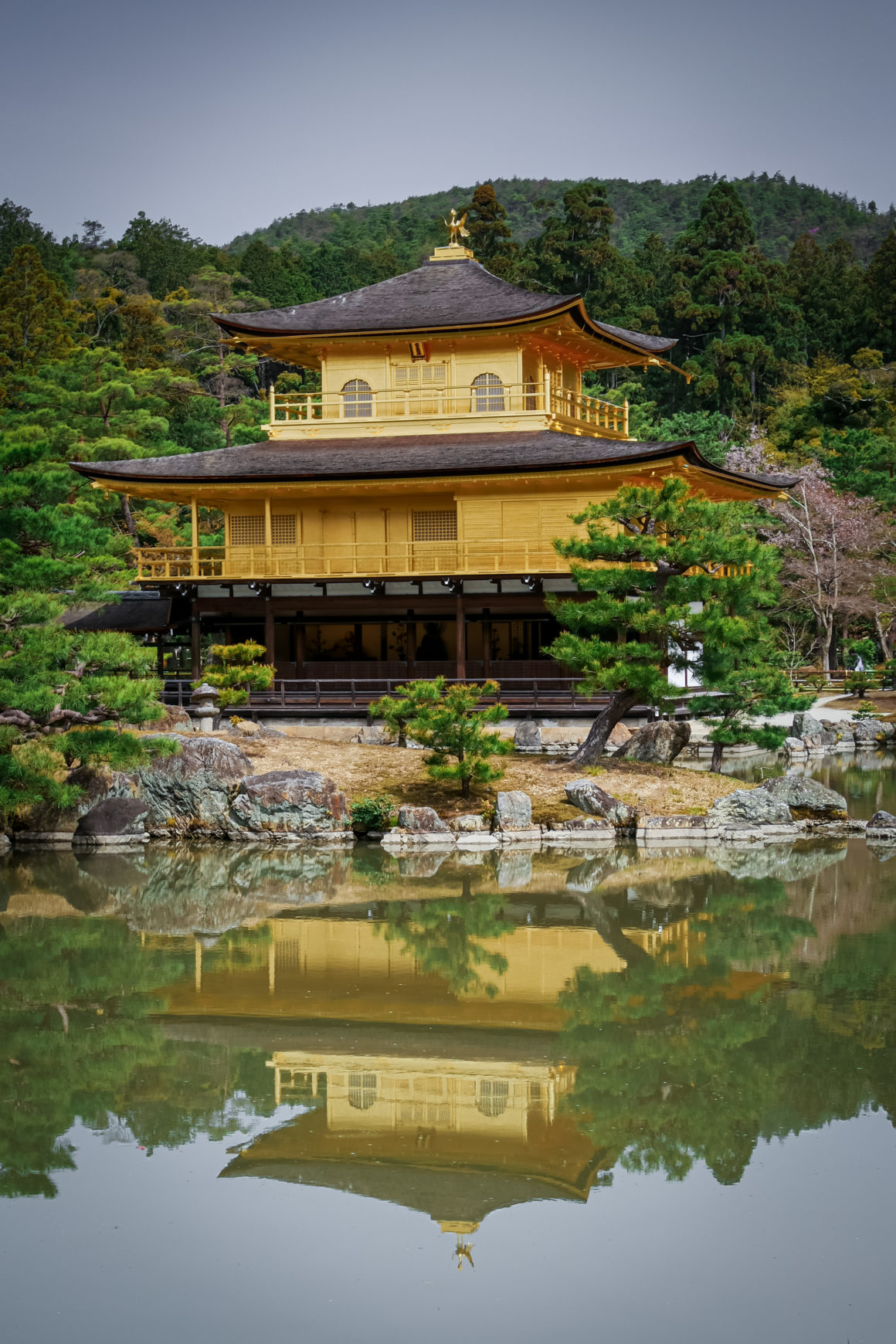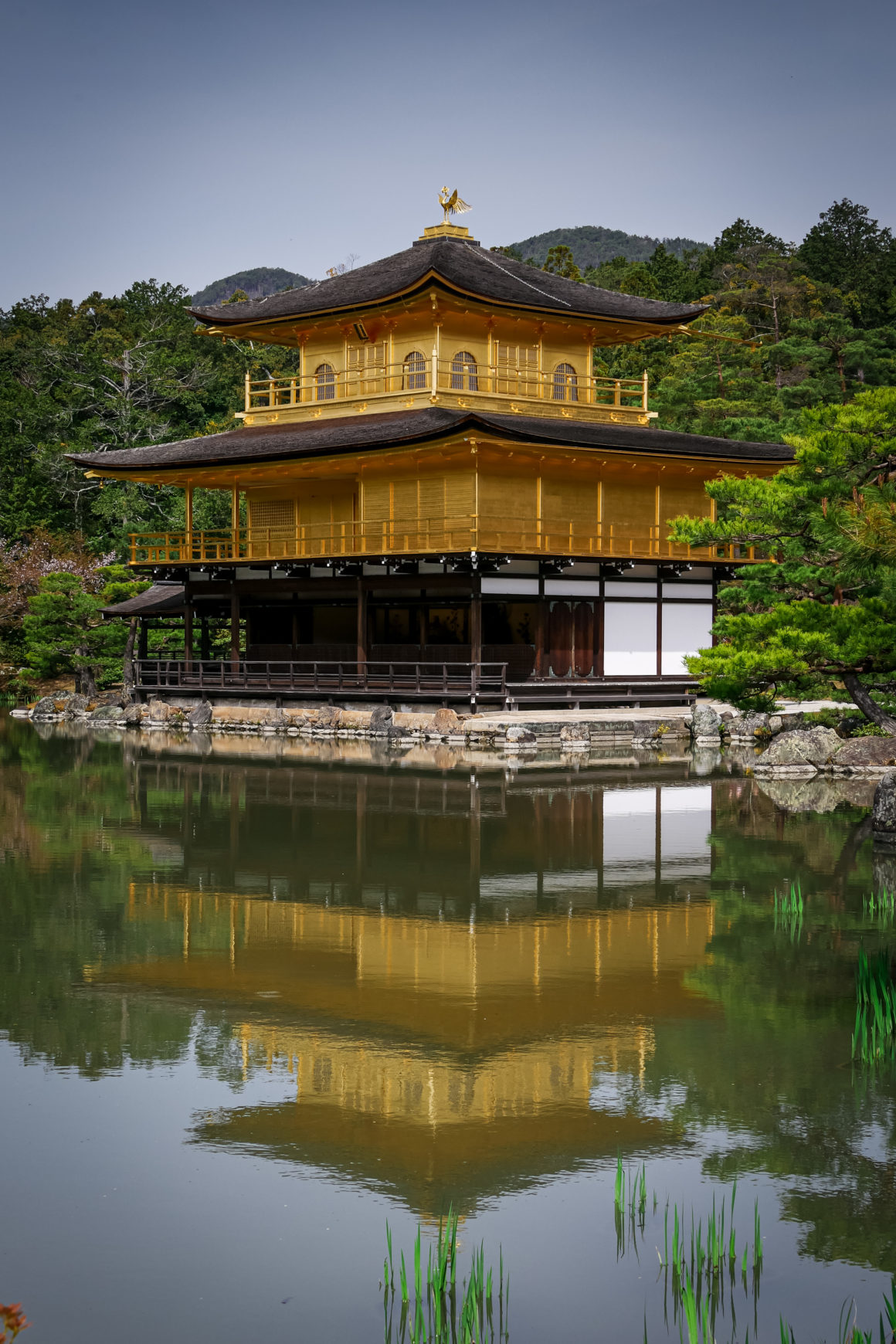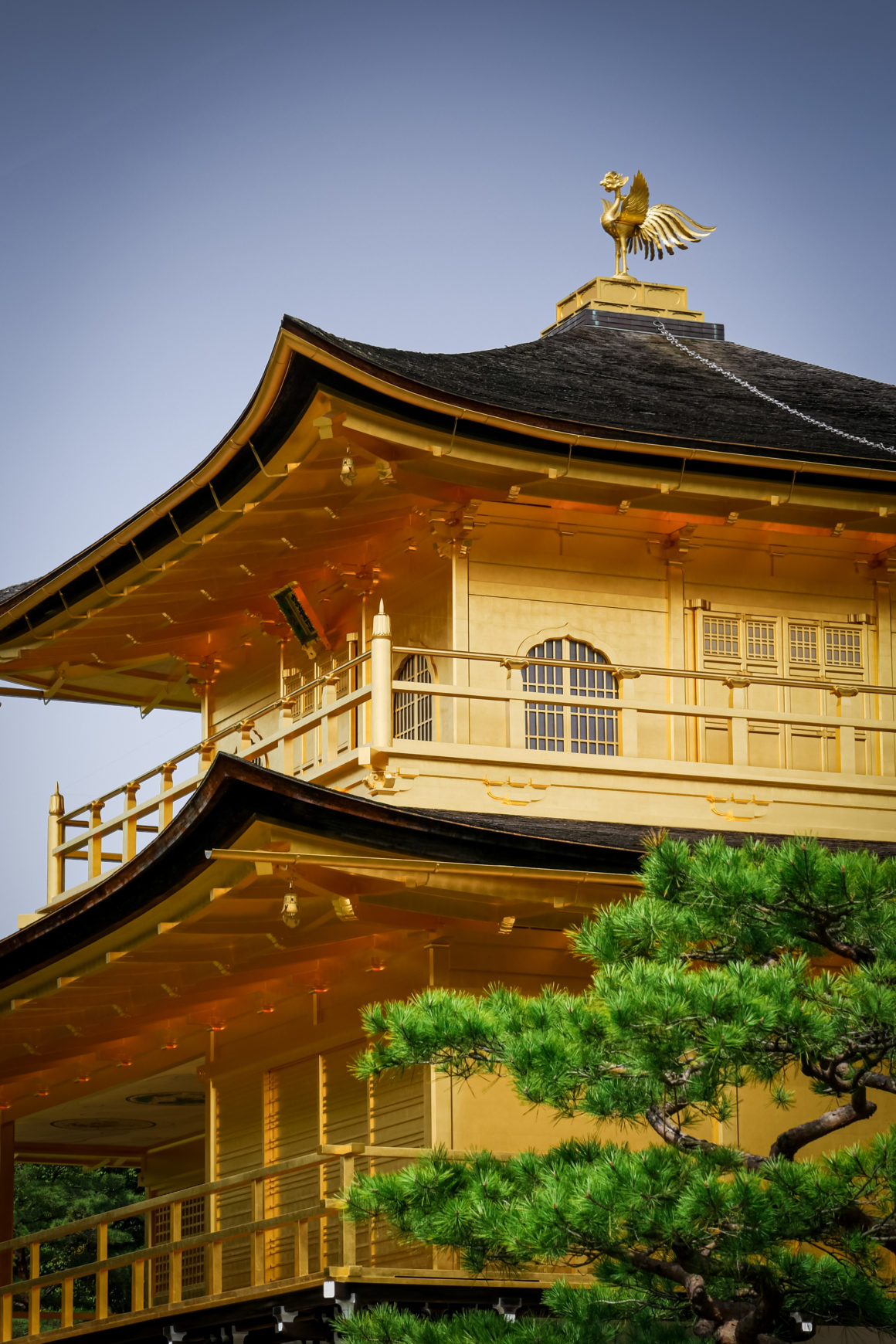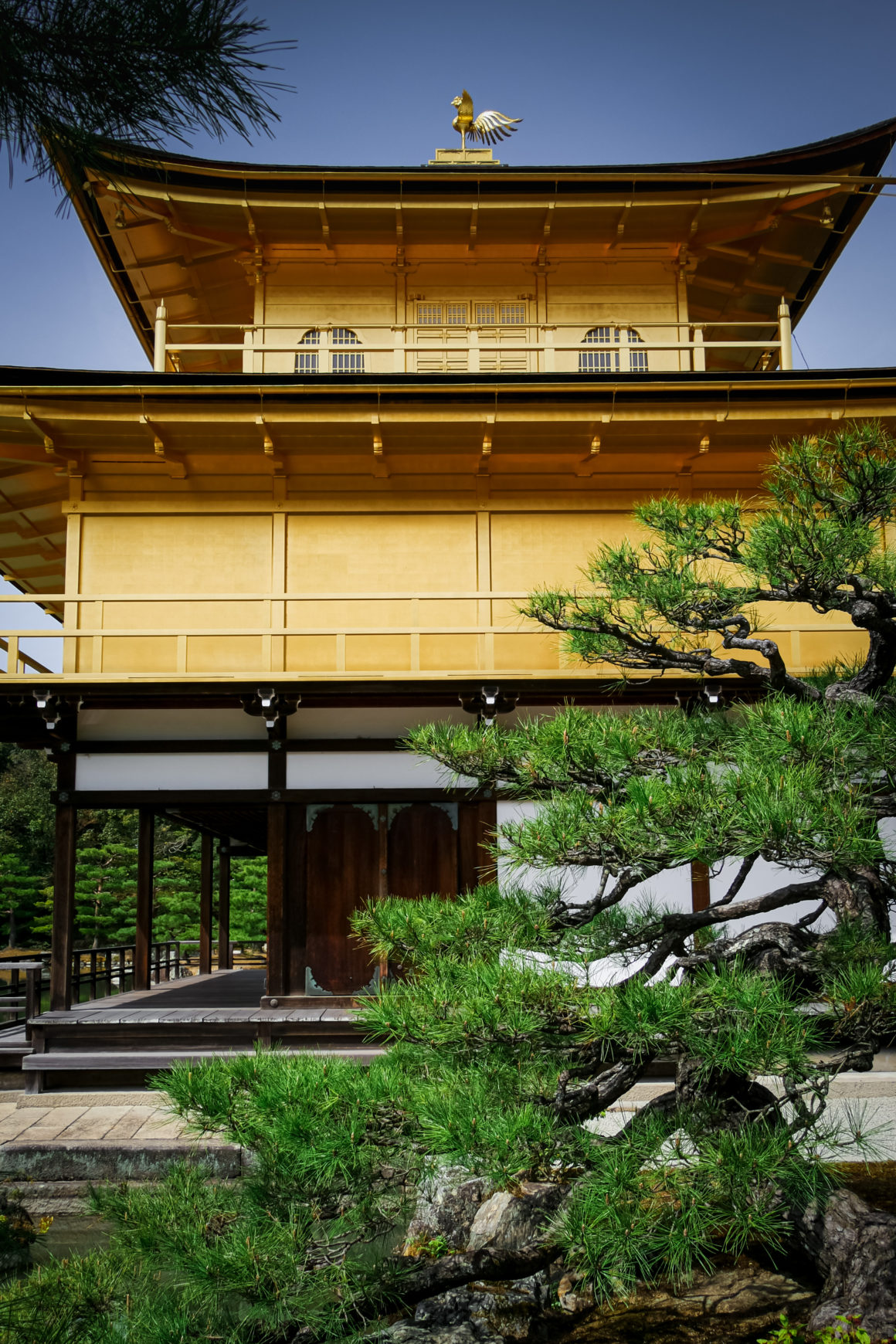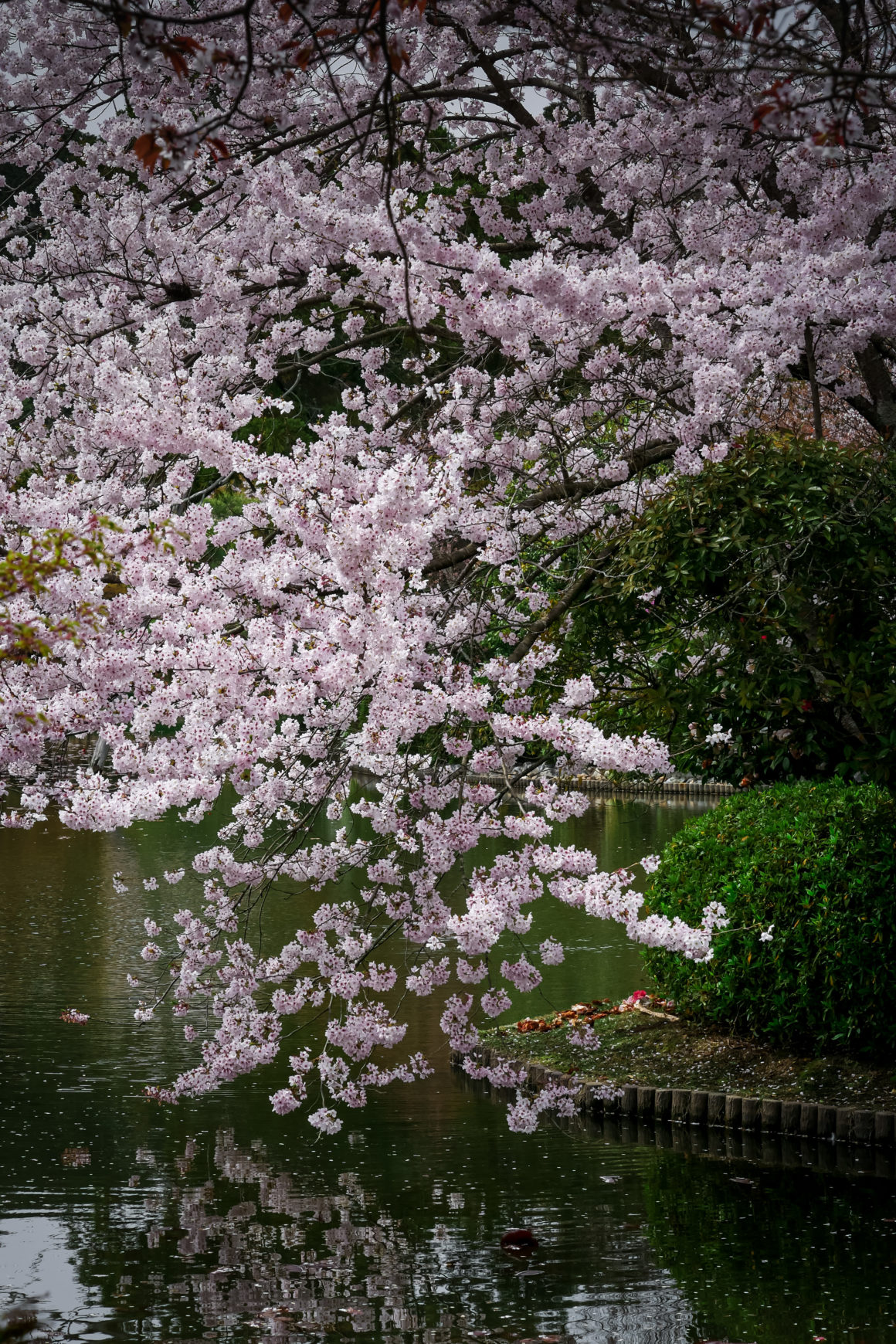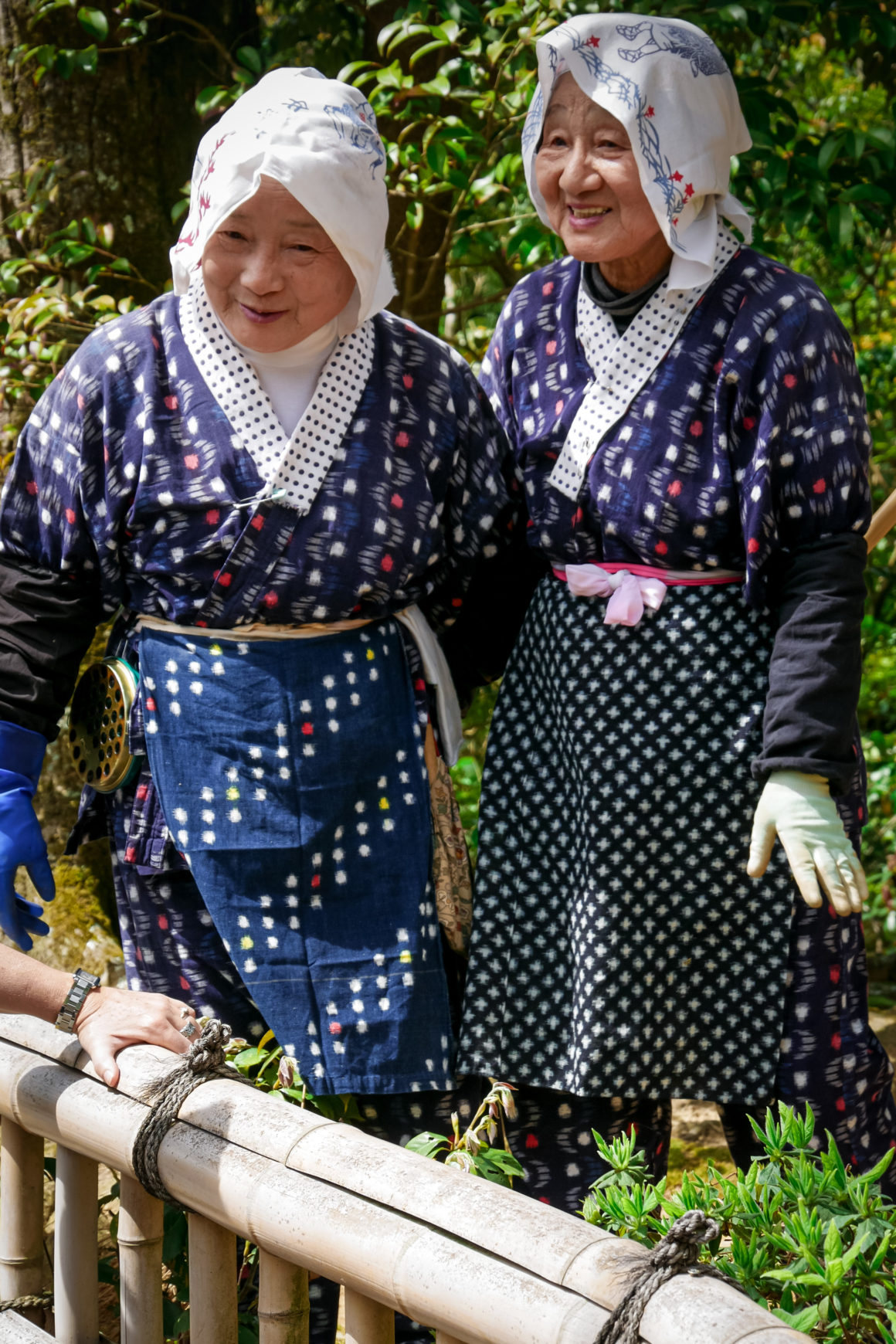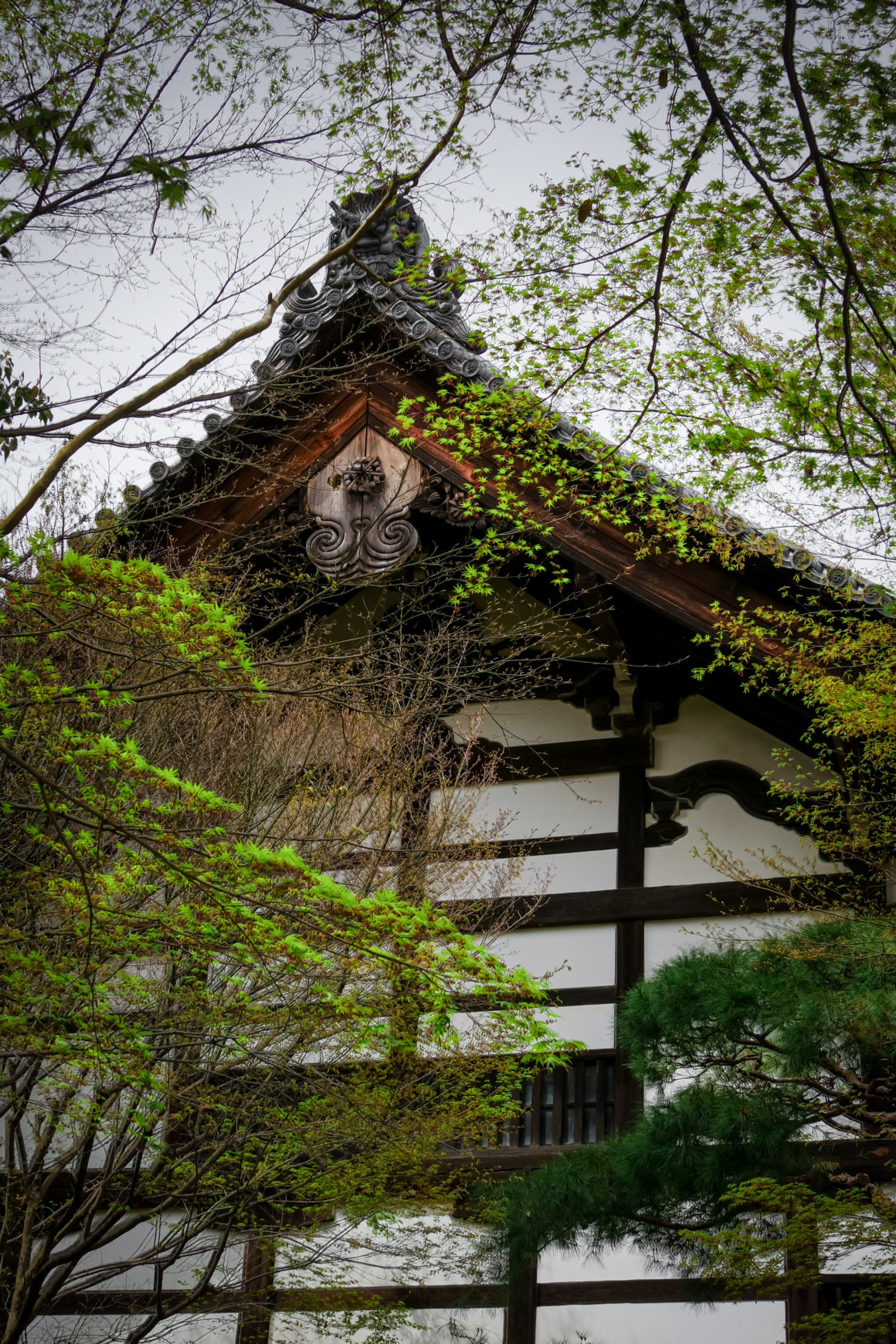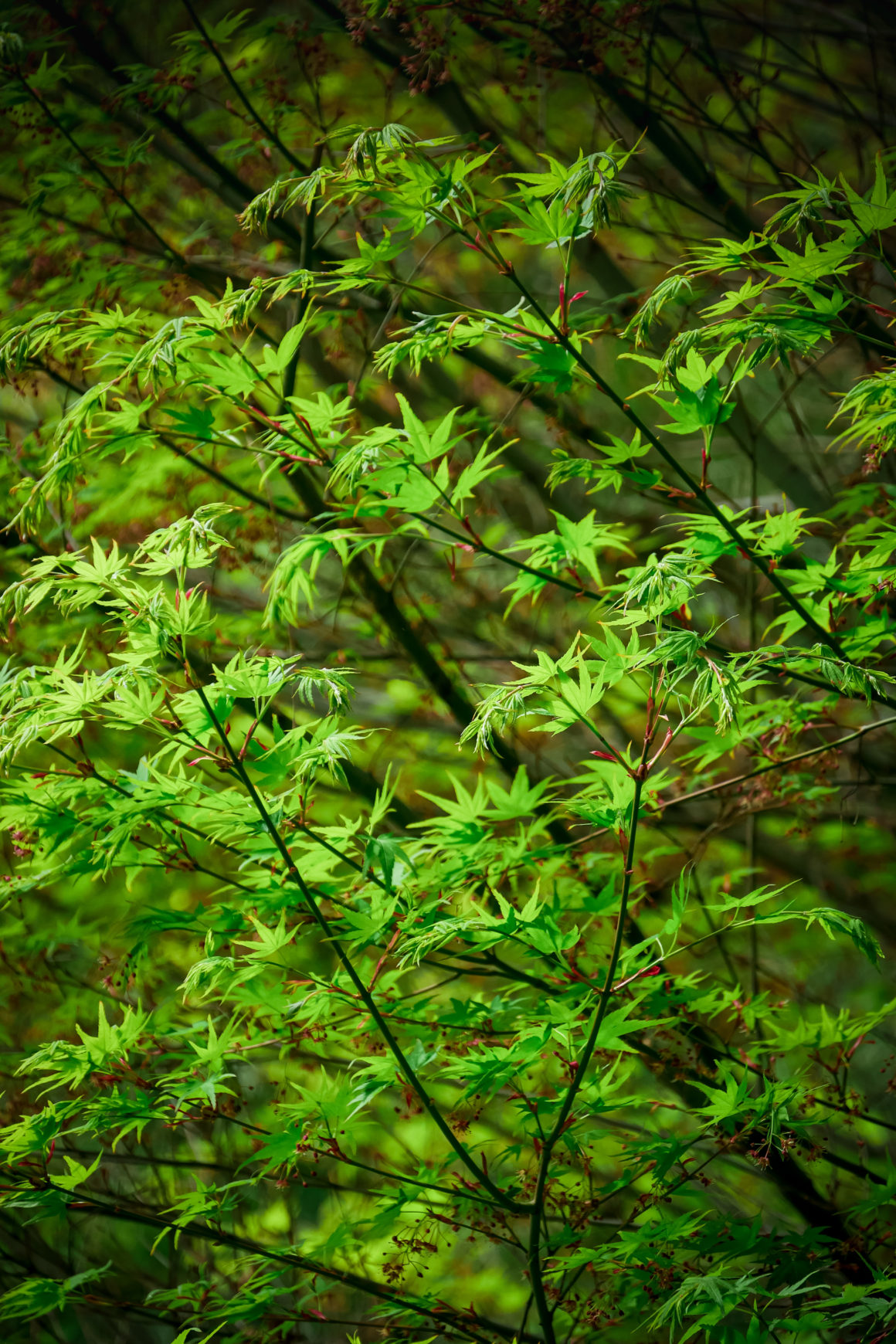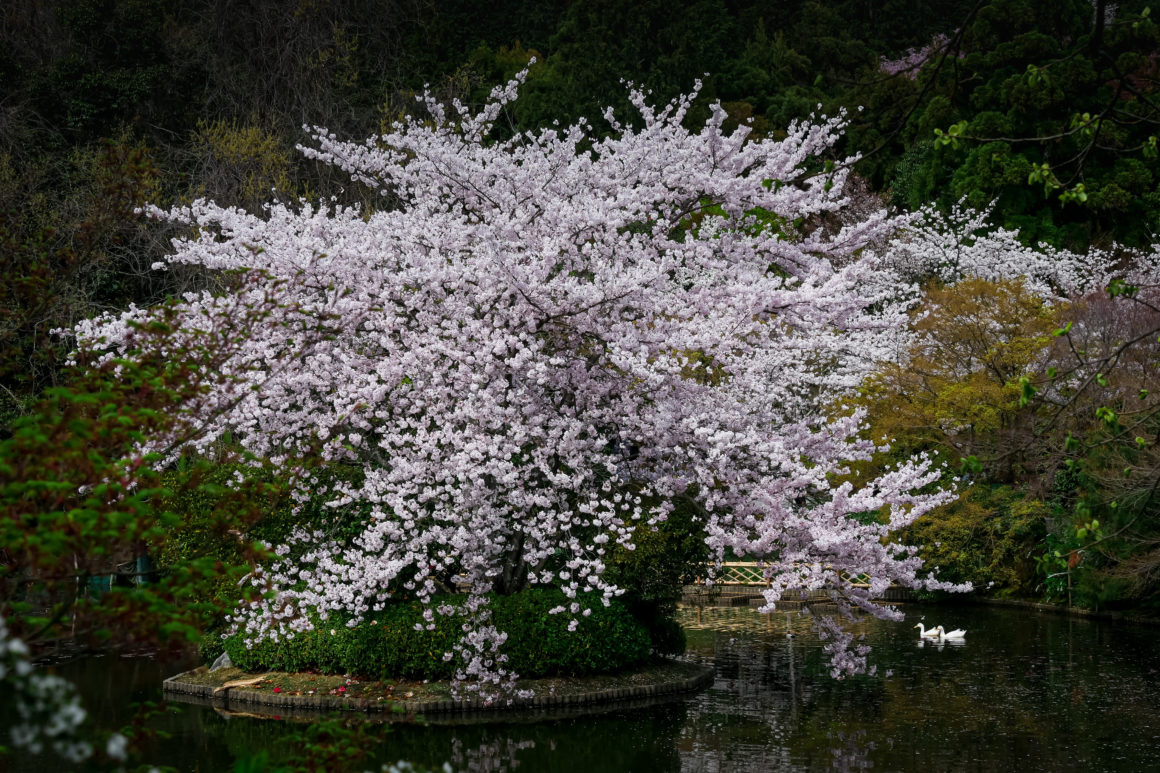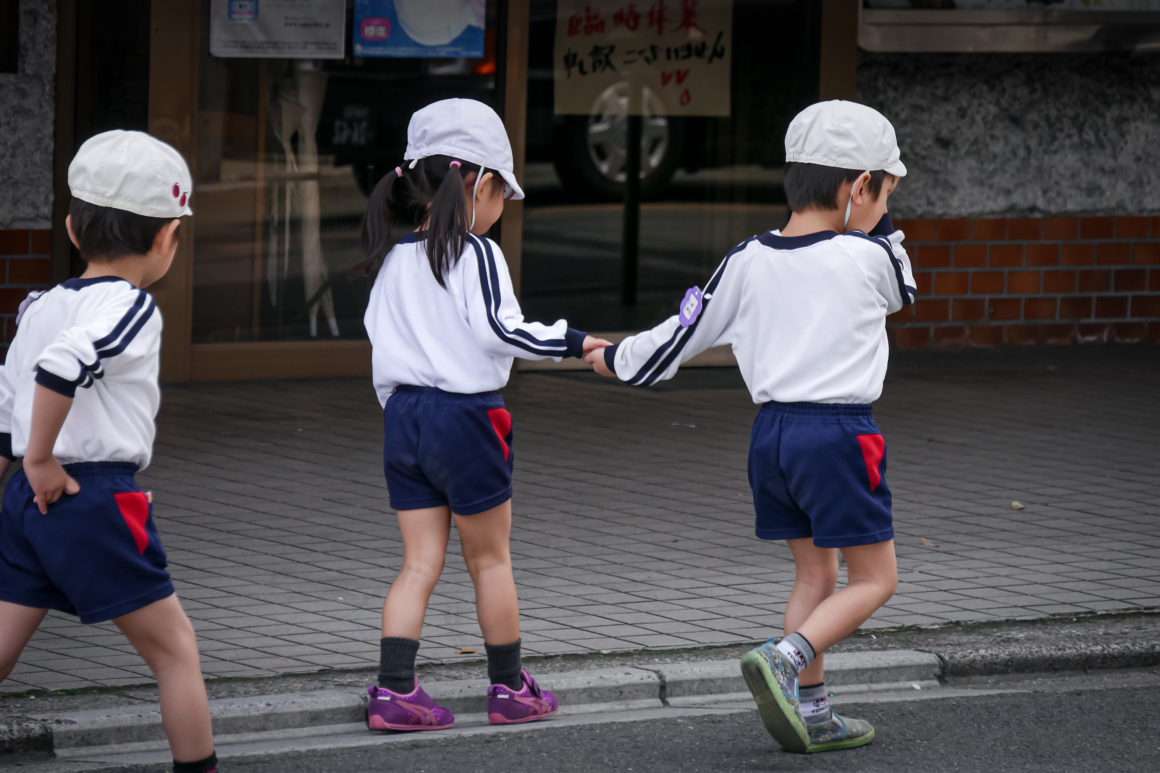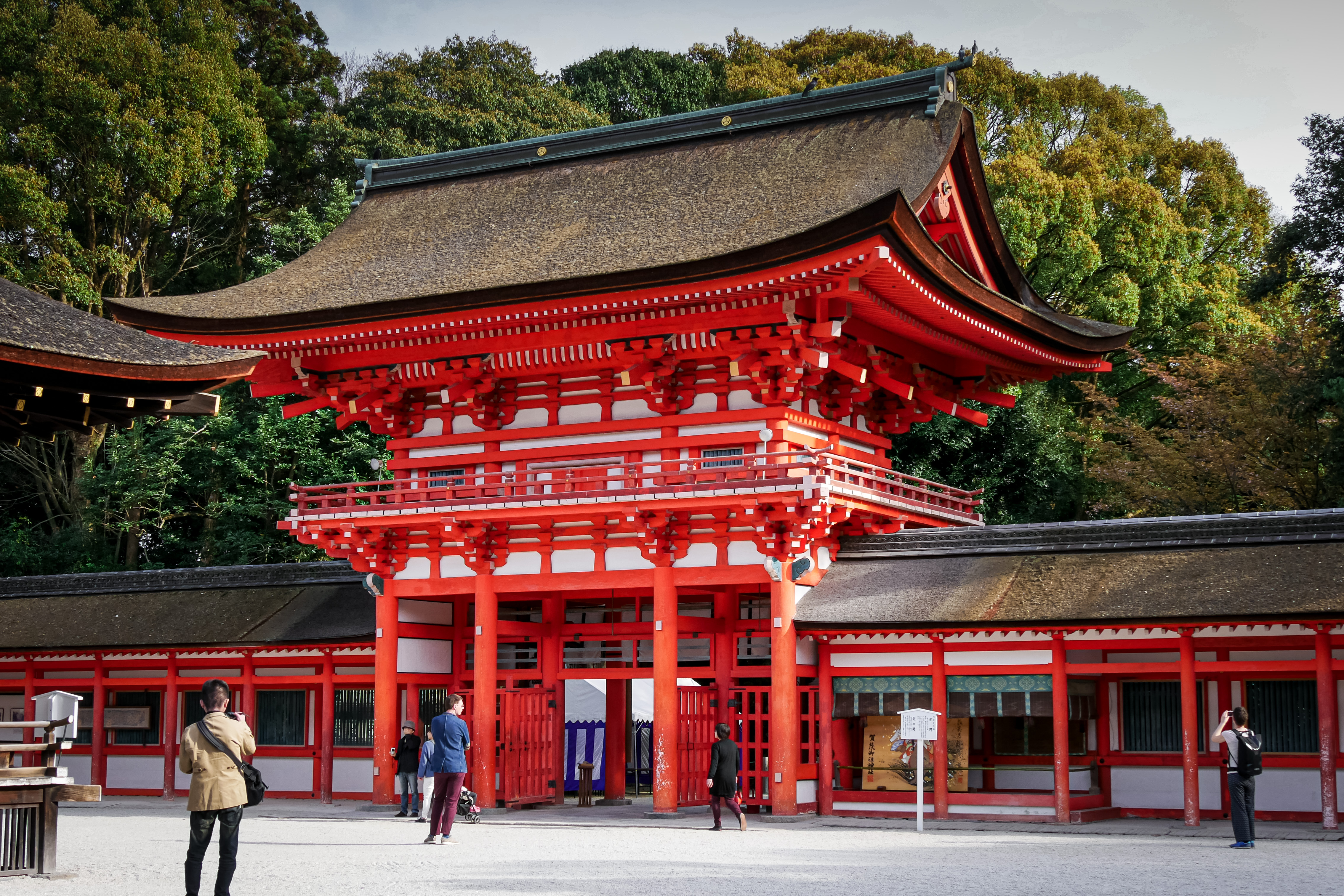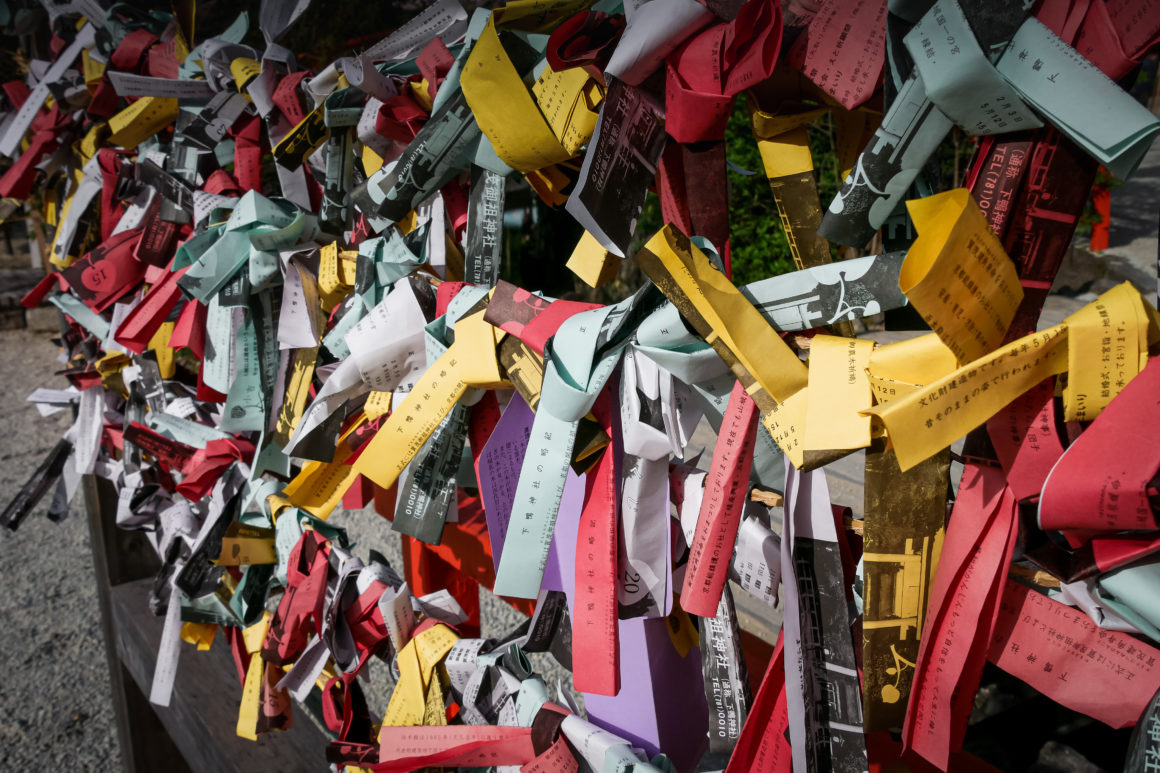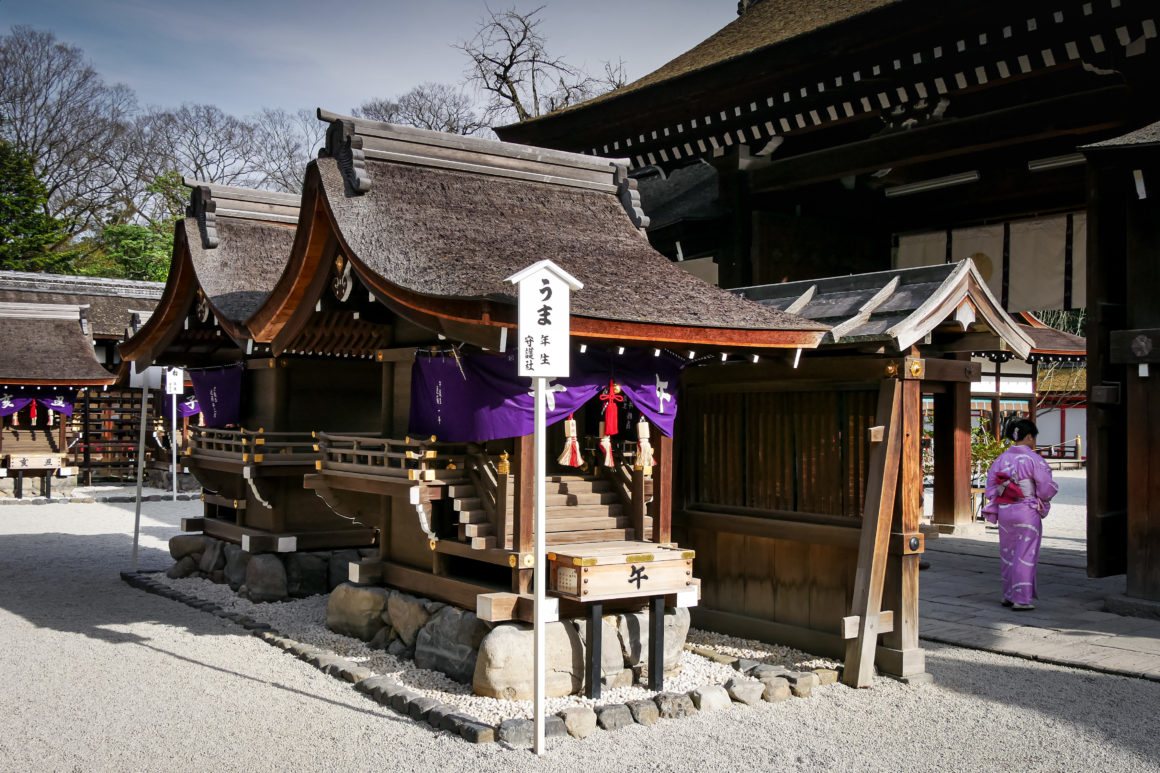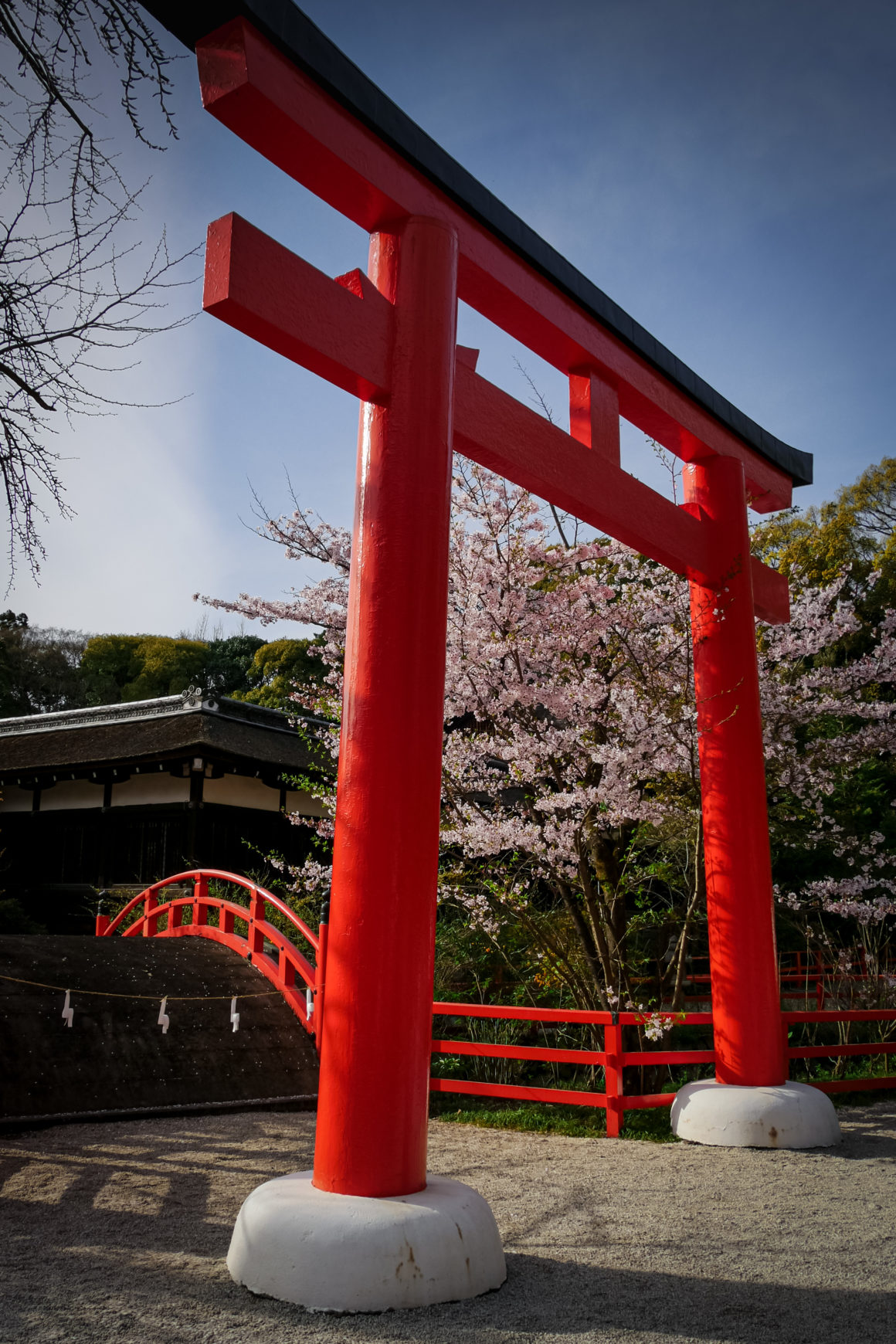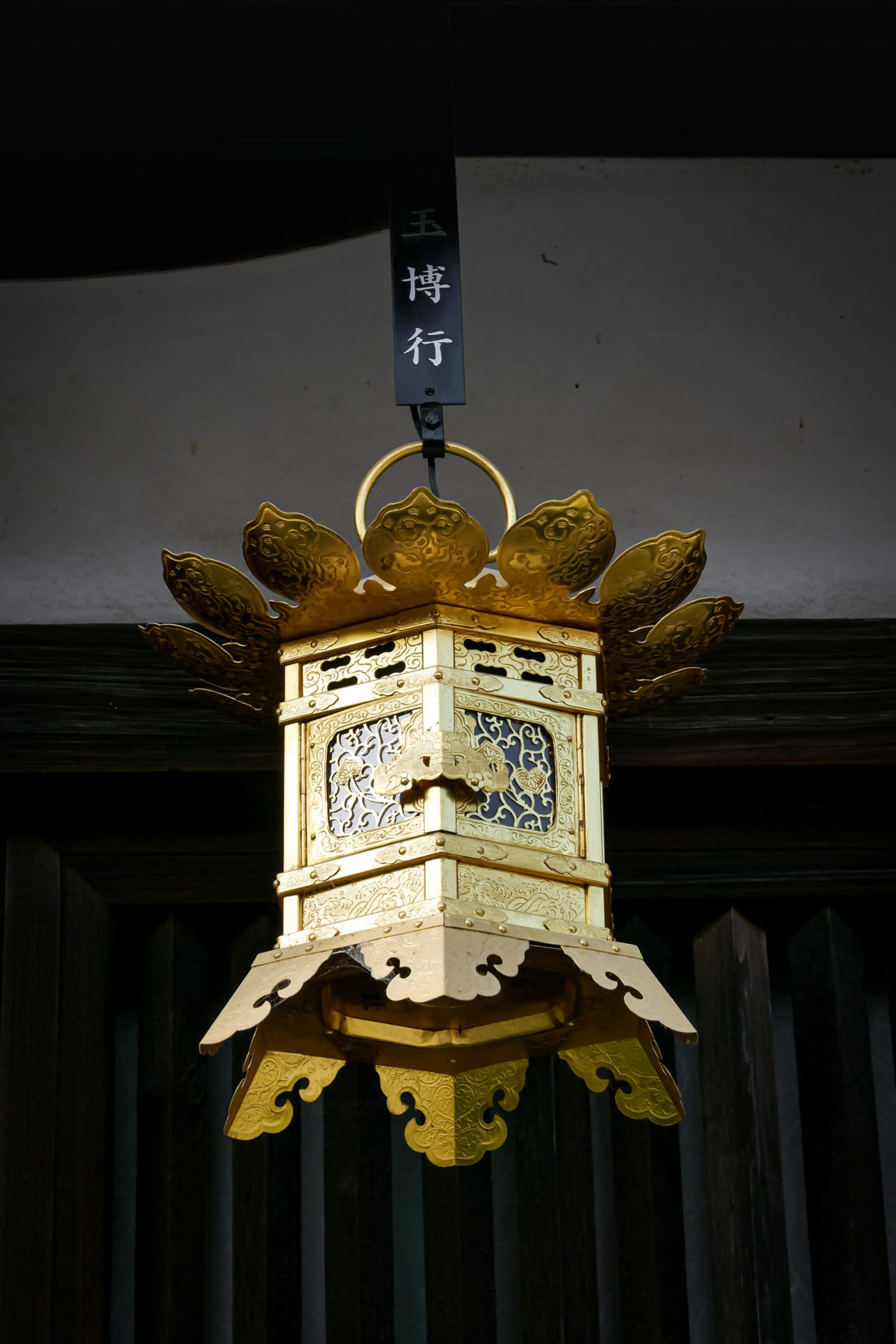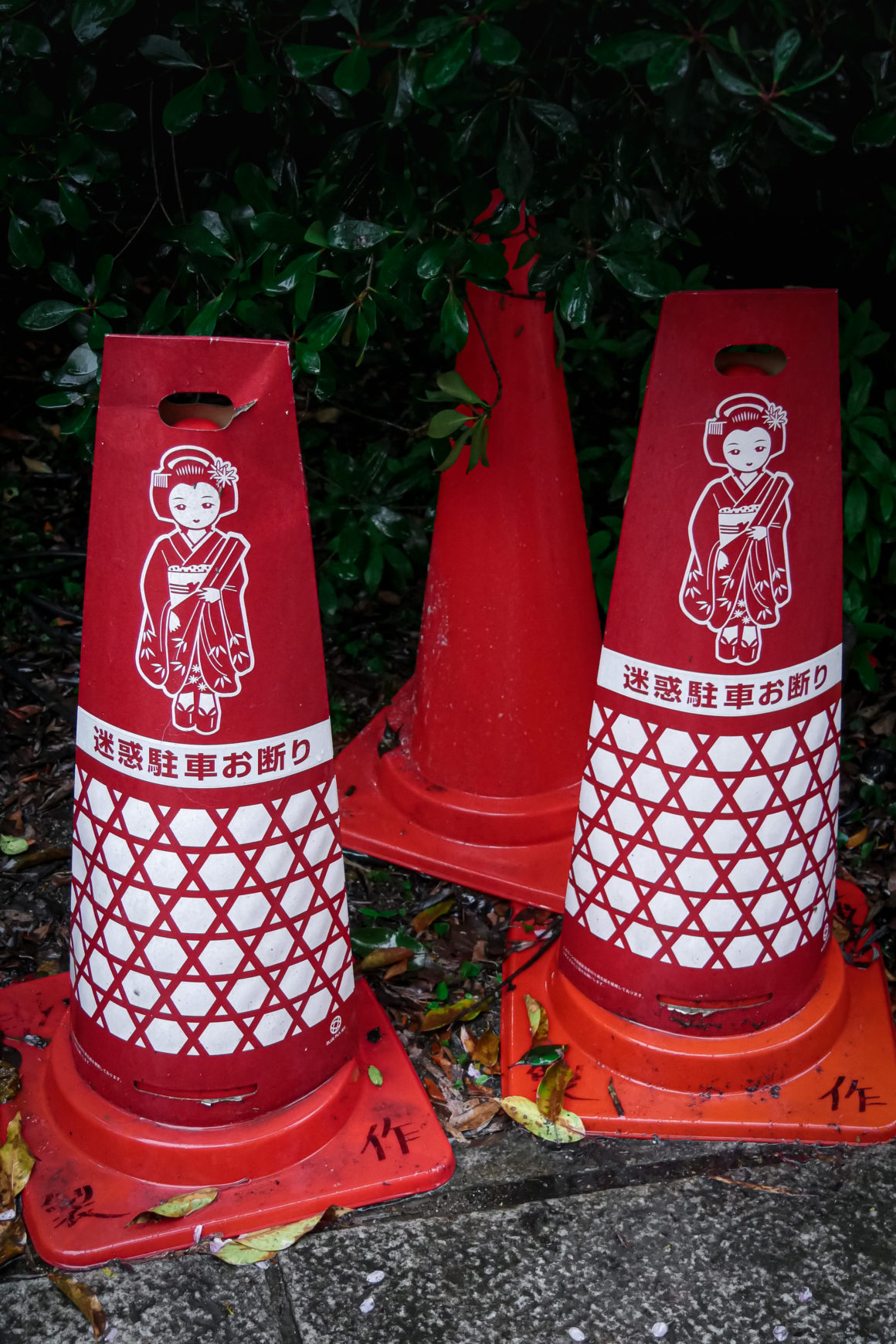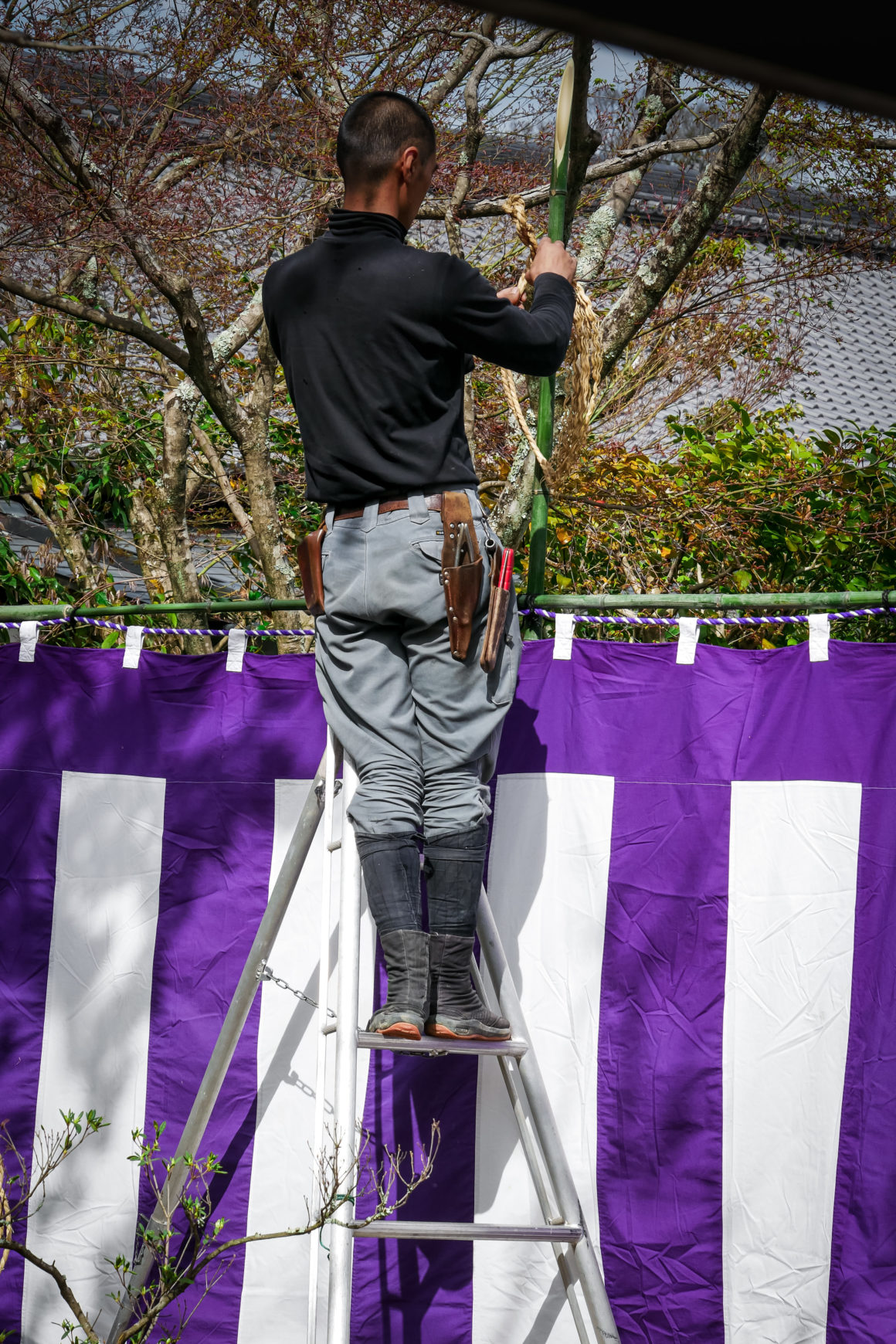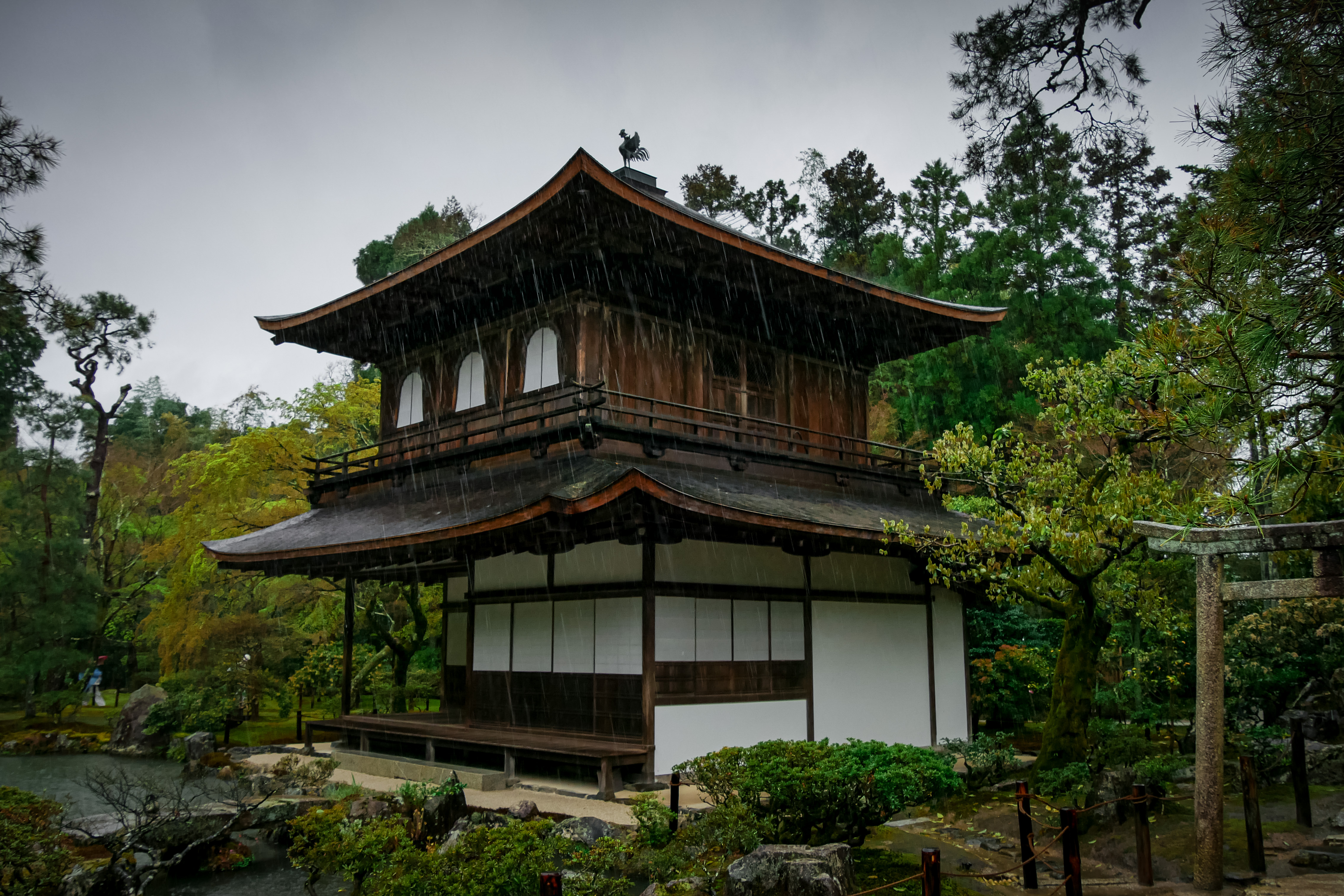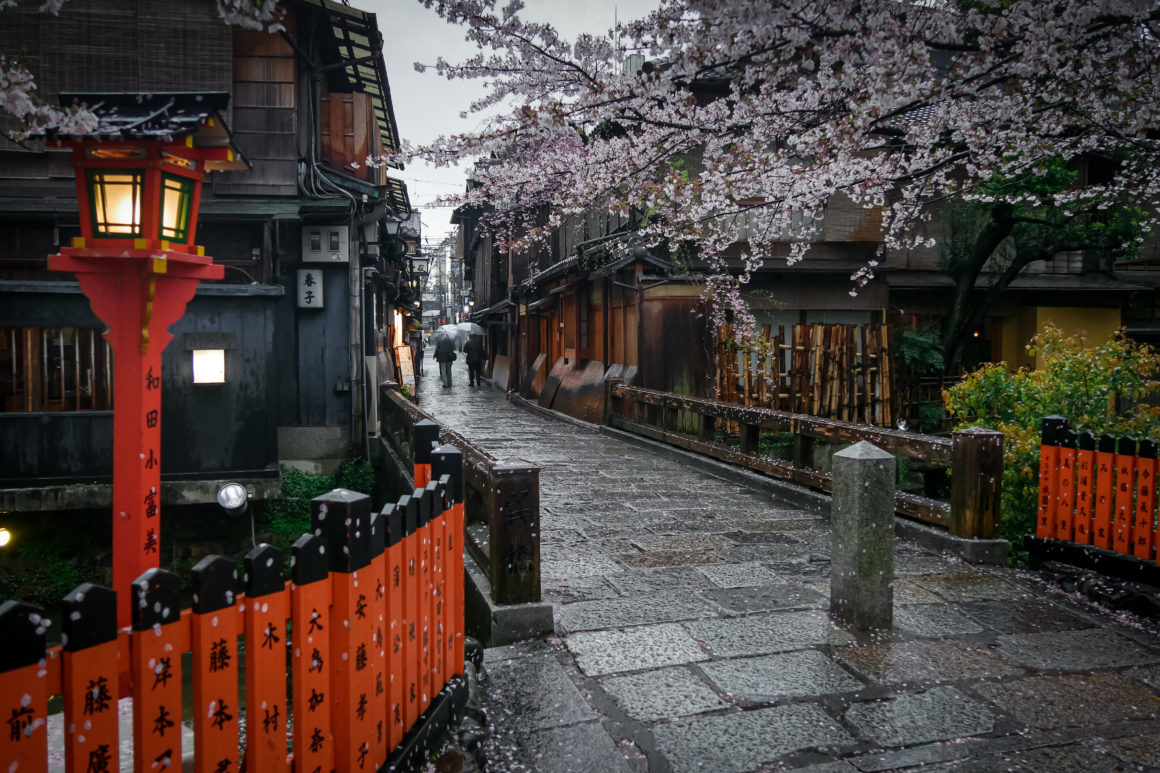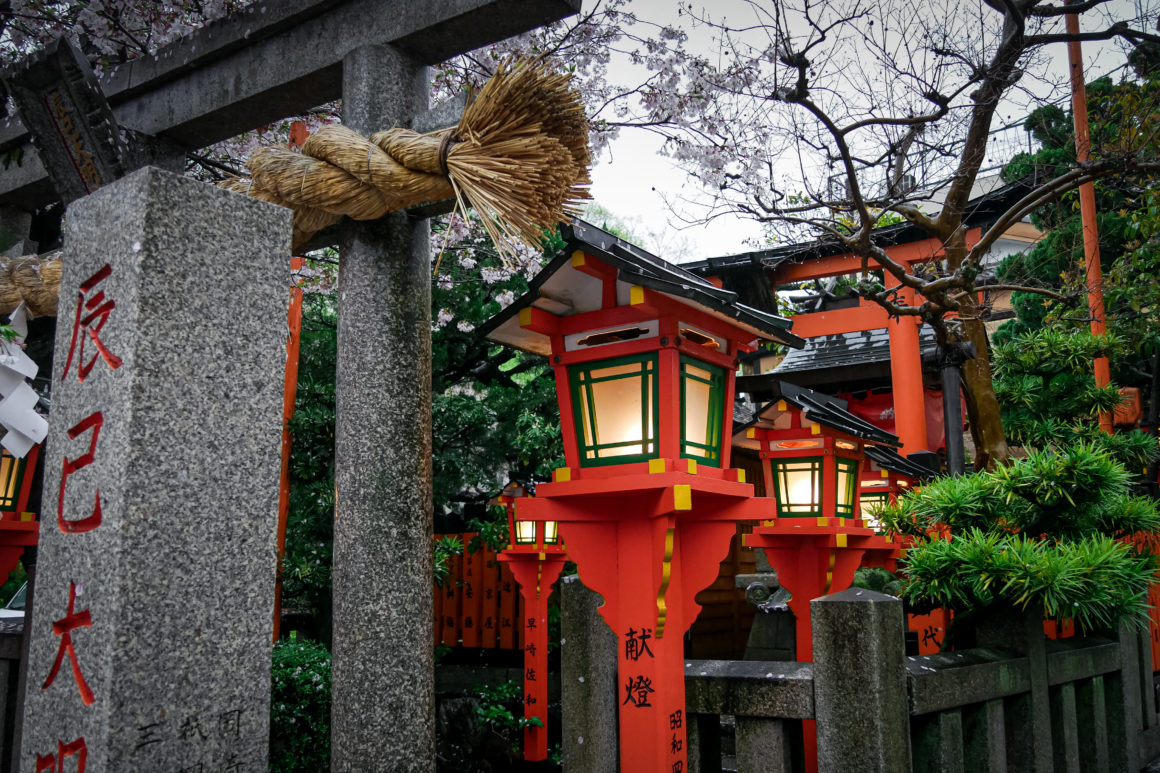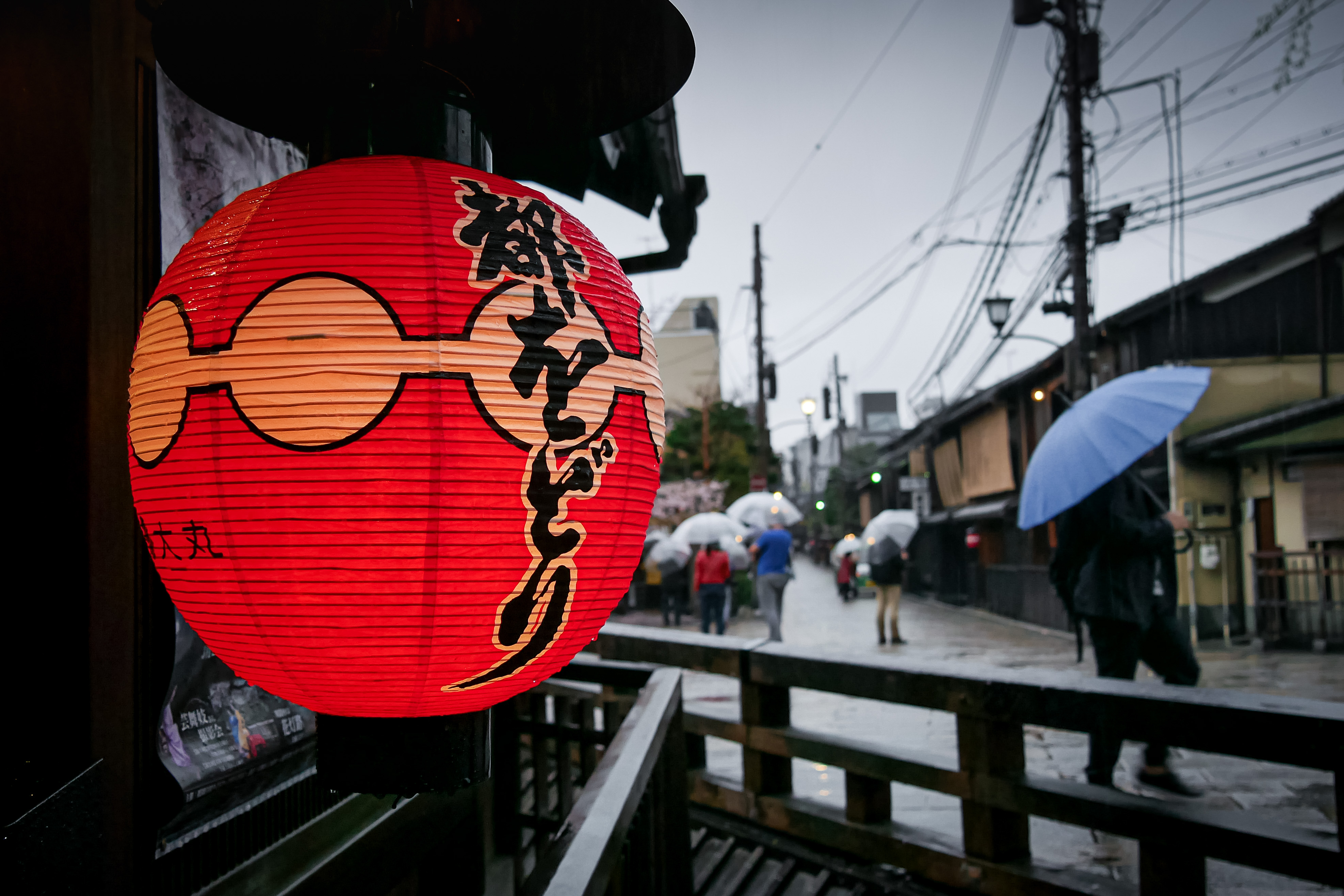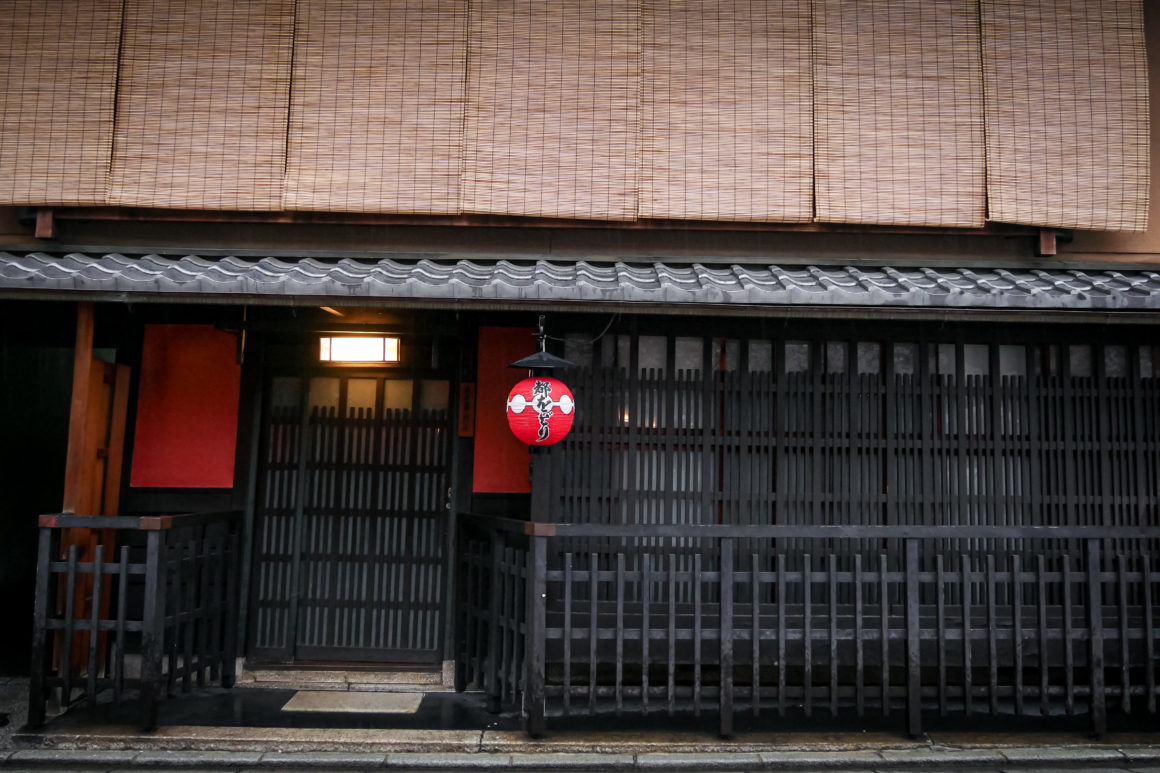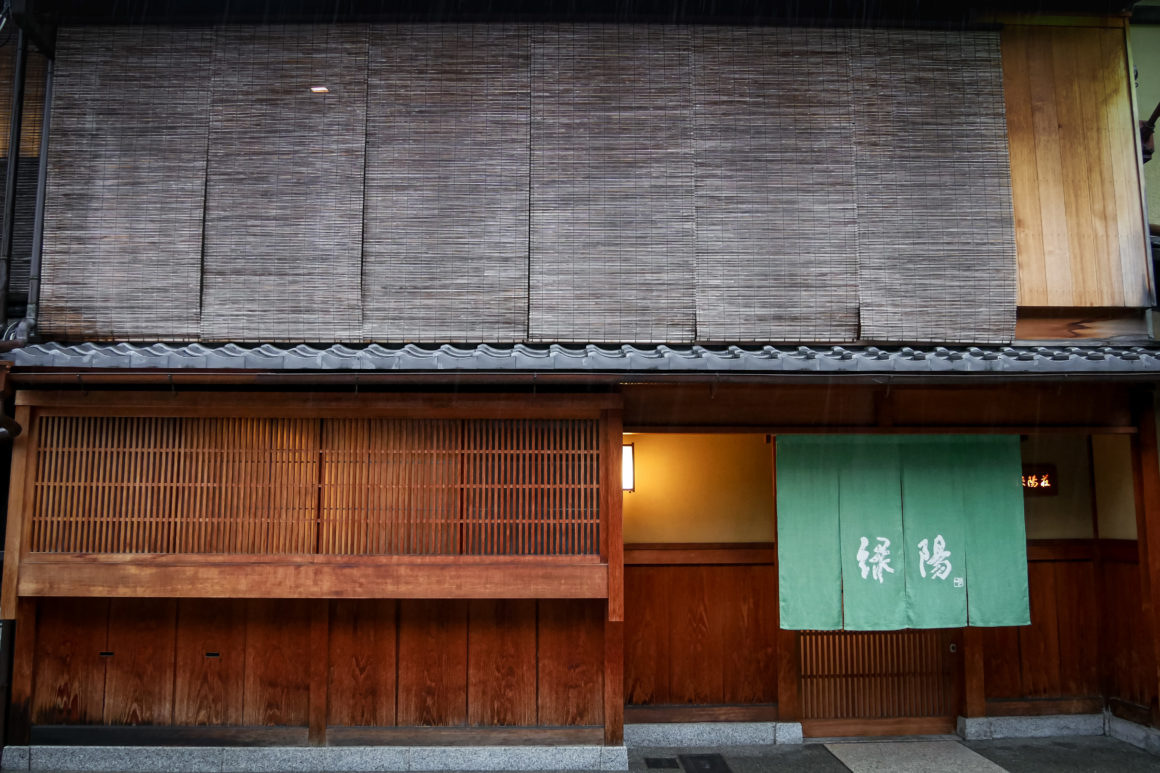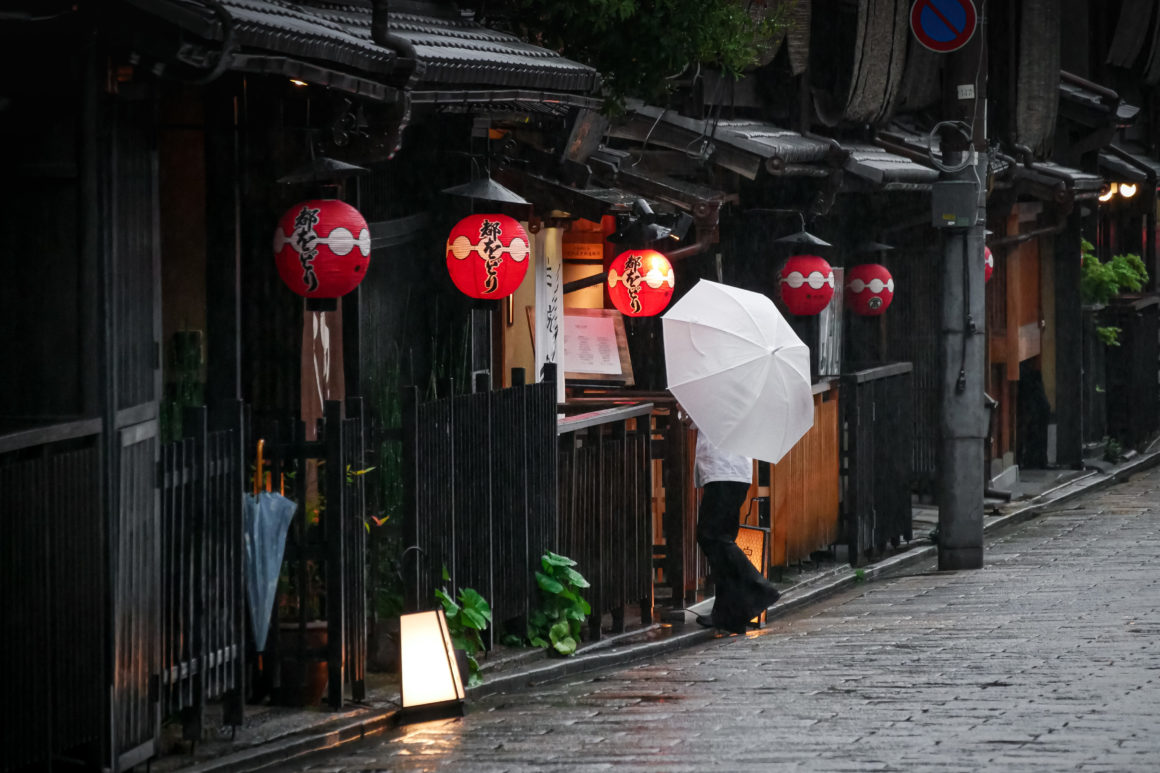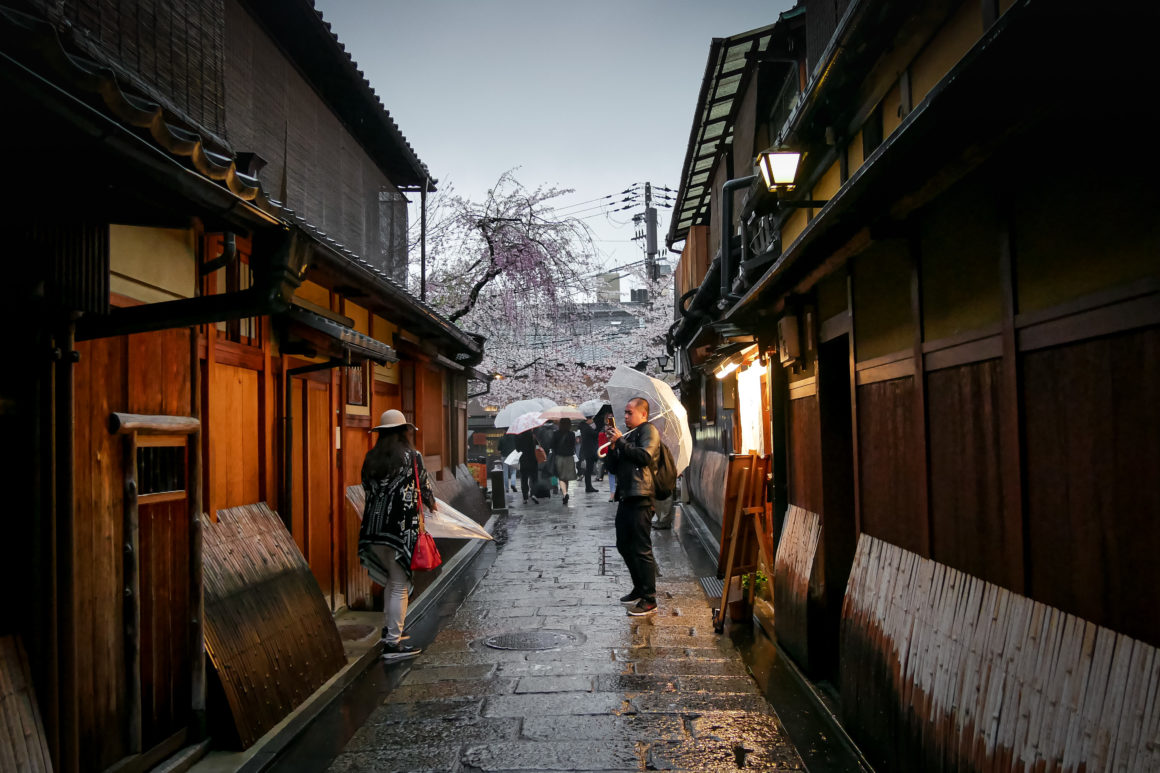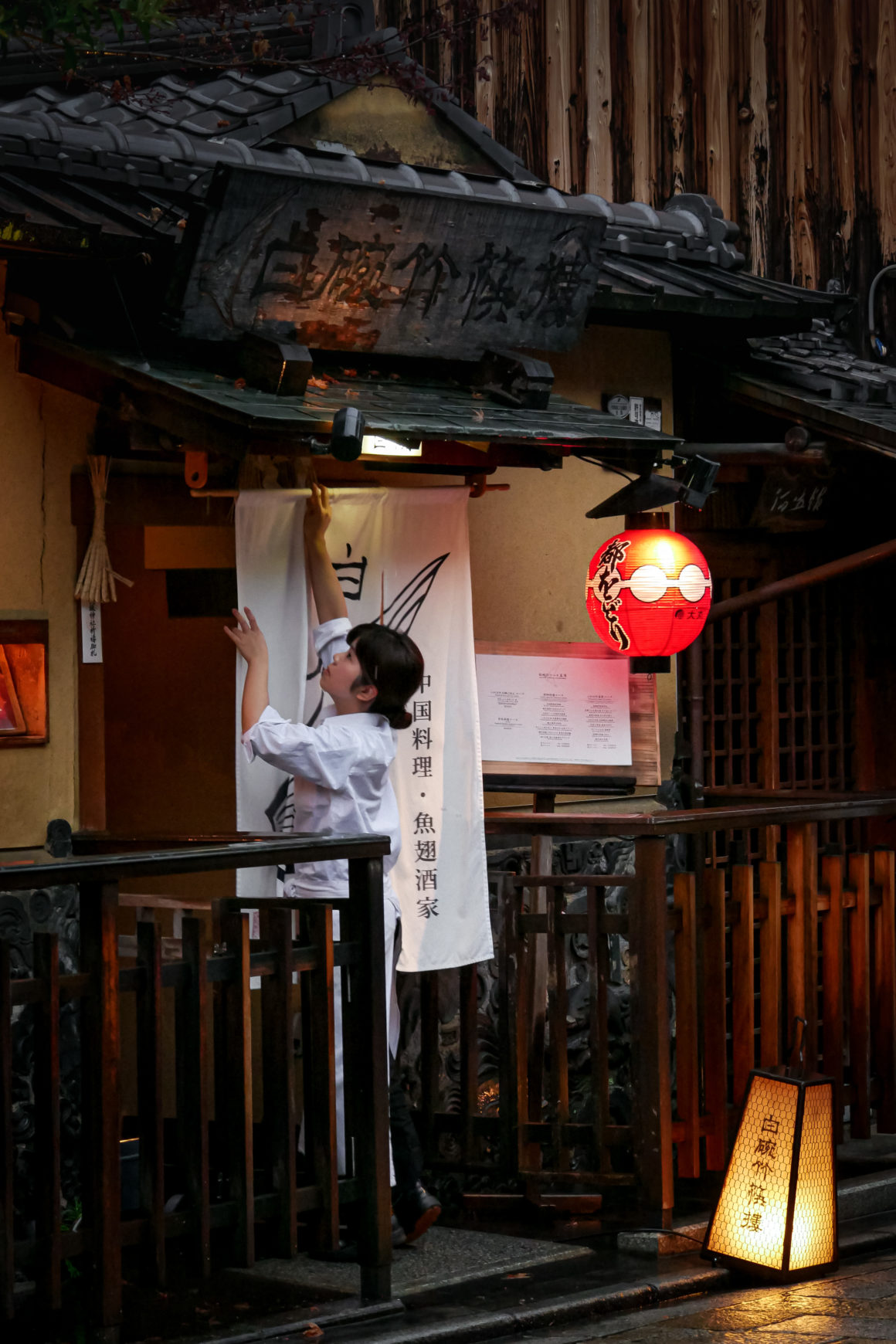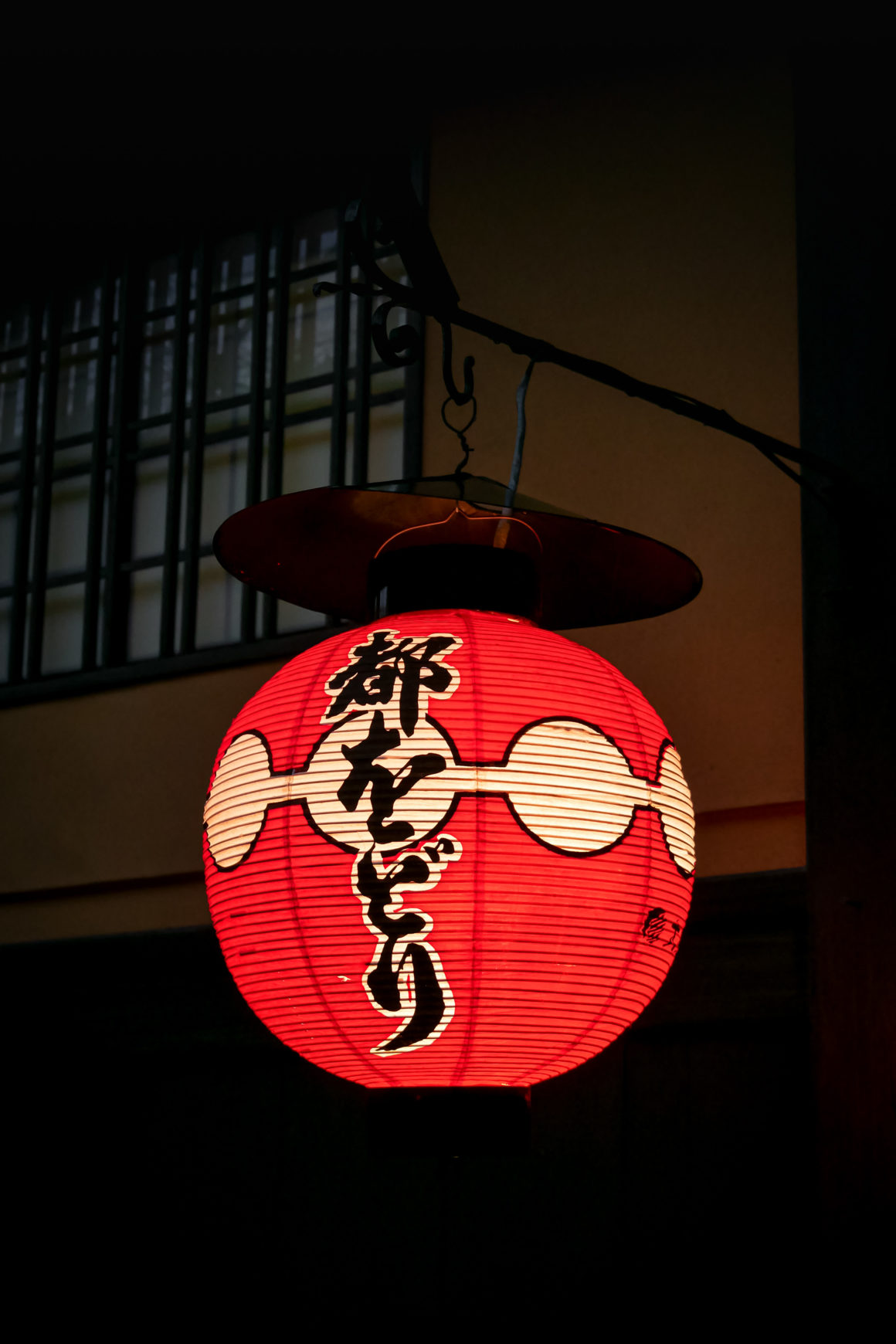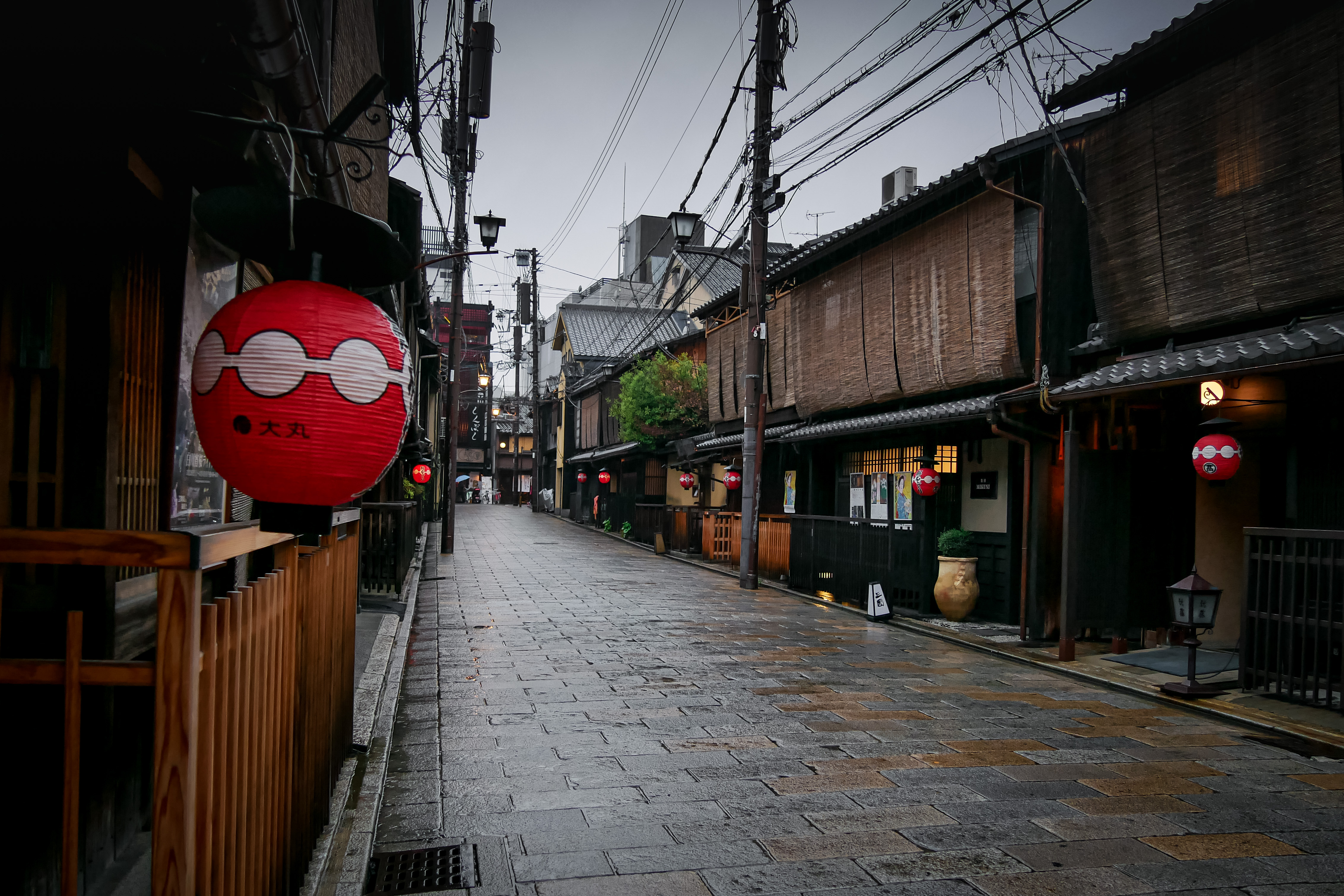DISPATCH
I left TYK and headed for Kyoto, the ancient capital of Japan. It is the full season of cherry blossoms and the right time to visit the magical city. Temples, shrines, ancient architecture, geishas, ancestral traditions, Kyoto is the city of times gone by. Coming a few days ago during my last day of work at TYK, I cannot wait to set foot in the middle of the streets full of history again. But spring and cherry trees attract tourists and the streets of Kyoto are teeming with people. Each temple, sanctuary, attraction is filled with a compact crowd. It disenchants me a little but it is like that. I will have to deal with it.
I stayed more than a week in Kyoto and I keep in memory a mixture of shimmering colors, magnificent kimonos, very beautiful buildings, certain moments of absolute grace mixed with a permanent hubbub, a cultural identity disappearing and more and more buildings munching on the city and its particularity.
Sanjûsangen-dô and its 1001 statues and the Ponto-cho district
Sanjusangendo is one of the first places I visited. It is a magnificent Buddhist temple, a long main wooden building of which houses 1001 statues of the goddess of compassion Kannon. A huge statue of Senju Kannon is placed in the center surrounded by an infinity of small statues. It is very impressive to see. The original structure of the building was built in 1164 and destroyed by fire in the 13th century before being rebuilt again. The exteriors of the temple are filled with cherry blossoms.
The Ponto-cho district stretches along the Takasegawa Canal and the Kamo River. It is the place of restaurants, bars, ochaya (tea house) and izakaya (tiny tavern). Very lively in the evening and full of tourists, I nevertheless very much appreciated the atmosphere of the small alleys where the past never seems very far.
Street music
Kiyomizu-dera temple
A Shinto shrine and a Buddhist temple share the enclosure of Kiyomizu-dera. It is one of the most popular tours in the city. I try to go there in the morning hoping to escape the crowds of tourists but it is a waste of time. The weather is gray but the beauty of the buildings dazzles me. The main building has been listed as Unesco Heritage since 1994. Shopping alleys where small stalls and tourist traps share the space lead to a very beautiful main door revealing the Kiyomizu-dera. I first linger in the Jishu-jinja shrine, dedicated to love and meetings, fascinated by its red colors and patterns. Then I explore the temple. Built in 780, the main temple is built on a mountainside and on stilts and seems to float in the air. The view of the city is very beautiful. Many people make offerings everywhere and I observe the jinrikisha, the rickshaws, in traditional clothes.
The Kodai-ji temple and its small bamboo grove
A little away from the tourist activity, the Kodai-ji temple seems a little haven of peace. Dedicated to the Rinzai branch of Japanese Zen Buddhism, the temple shelters very beautiful gardens filled with maple trees which illuminate the place (especially in Autumn). A small bamboo plantation offers me a moment of calm and contemplation and I observe two young women in superb red kimonos.
Animations and Hanami at the Yasaka shrine and Maruyama park
Maruyama Park is full of entertainment and Japanese people coming to celebrate Hanami. Huge cherry trees line the park below which a crowded crowds celebrate the arrival of Spring and observe the blooming cherry trees. A very beautiful sanctuary, the Yasaka-jinja dedicated to Susanô, the god of the oceans is also the place of many festivities. Traditional music concerts, entertainment, food stalls.
Dance performance in front of the Heian Shrine
The beat of the drums catches my attention as I progress towards the entrance to the Heian Shrine. A platform has been erected at the entrance and several schools are competing on dance performances. The school that receives the most votes from the public will be the winner. The dances are extraordinary. Mix of gymnastic movements, dance and martial arts, the young dancers are all very good. And their costumes are all more beautiful than the others. Hard to choose.
In the waning daylight, I explore the beginnings of the magnificent Heian Shrine. A huge red Torii demarcates its enclosure. A large courtyard and a few cherry trees highlight the superb building in red colors. Shinto shrine erected in 1895, the place takes its name from the Heian period in the history of Japan, when Kyoto was still the imperial capital. In the approaching twilight, the place seems to emanate a very special aura.
Drums
Fushimi Inari Taisha
Extremely well known and therefore very touristy, the superb Fushimi Inari Taisha shrine is the largest Shinto shrine in Japan. Dedicated to the goddess of rice and wealth, Inari, the sanctuary was built in 711. The place is particularly impressive because of the enormous number of torii stretching along a path traced in a small valley. A torii normally marks the break between the normal world and the sacred world. But the 10,000 torii of the sanctuary were funded by businessmen or companies and are therefore more like a form of advertising. Each torii bears the name of the person who financed it and its date of installation. The places are very beautiful and although very crowded I manage to take a stroll along the porticoes in a quiet atmosphere. Some are in better condition than others but the repetition of the shapes and the red color form a very graphic landscape suitable for photos.
Arachiyama and its bamboo grove
A little outside of Kyoto, there is the Arashiyama bamboo grove. Extremely well-known too, the bamboo forest stirs the imagination. But I cannot help but be disappointed by the size of the bamboo plantation. Barely 500 meters crossing and the visit ends. A bit short. But the beauty of the reflections on the trunks, the repeated patterns and the soft rustle of the leaves according to the wind still deposit a rather magical atmosphere instead. Considered a symbol of strength and used to repel the spirit, bamboo is an important symbol in Japanese mythology.
The temple of the golden pavilion
Early in the morning I go see Kinkaku-ji, the Rokuon-ji Buddhist temple north of Kyoto. Listed as a UNESCO World Heritage Site since 1994, the place is very famous and attracts tourists like a light at night with butterflies. It is nicknamed the Golden Pavilion for its facades covered with gold leaf. Built at the end of the 14th century, the pavilion was burnt down many times.
The temple garden is already crowded and I almost give up the visit. You have to elbow to advance and each millimeter of empty space is immediately taken by storm by tourists spending endless times taking selfies or with the whole family. I go around the garden exasperated by the hubbub. All the Zen atmosphere so characteristic of Japanese gardens has disappeared.
The gardens of the Ryoan-ji temple
Fleeing from the crowd I take refuge in the outdoor parks of Ryoan-ji. Another Buddhist temple of the Rinzai Zen School. Its stone garden is very famous but I do not make the visit a little chilled by my previous experience. I take advantage of the free and relatively calm parks to relax. Very beautiful cherry trees deposit their flowers up to the surface of small ponds. Everything in the landscape invites to relaxation. Two elderly ladies dressed in pretty costumes maintain the gardens. Further on, schoolchildren in uniform and caps on their heads pass, holding hands.
Shimogamo jinja shrine
North of Kyoto is the beautiful Shimogamo-jinja. One of the oldest Shinto shrines in the country, dating from the 12th century, listed as a UNESCO World Heritage Site. A pretty Torii and a traditional bridge marks the entrance. The place is calm and I really appreciate the quiet atmosphere of the place. The shrine as everywhere in Kyoto is painted with magnificent red lines which gives it an undeniable style. All around extends the forest “Tadasu no Mori“, the “forest of truth”, a primitive forest having survived several fires.
The Silver Pavilion and the Path of Philosophy
It is raining heavily on Kyoto for my last days in the old capital. I still embark on my last visits. The Ginkaku-ji or Silver Temple is a little sad in the rain but the eras are deserted. The rain made the tourists flee, it is perfect. Buddhist temple made of lacquered wood dating from the 15th century, the building is surrounded by a magnificent dry garden with refined aesthetics.
I then walk the well-known Path of Philosophy, desert compared to a few days earlier. Winding along the canal, the whole is bordered by numerous cherry trees. It takes its name from the Japanese Zen philosopher Kitaro Nishida who wandered there during his daily meditation. In the rain the place loses a bit of its charm but at least I am entitled to an almost absolute calm.
Shinbashi-dori alley
I finish my visit of Kyoto by the Gion district, the heart of the city, where I have already been during the week but which is, in the rain, almost empty. It is the historic district. The one of yesteryear. Where the houses still have their traditional architecture and where paper lanterns light up the stalls. The pedestrian street is lined with beautiful machiya, traditional city dwellings and authentic ochaya (tea houses where geishas entertain customers). Some young women in pretty kimonos pass. I feel immersed in the past and a strong sadness invades me. What a pity that modernity erases all this. The soul of Japan is here. In ancestral traditions, in this architecture, in this way of living. I stay a long time in the rain walking along the small preserved district. Despite a horde of tourists far too noisy for me, my visit to Kyoto will prove to be a little gem of beauty and a very enriching dive into the past.

